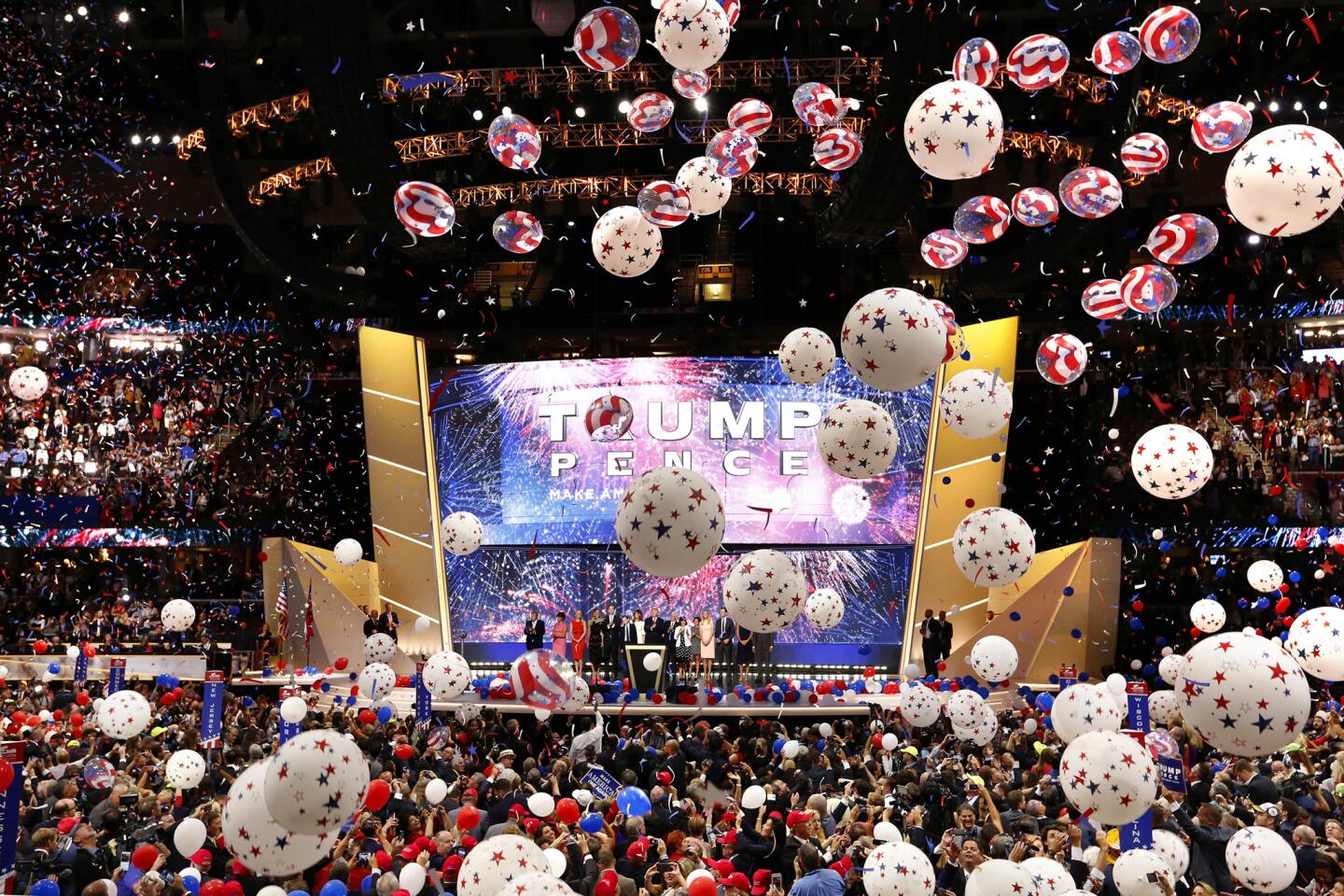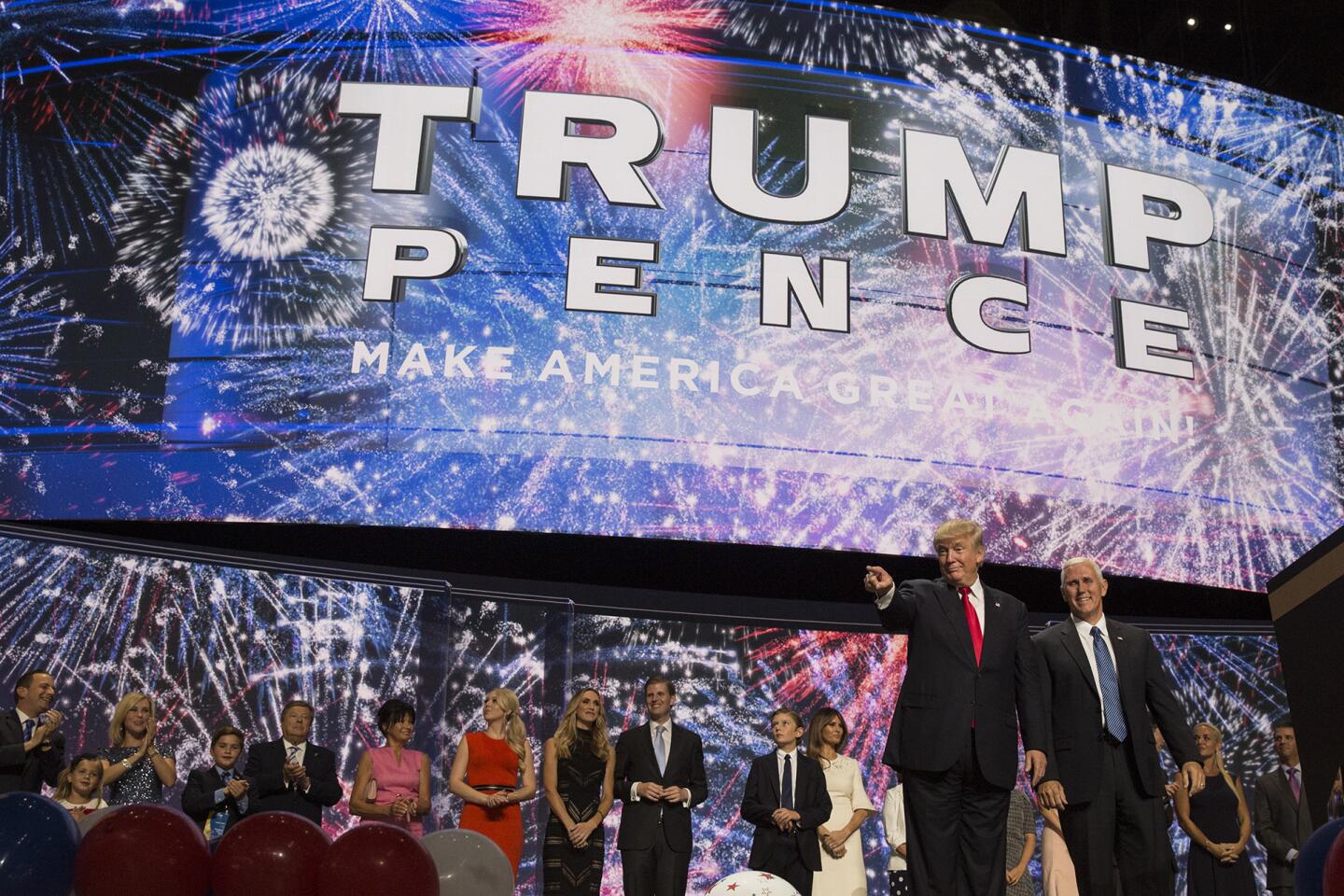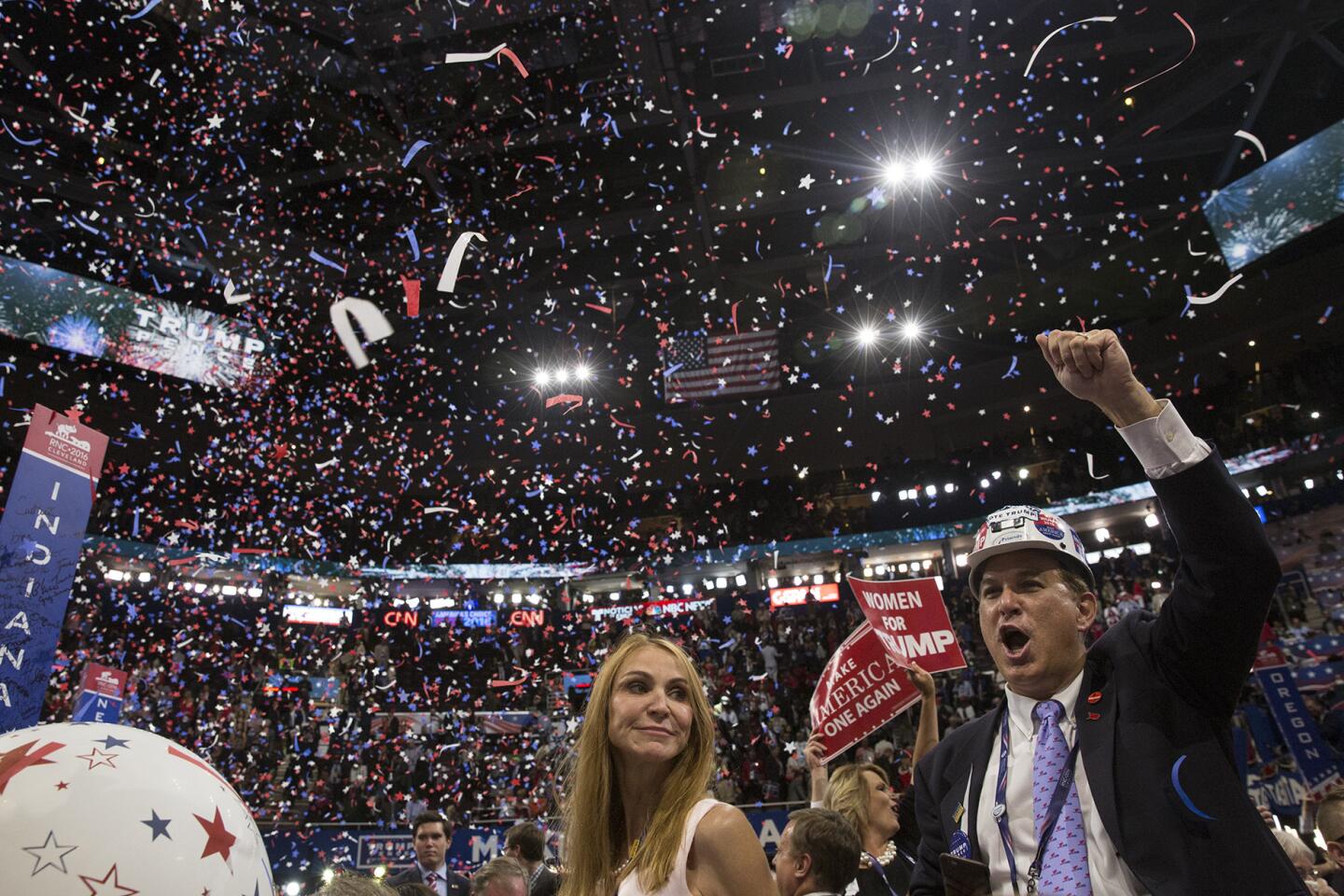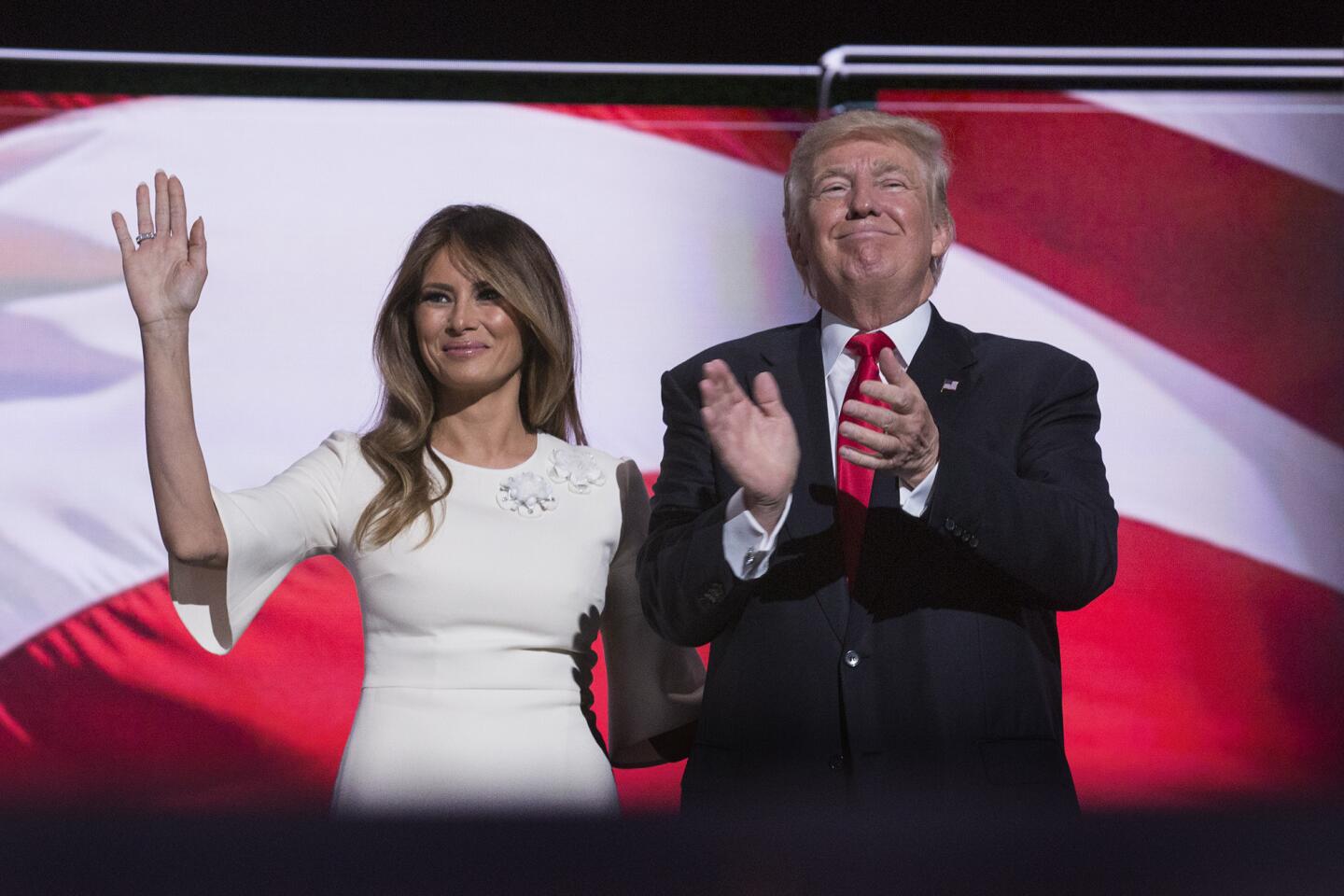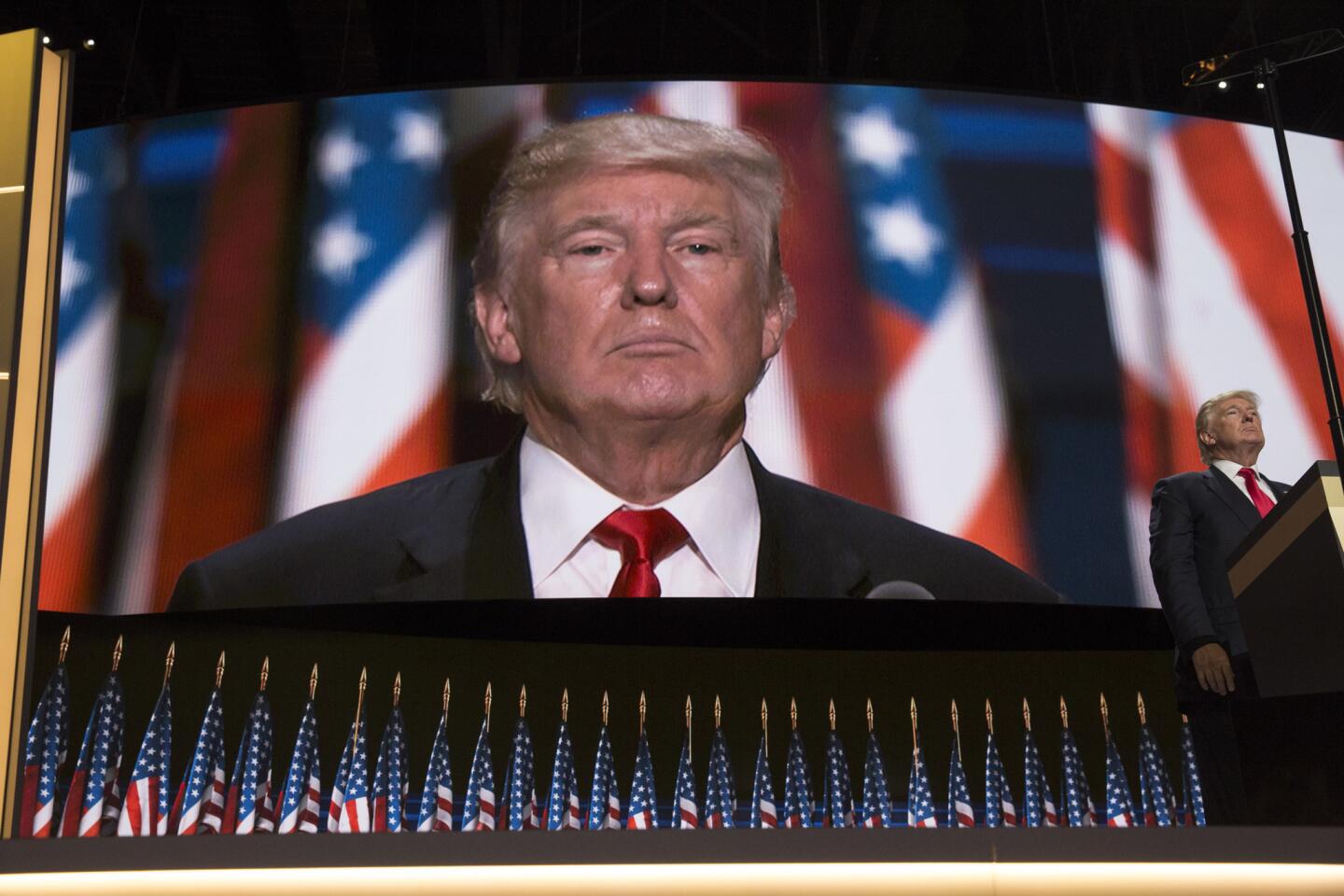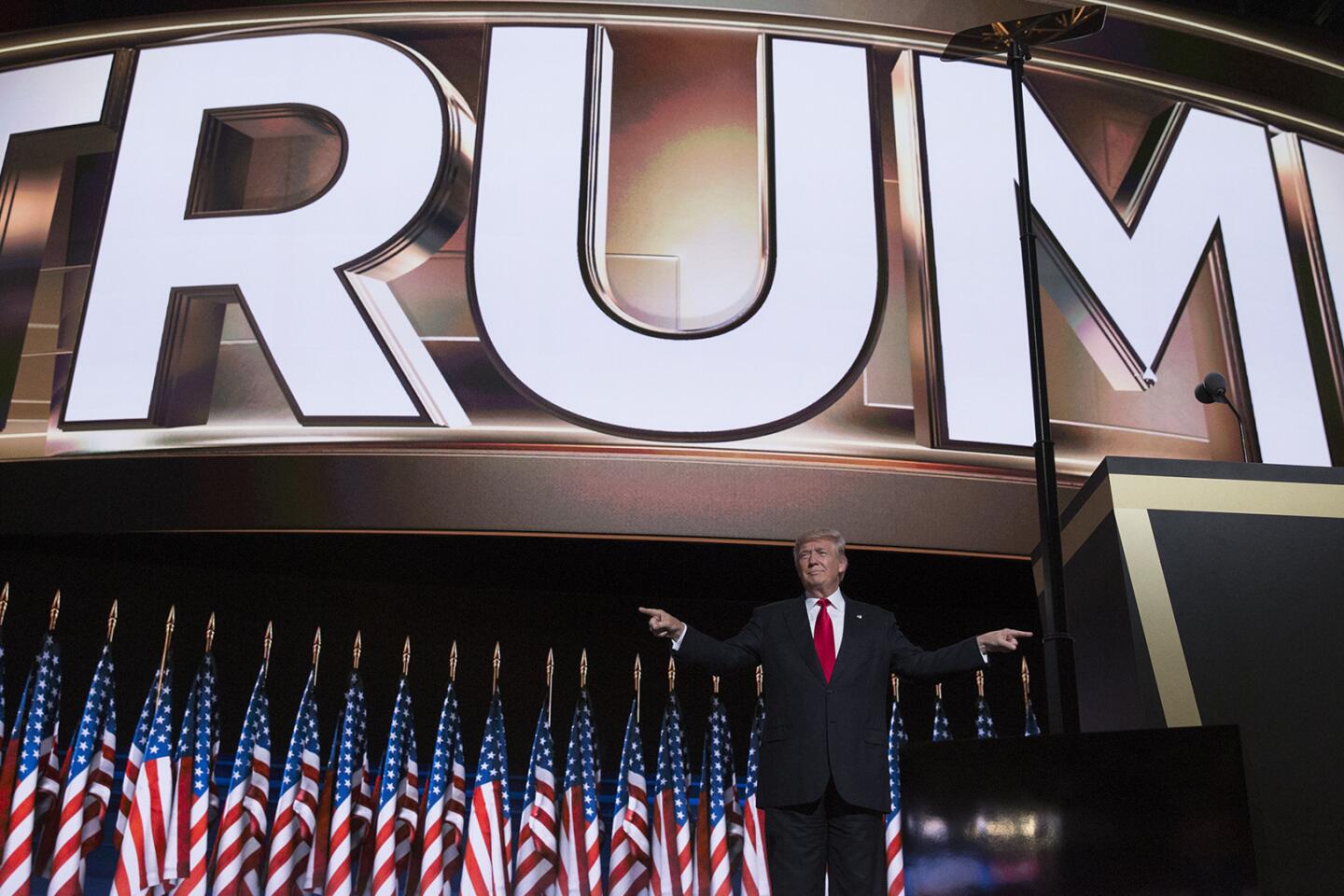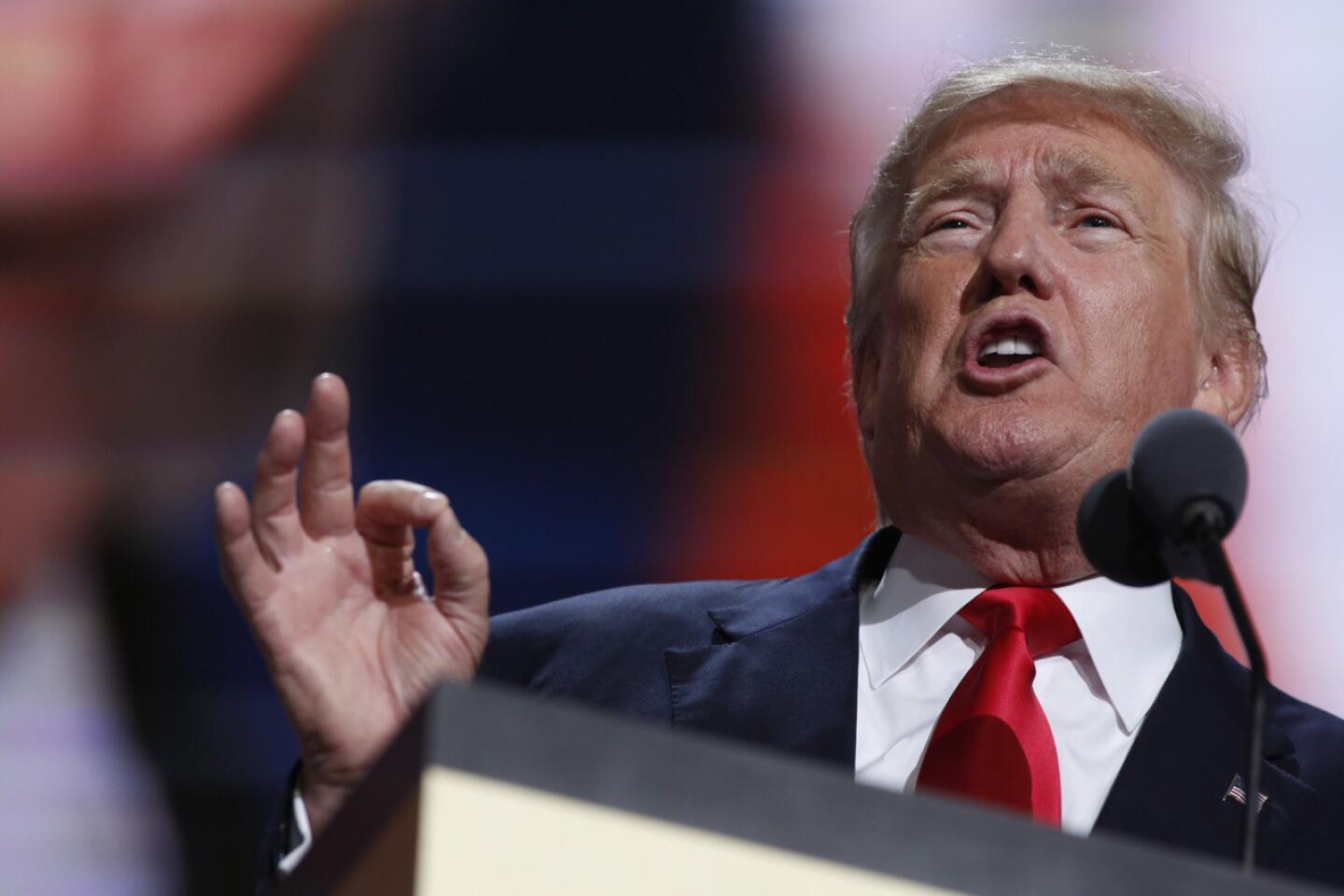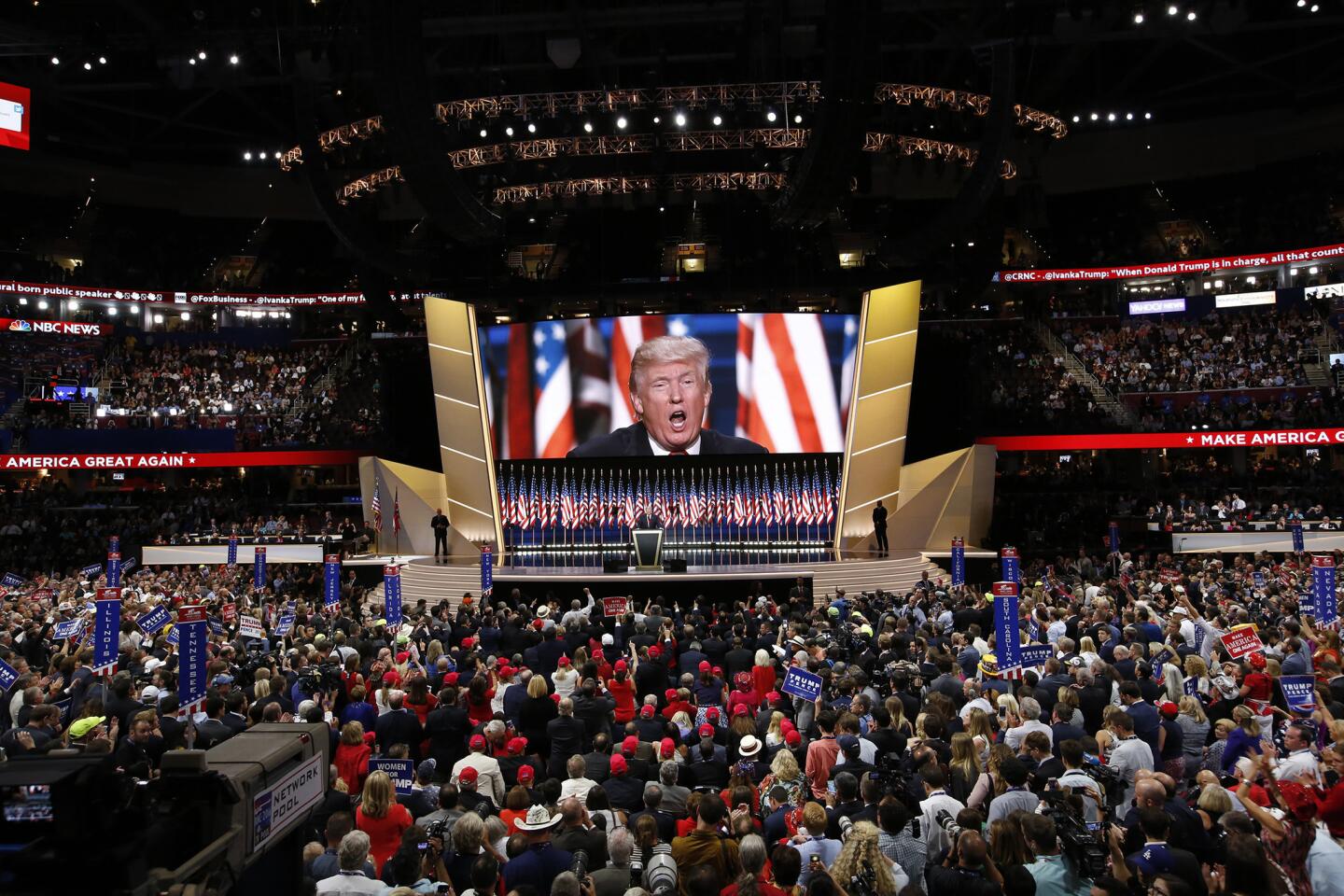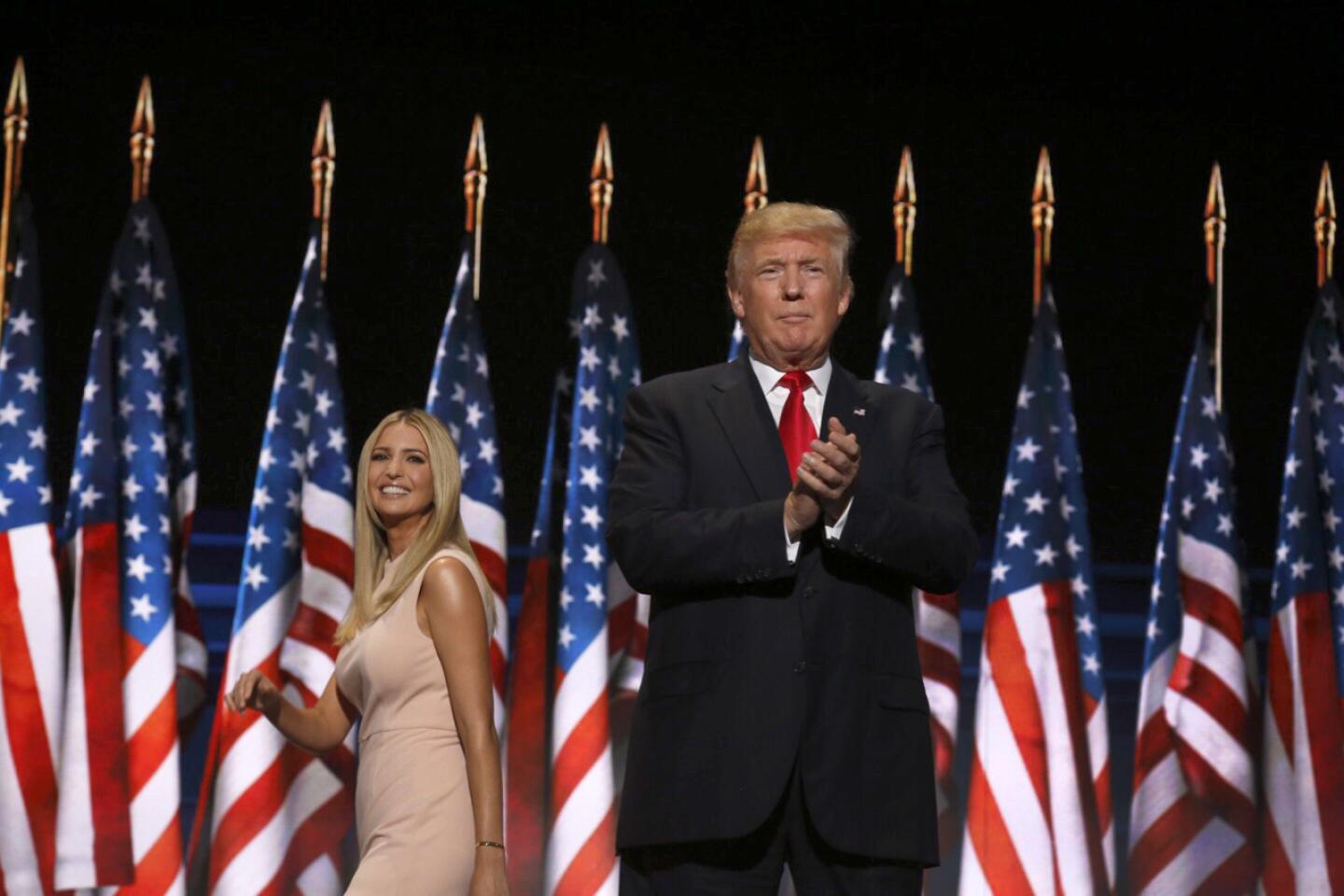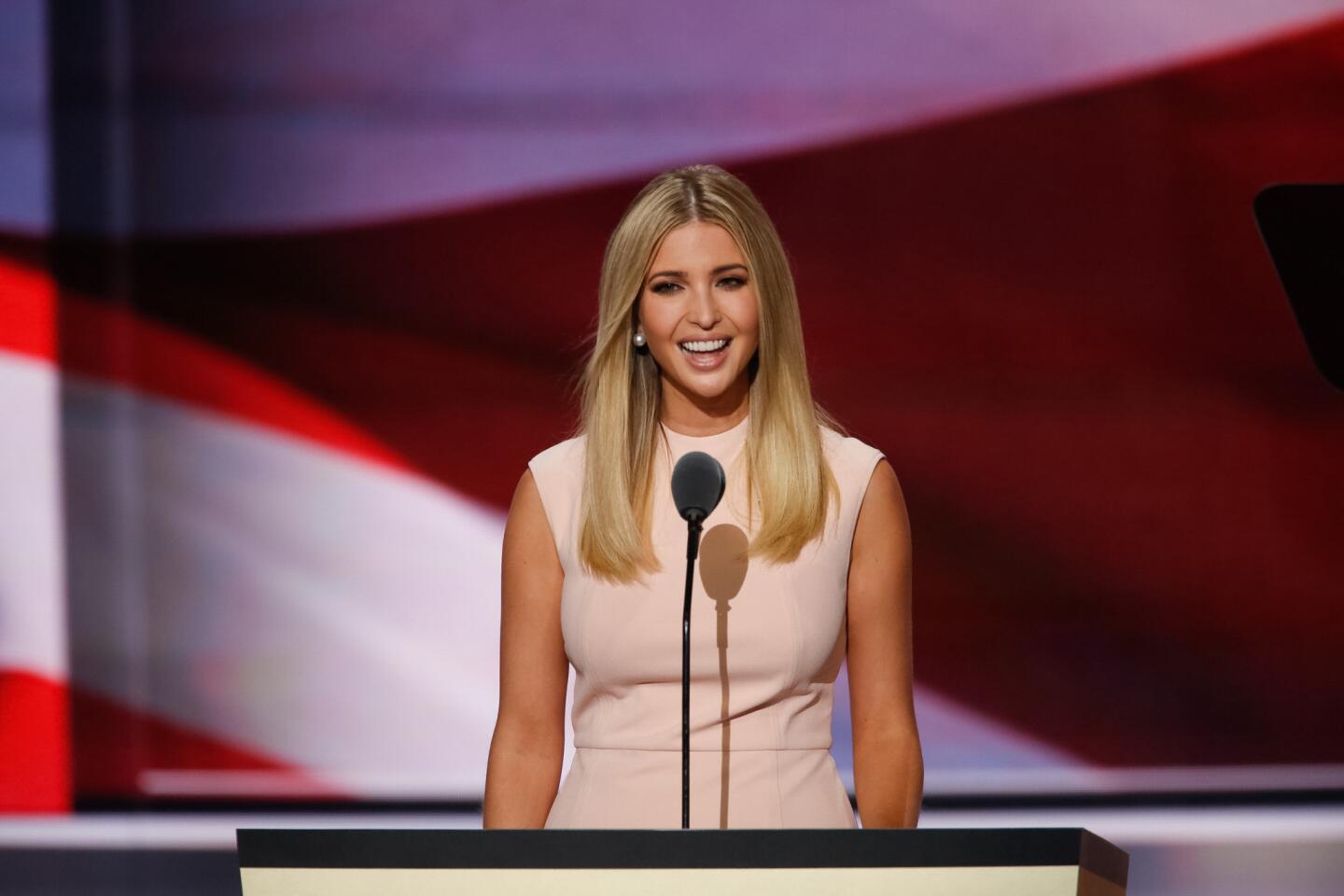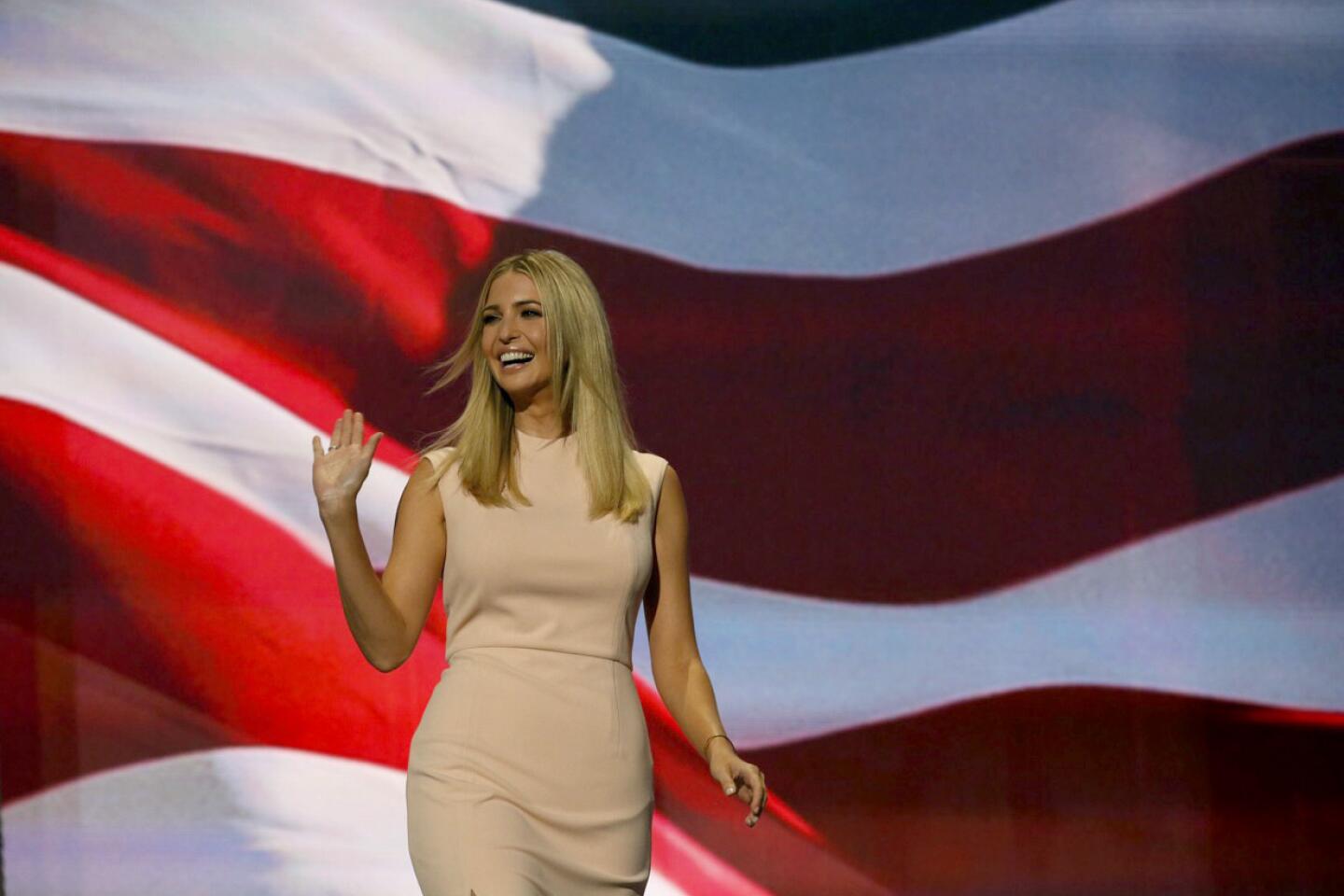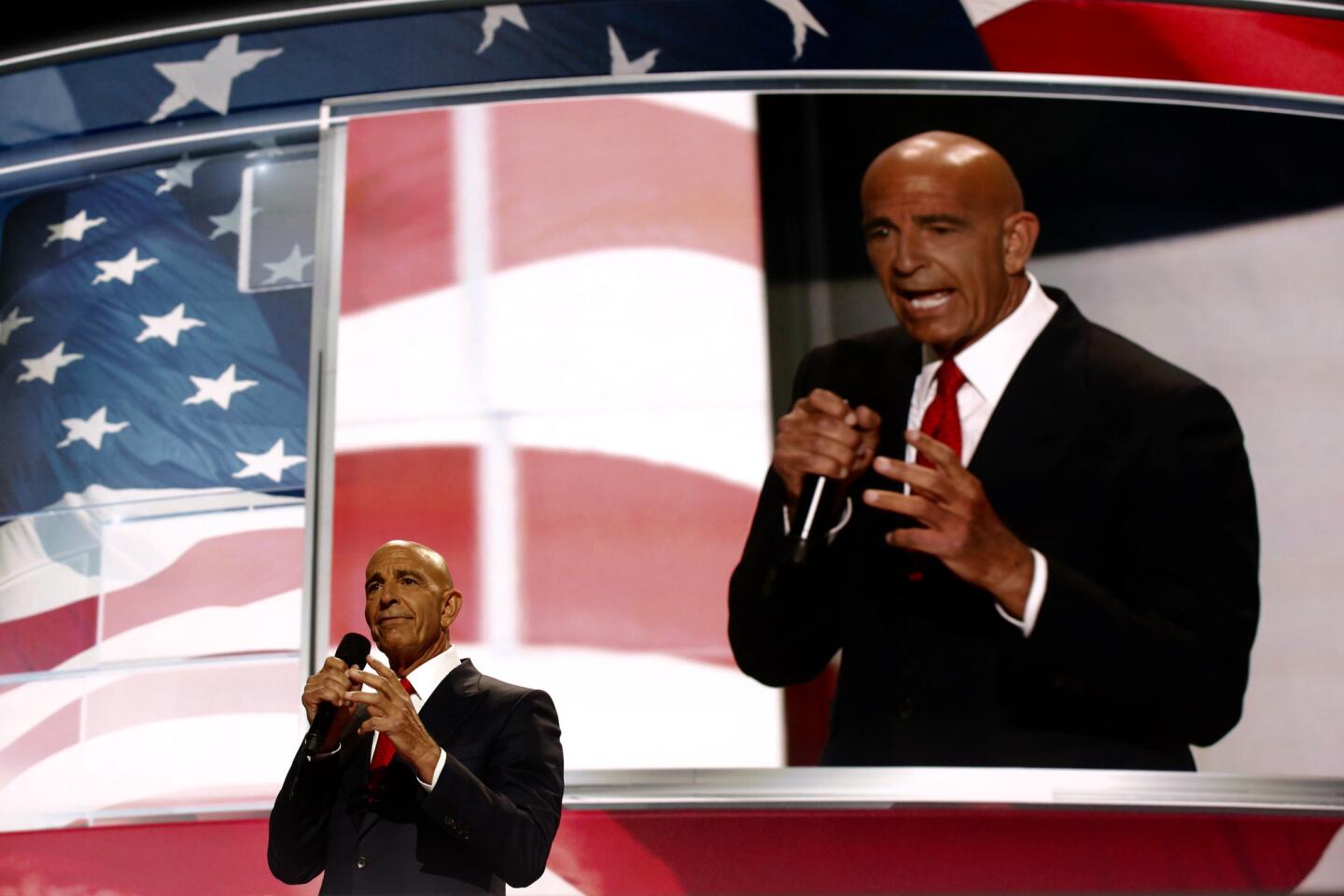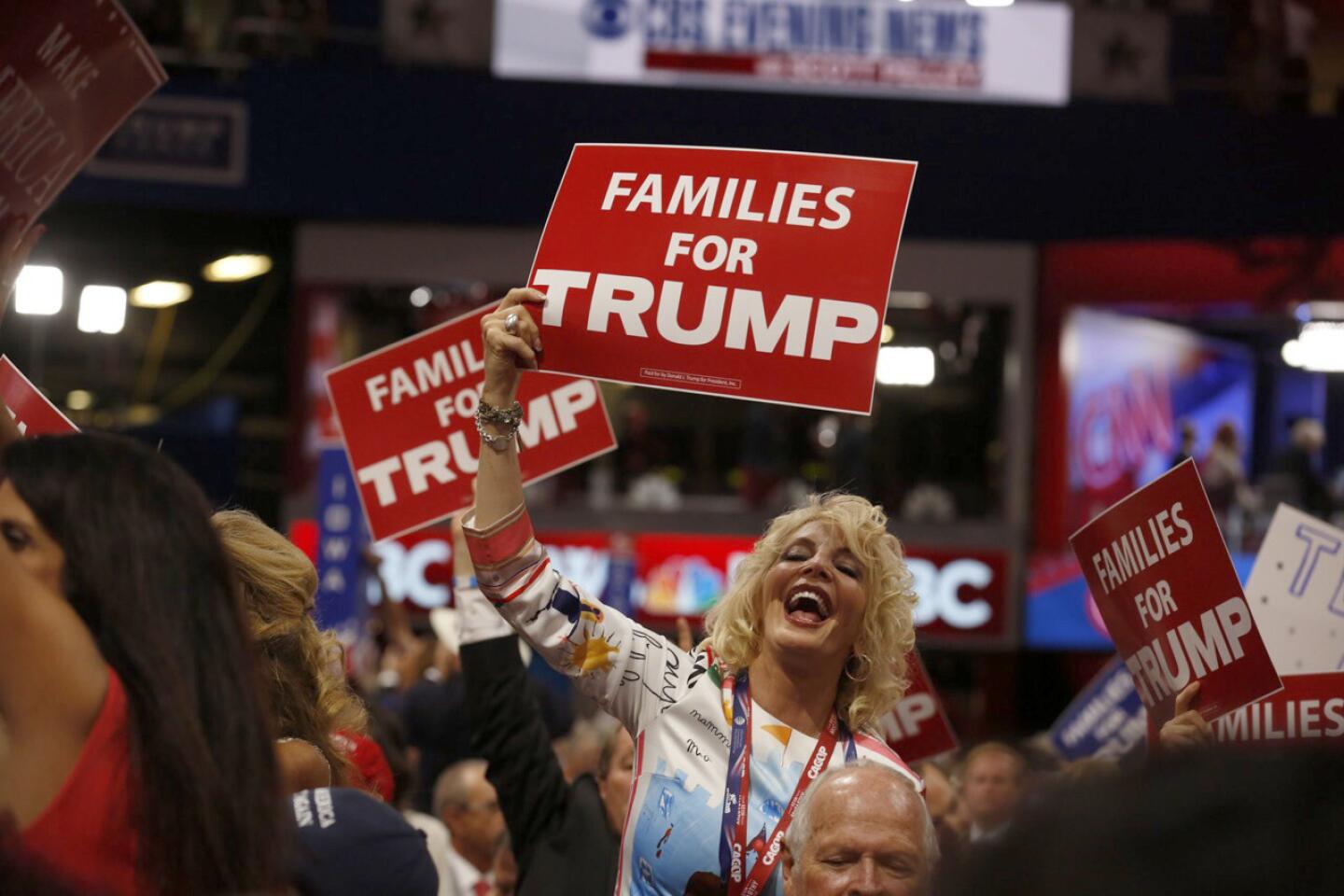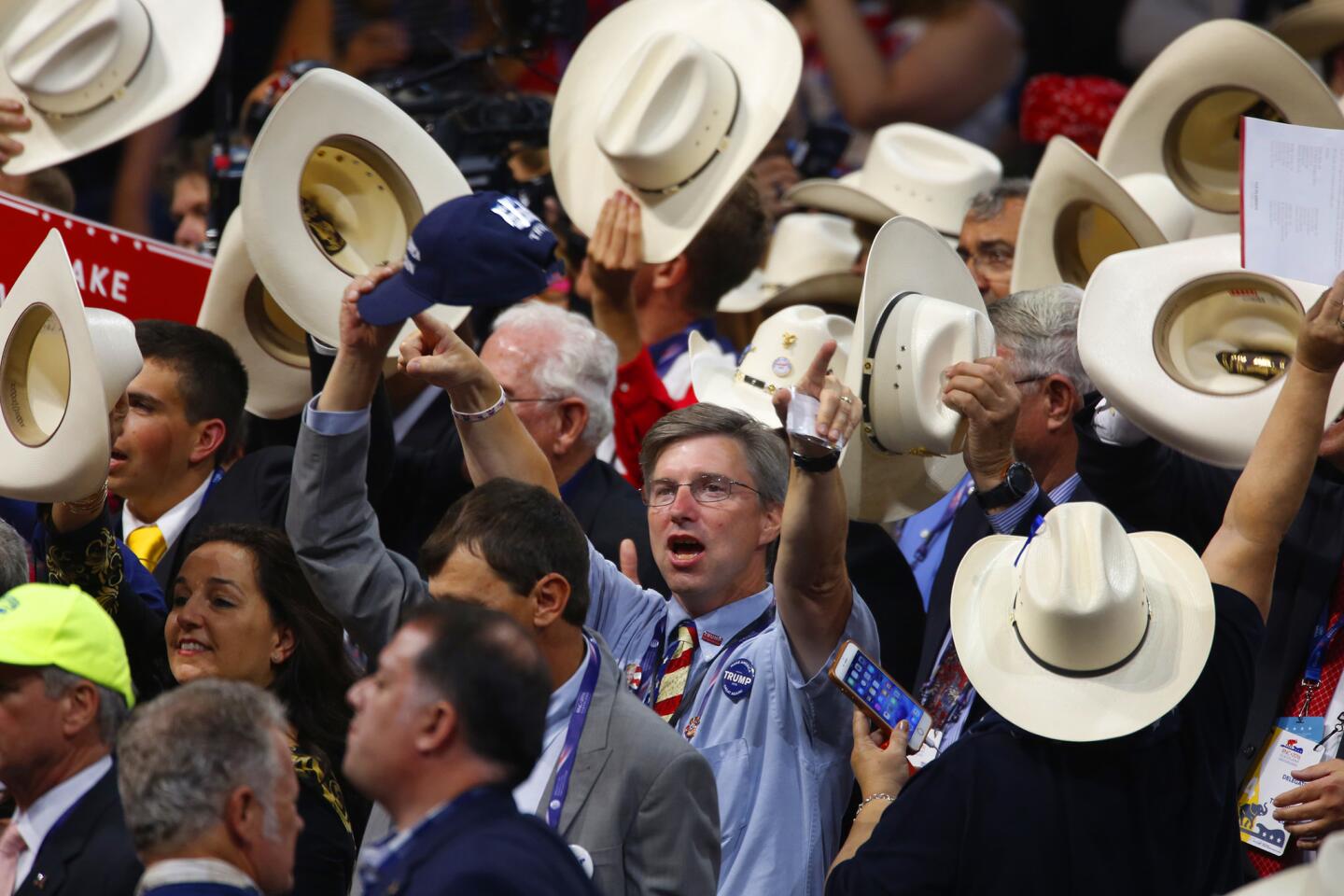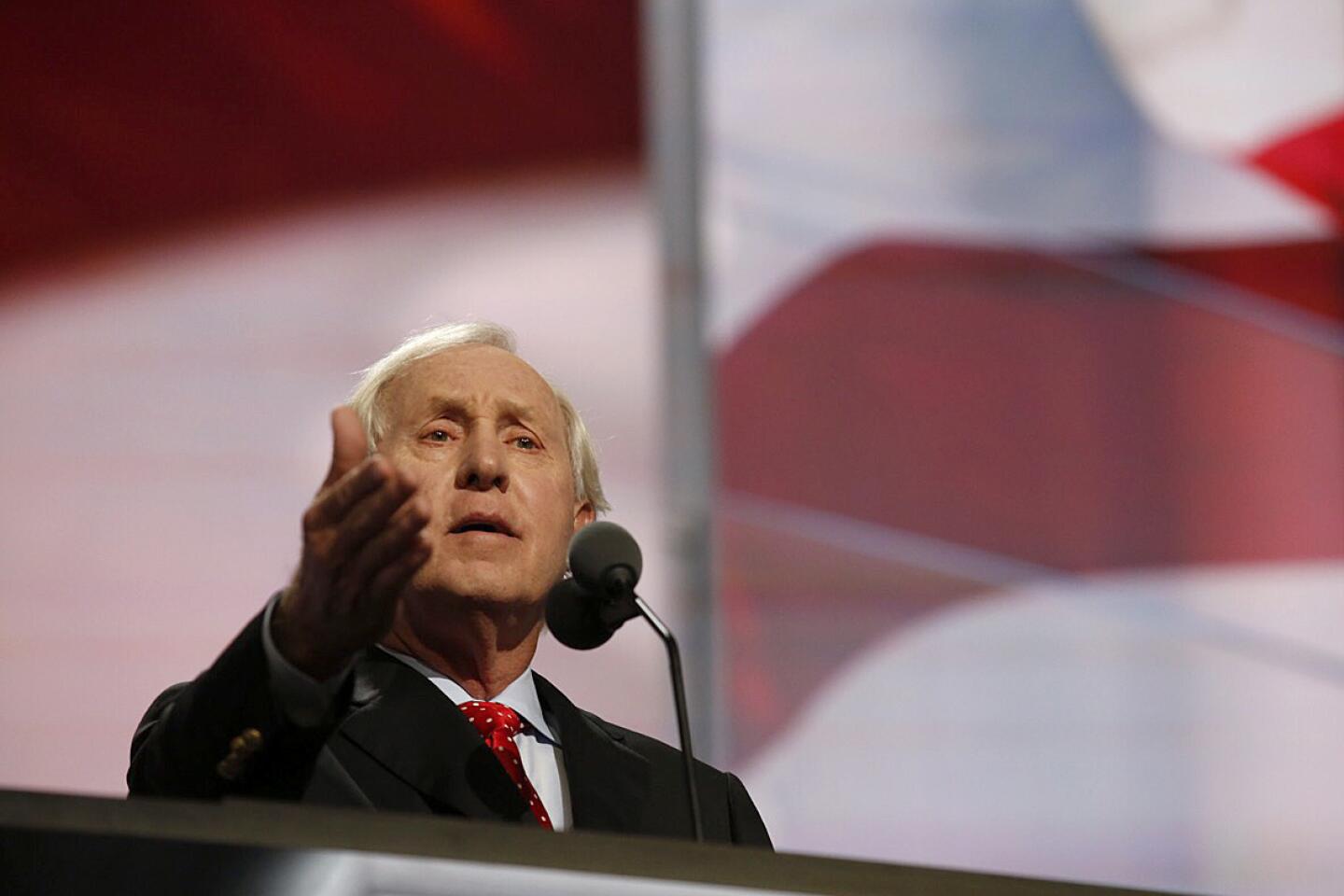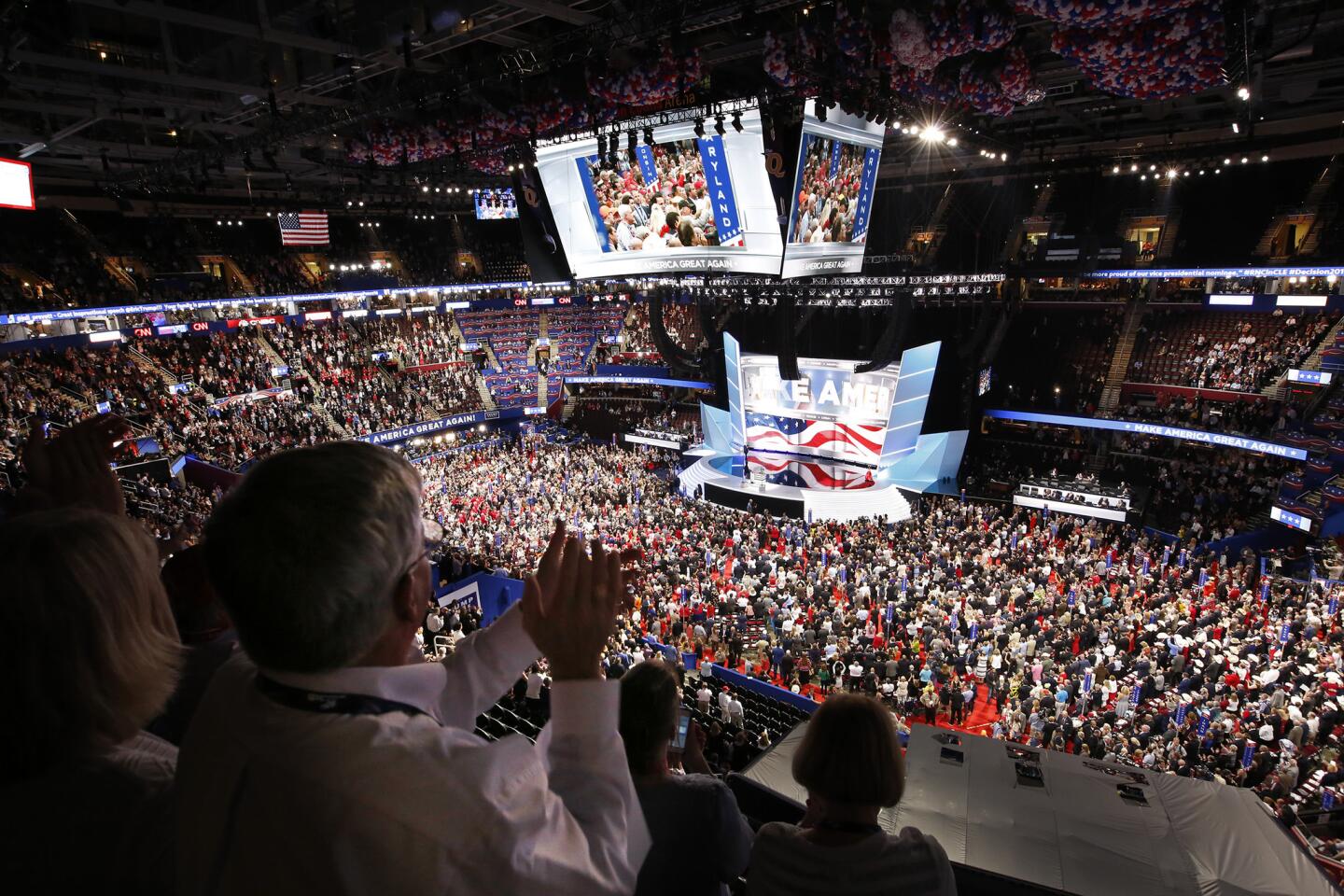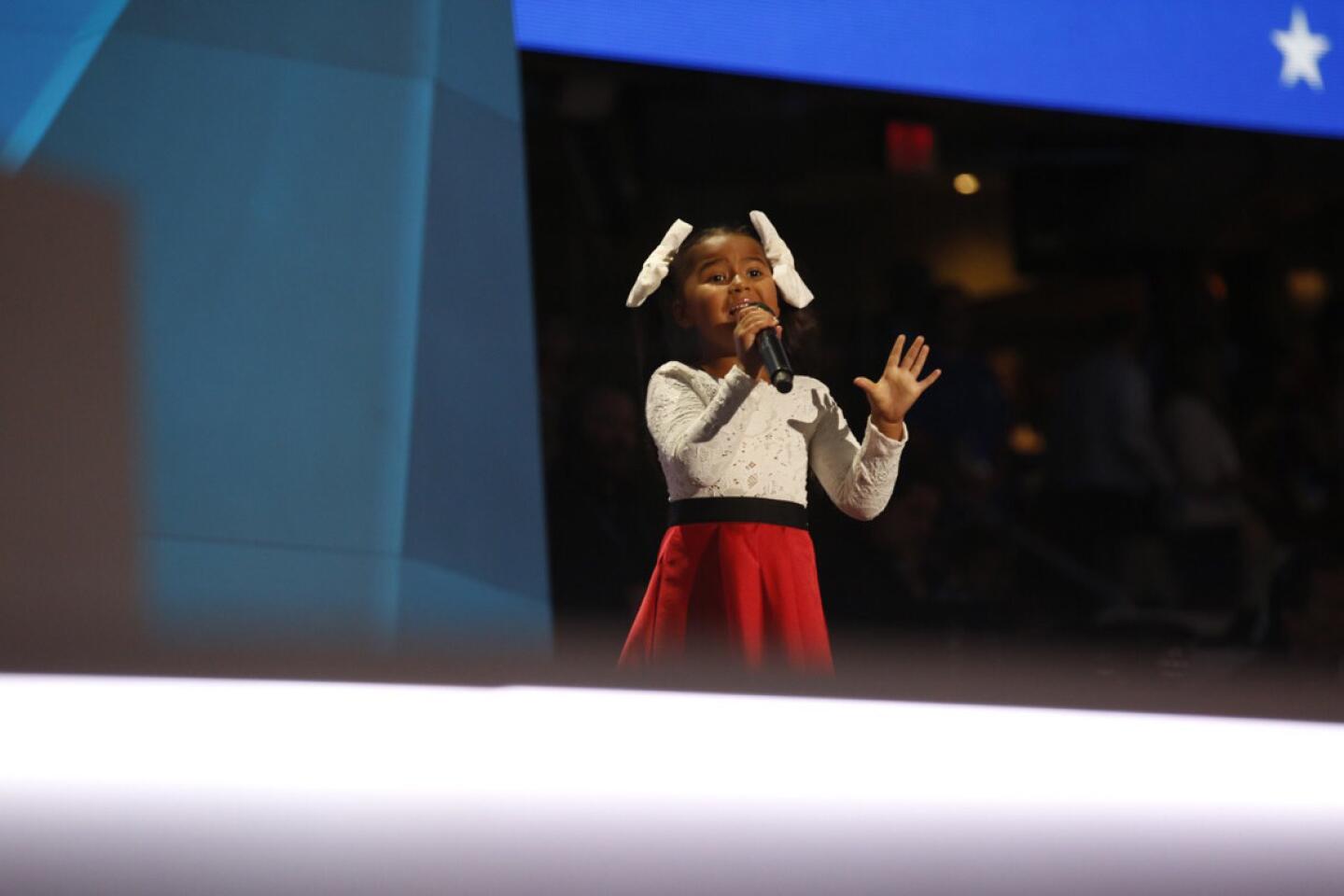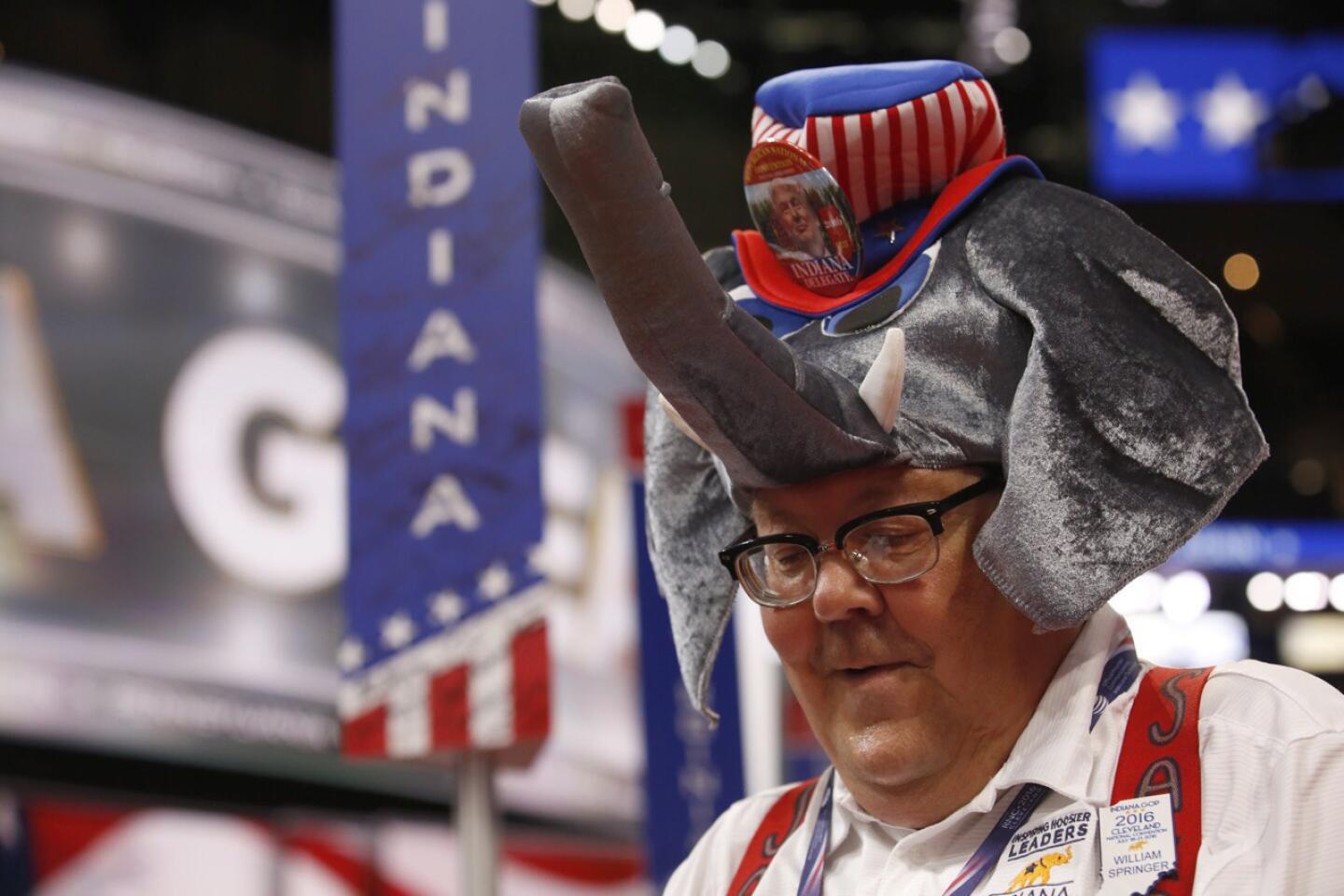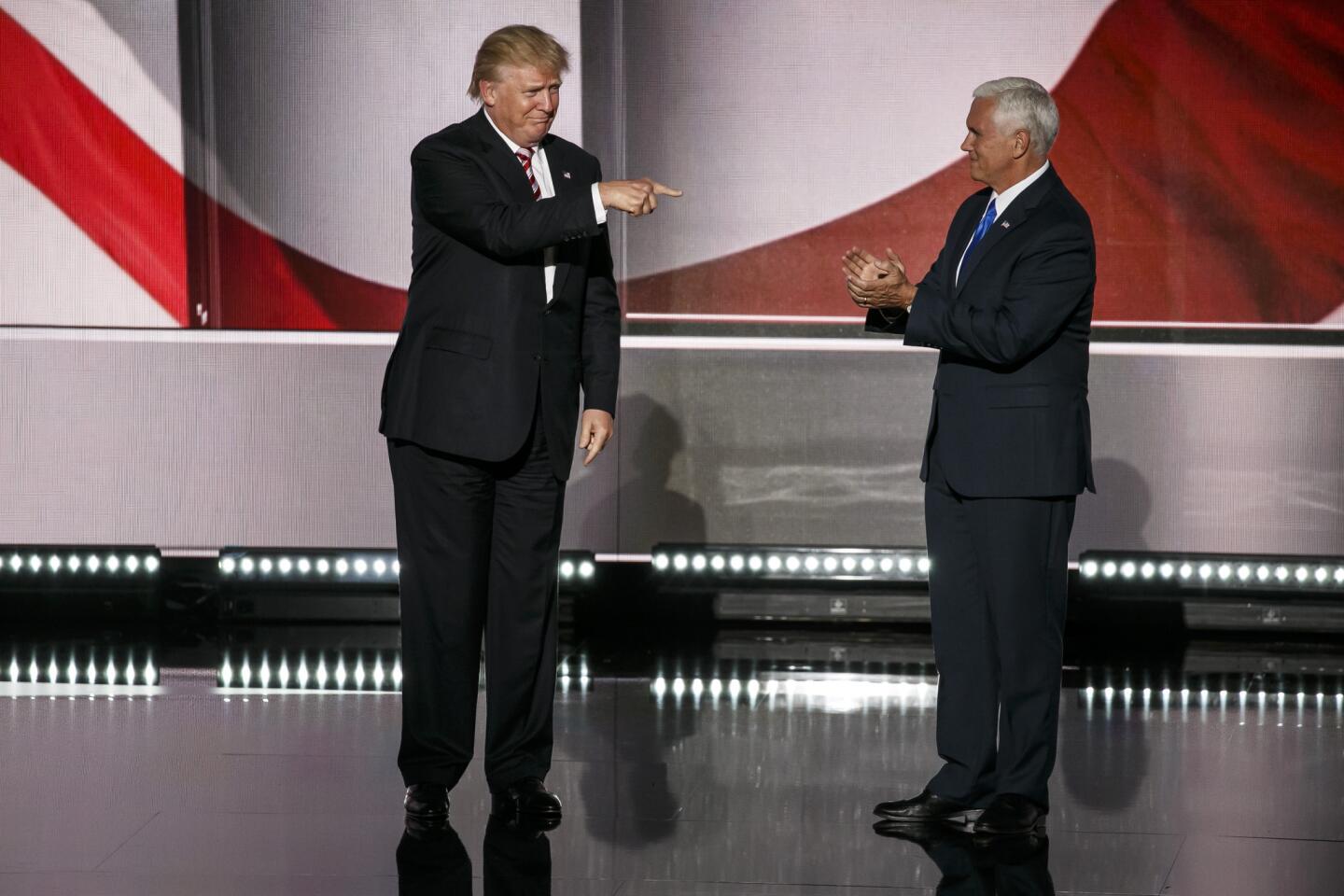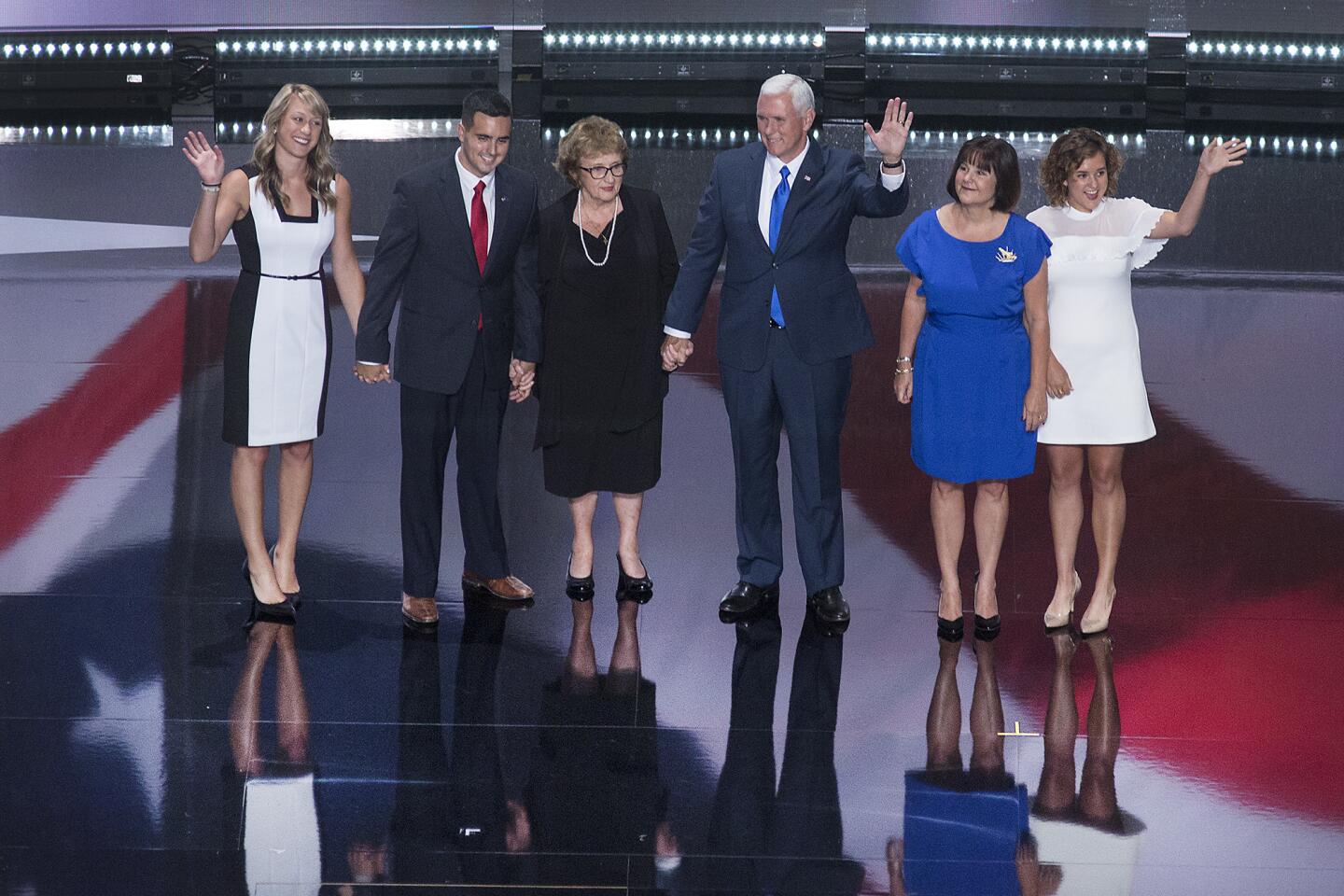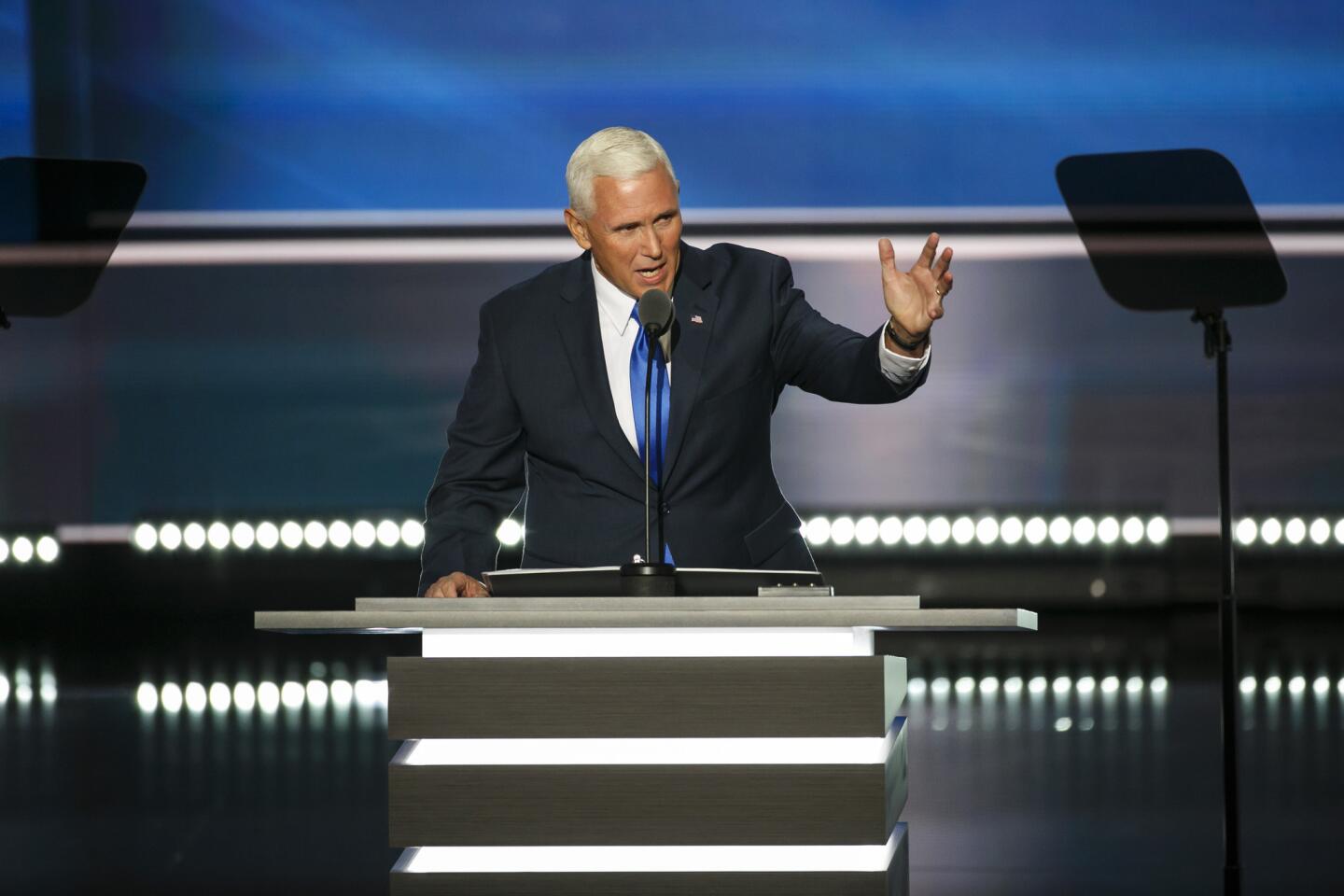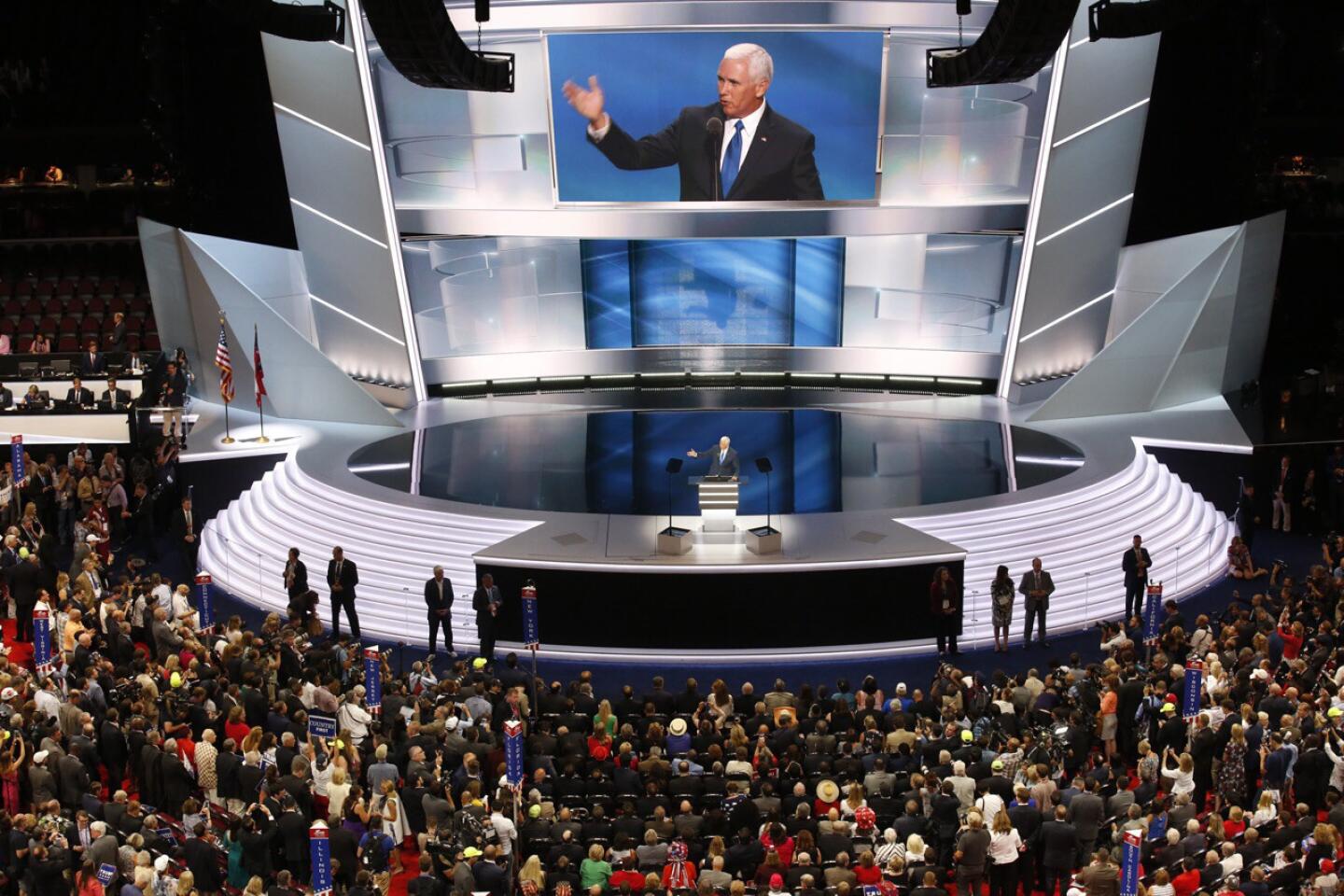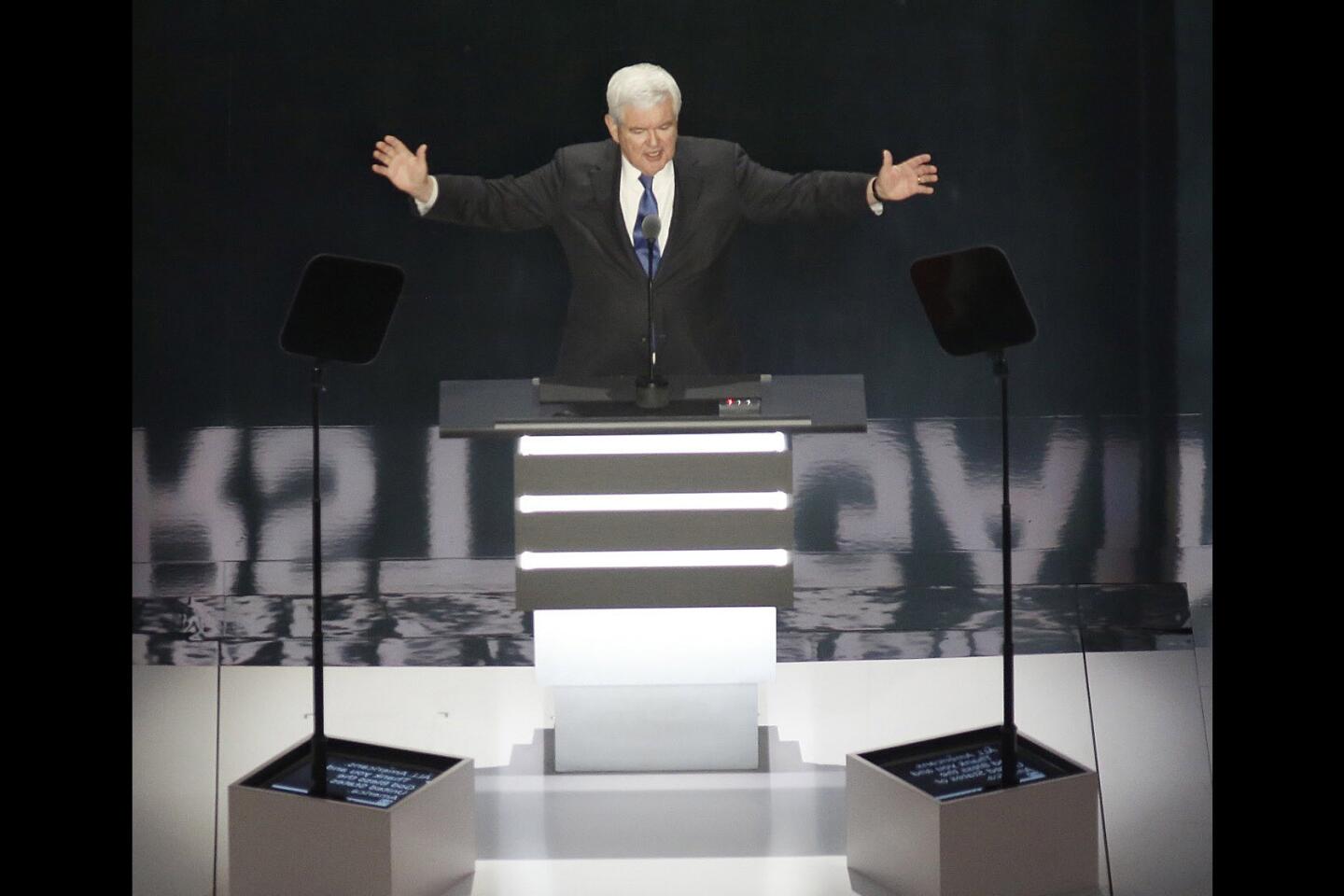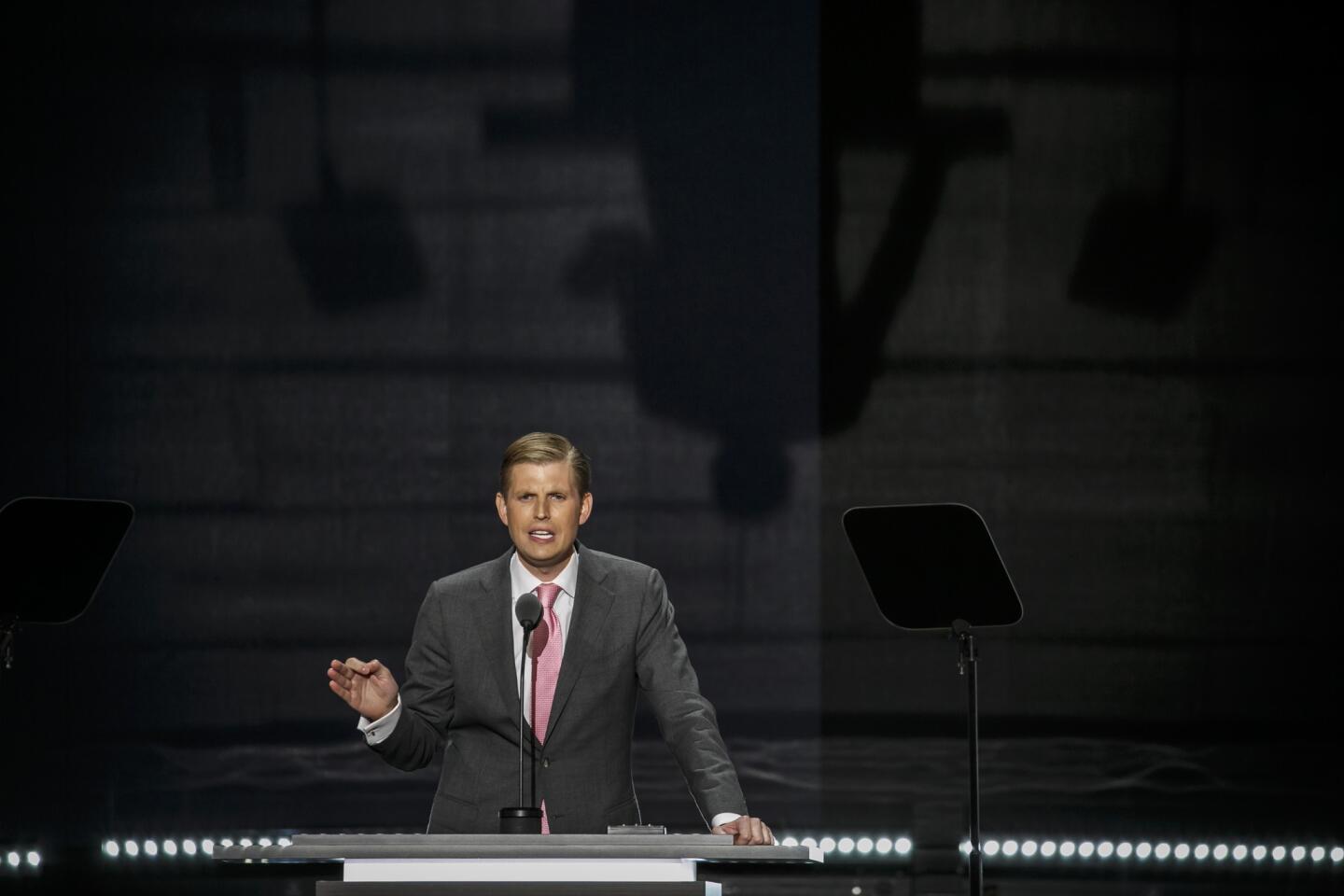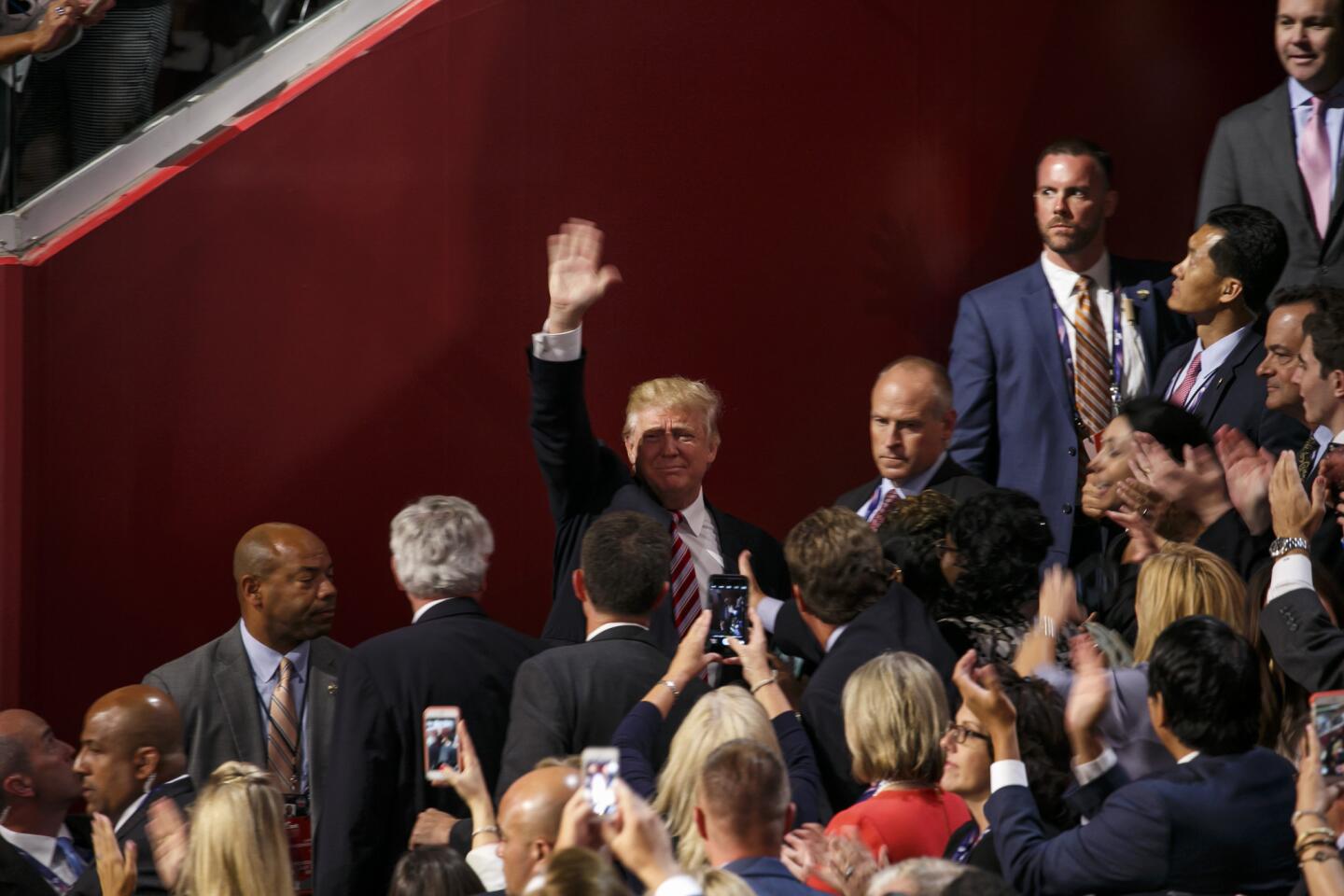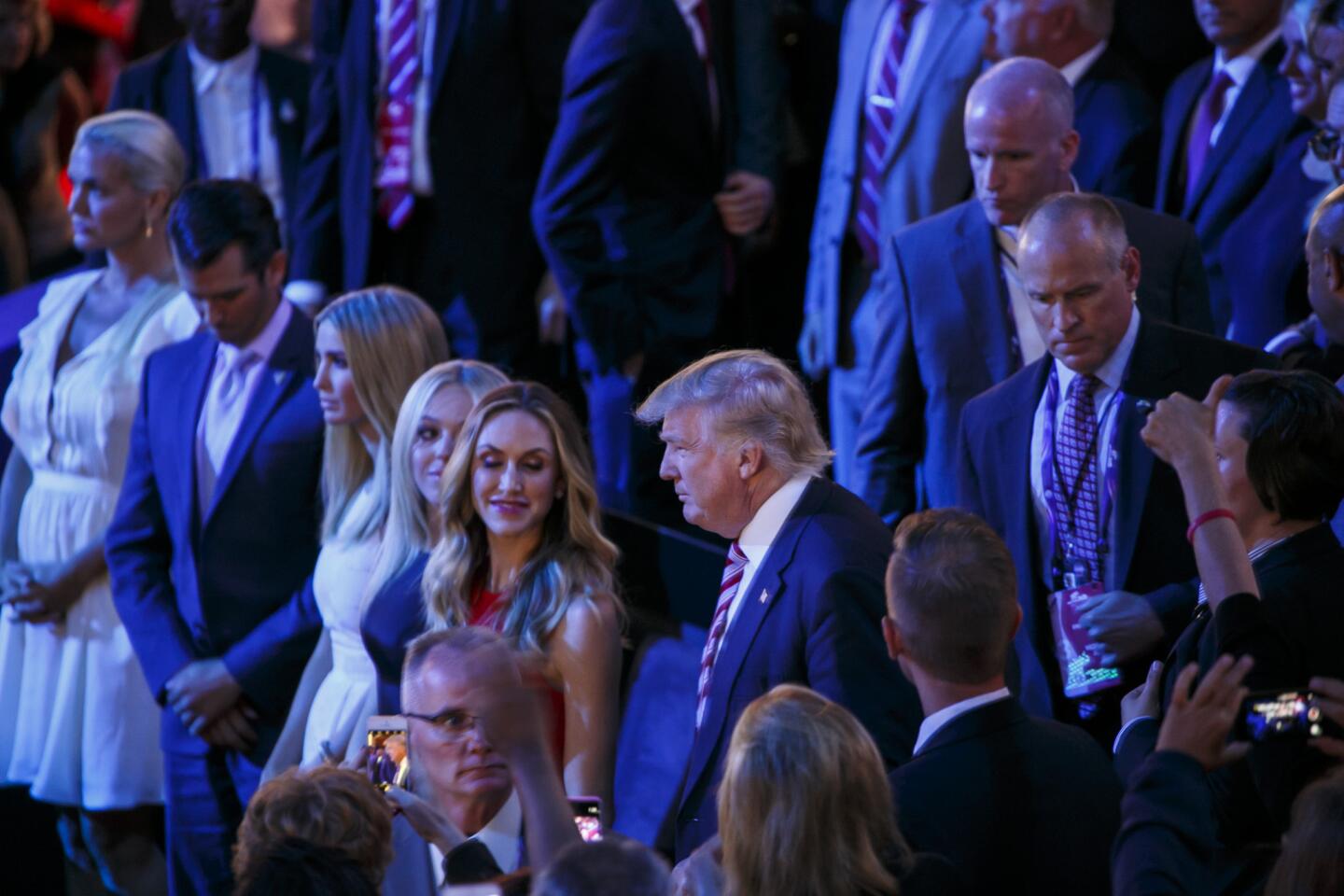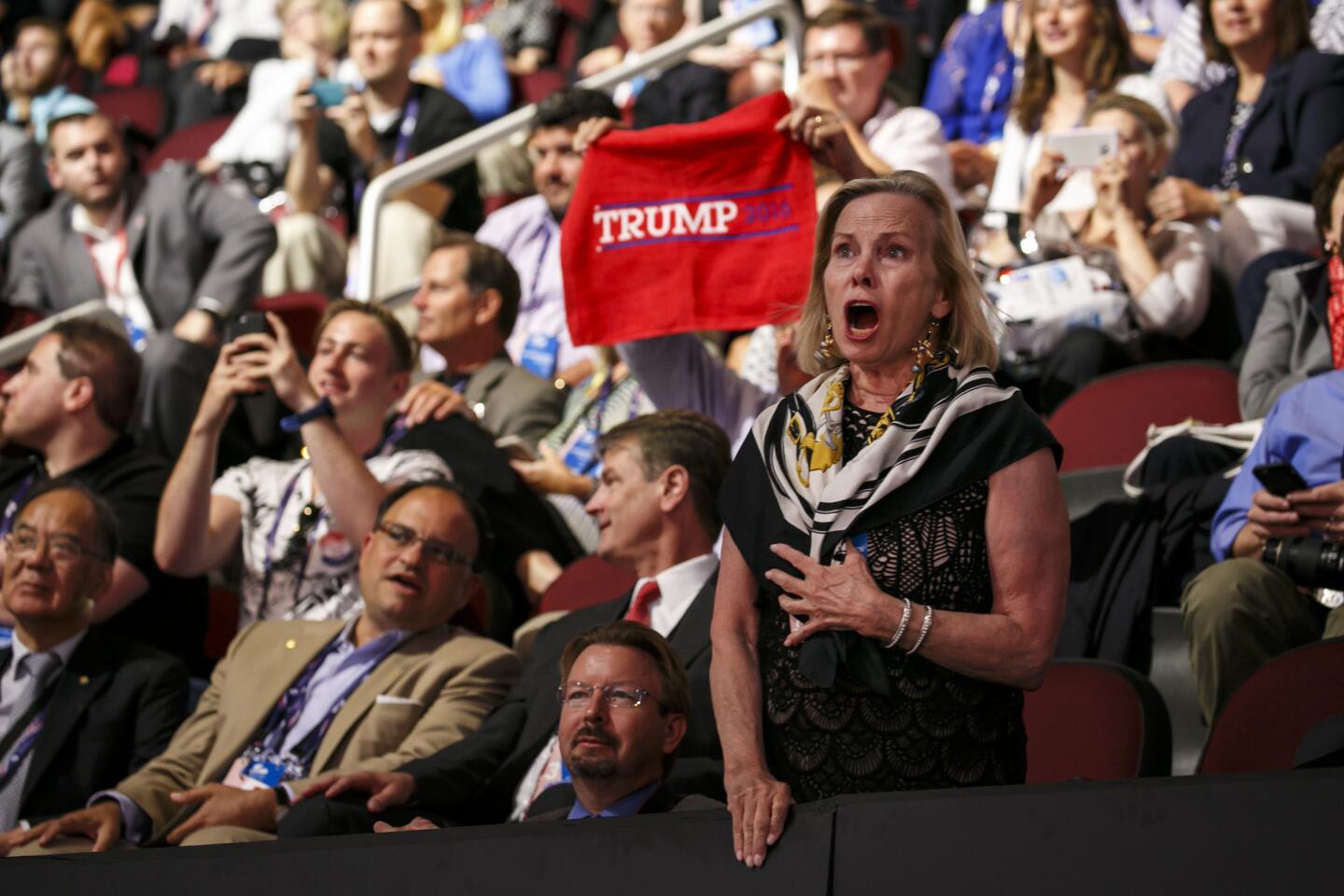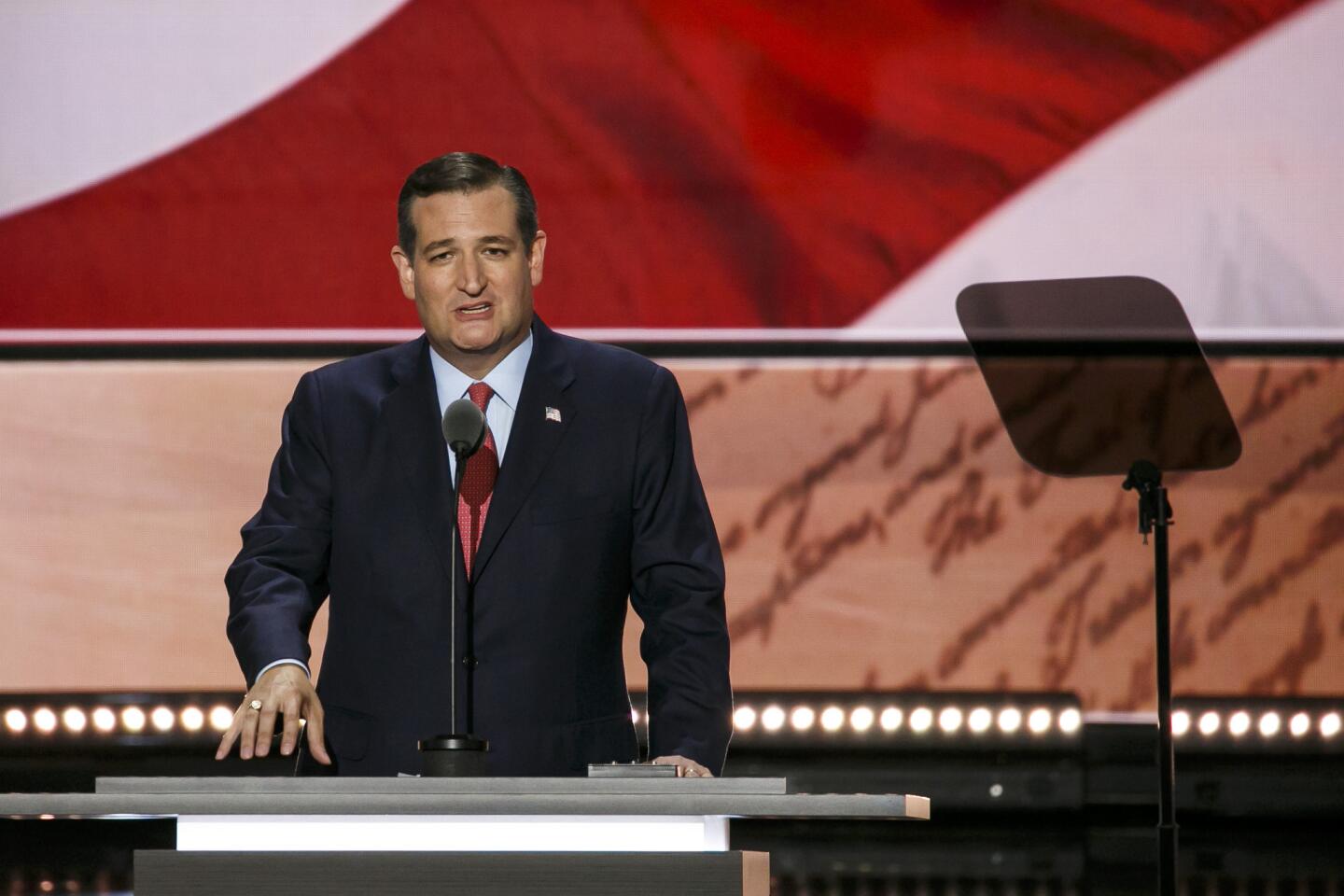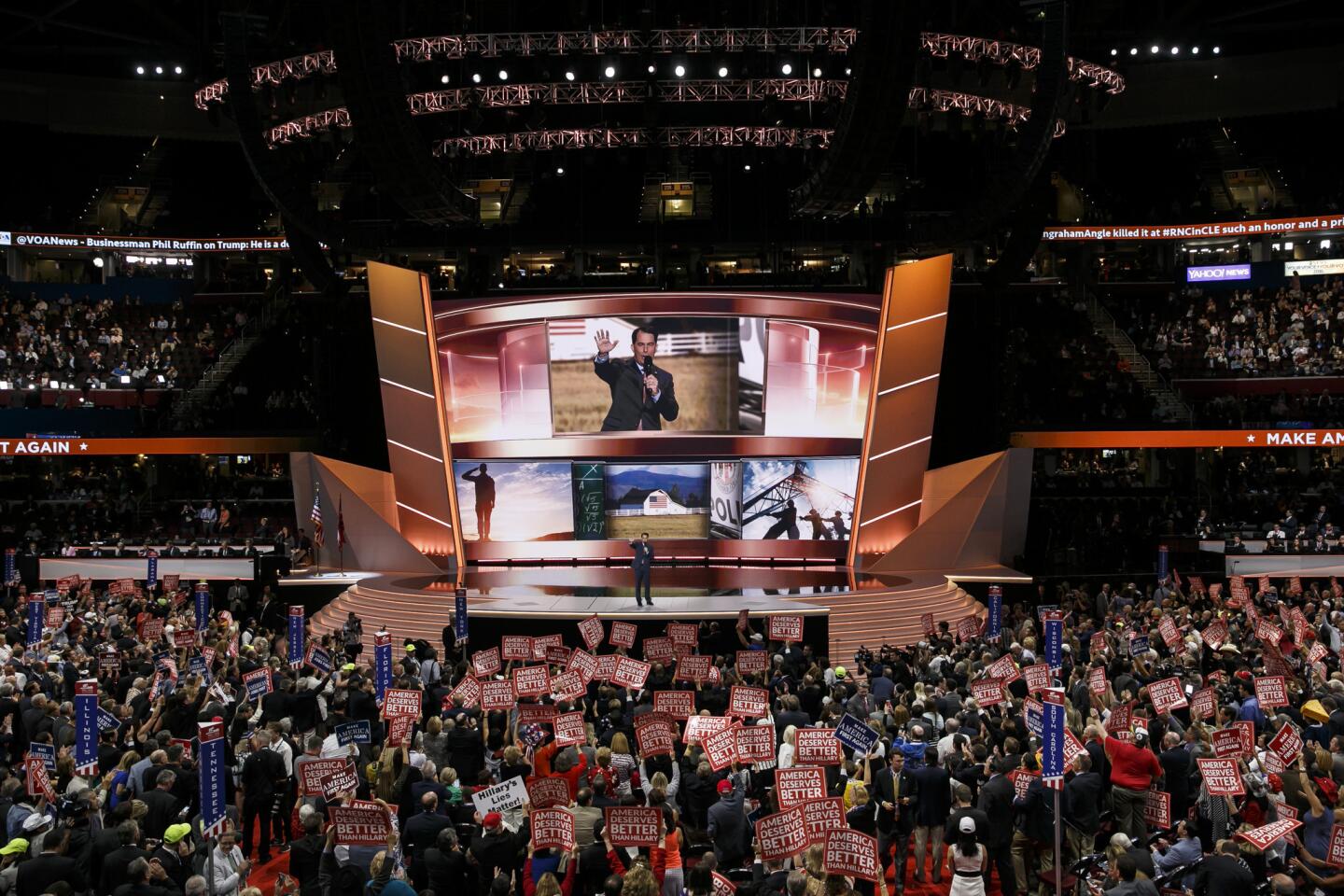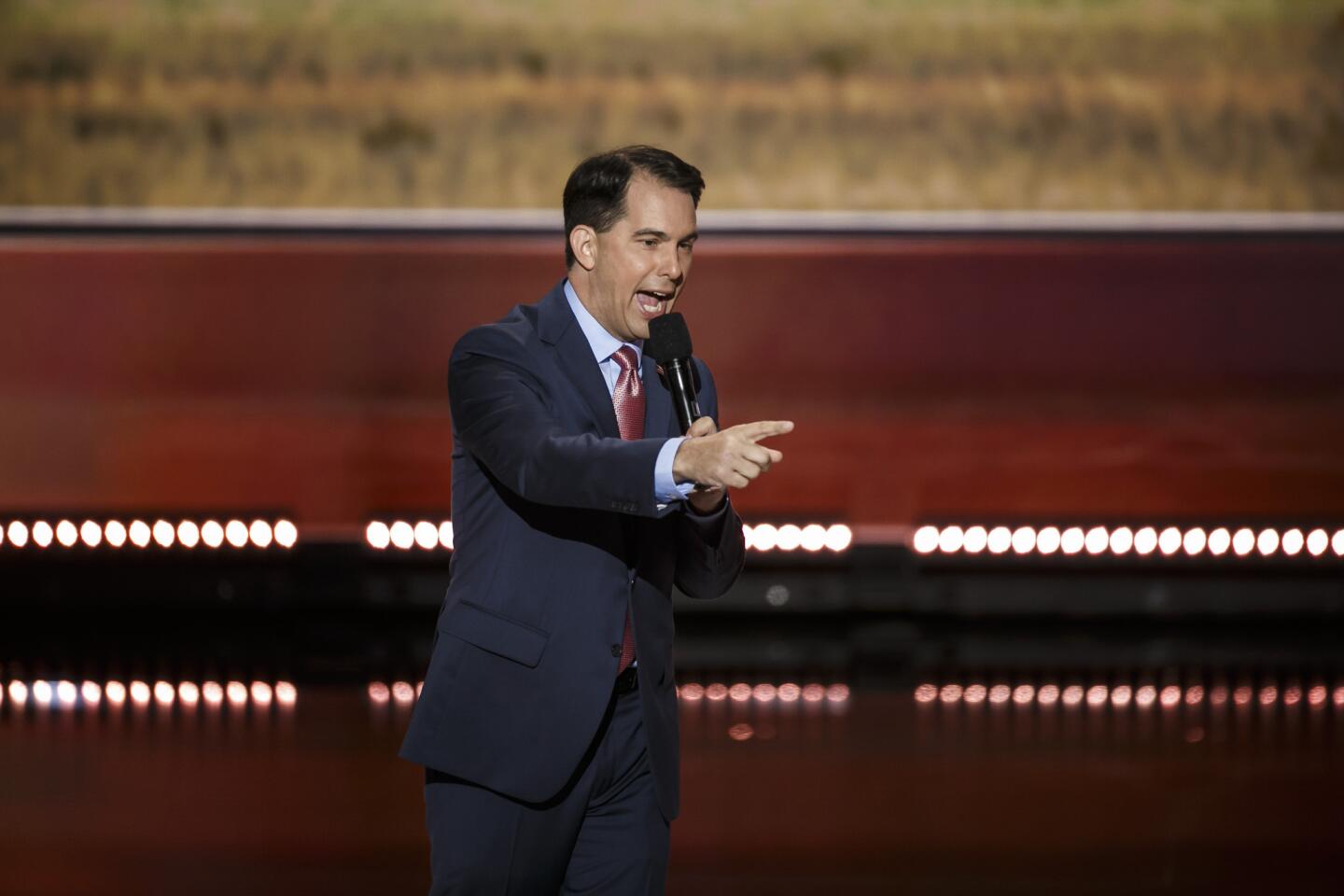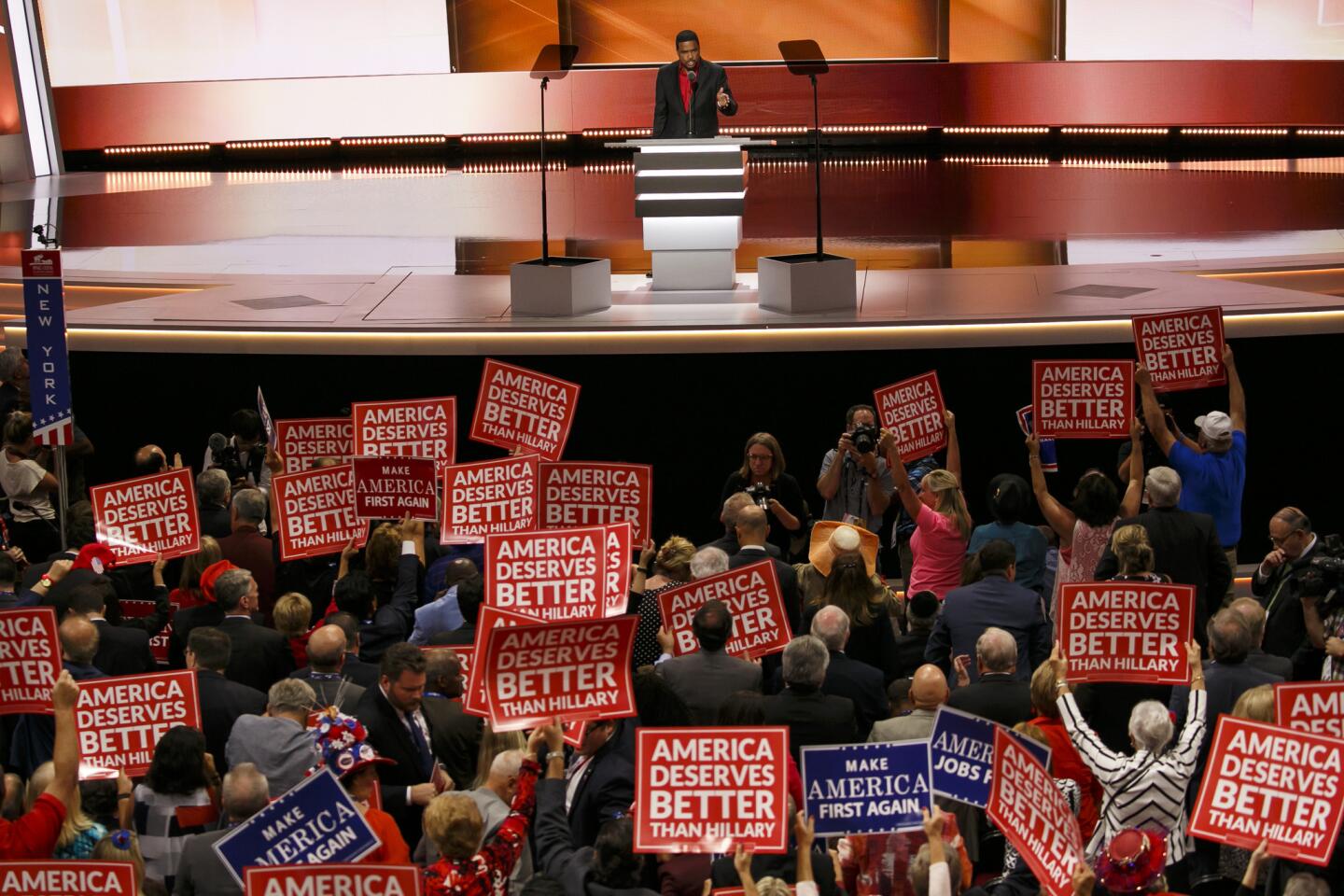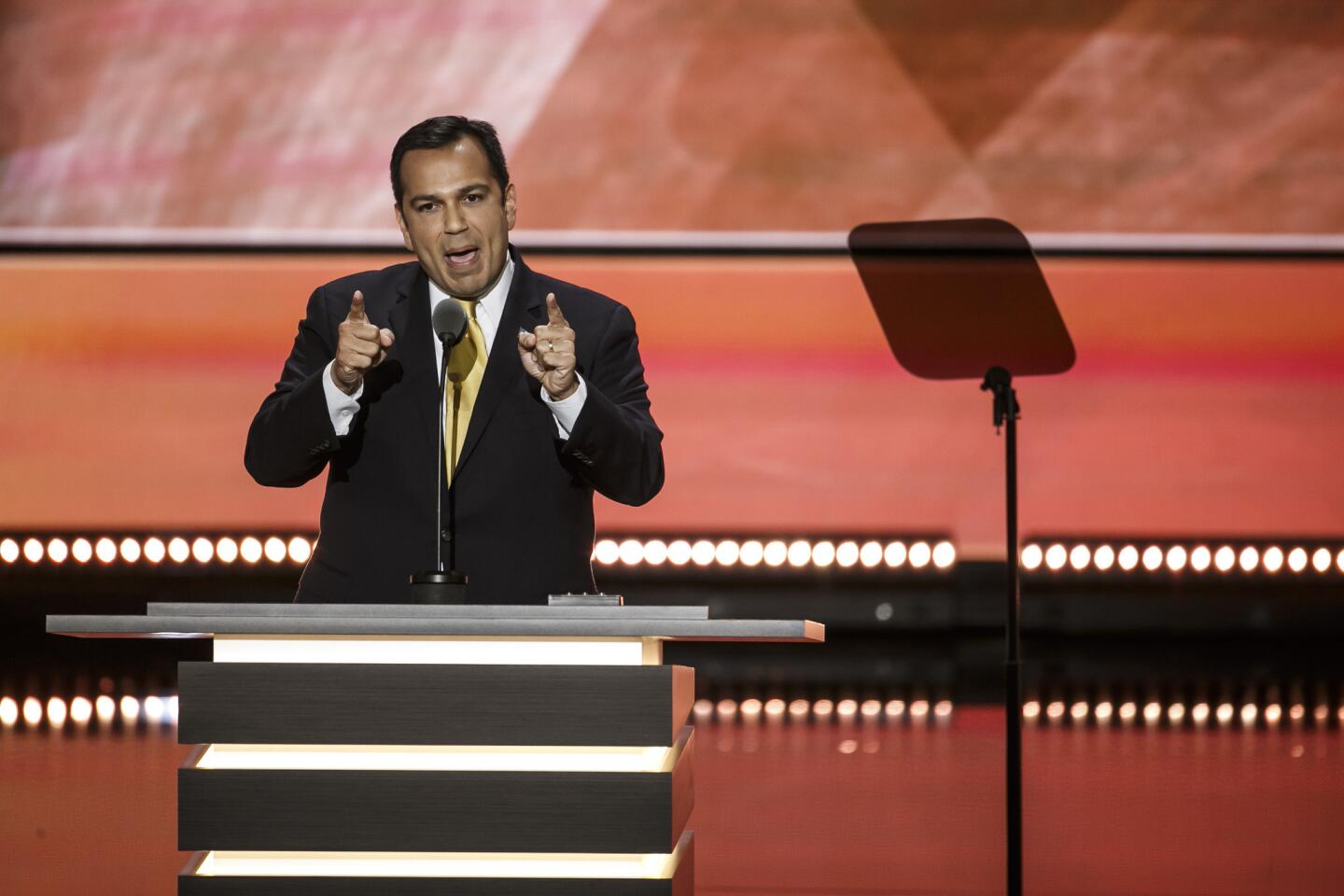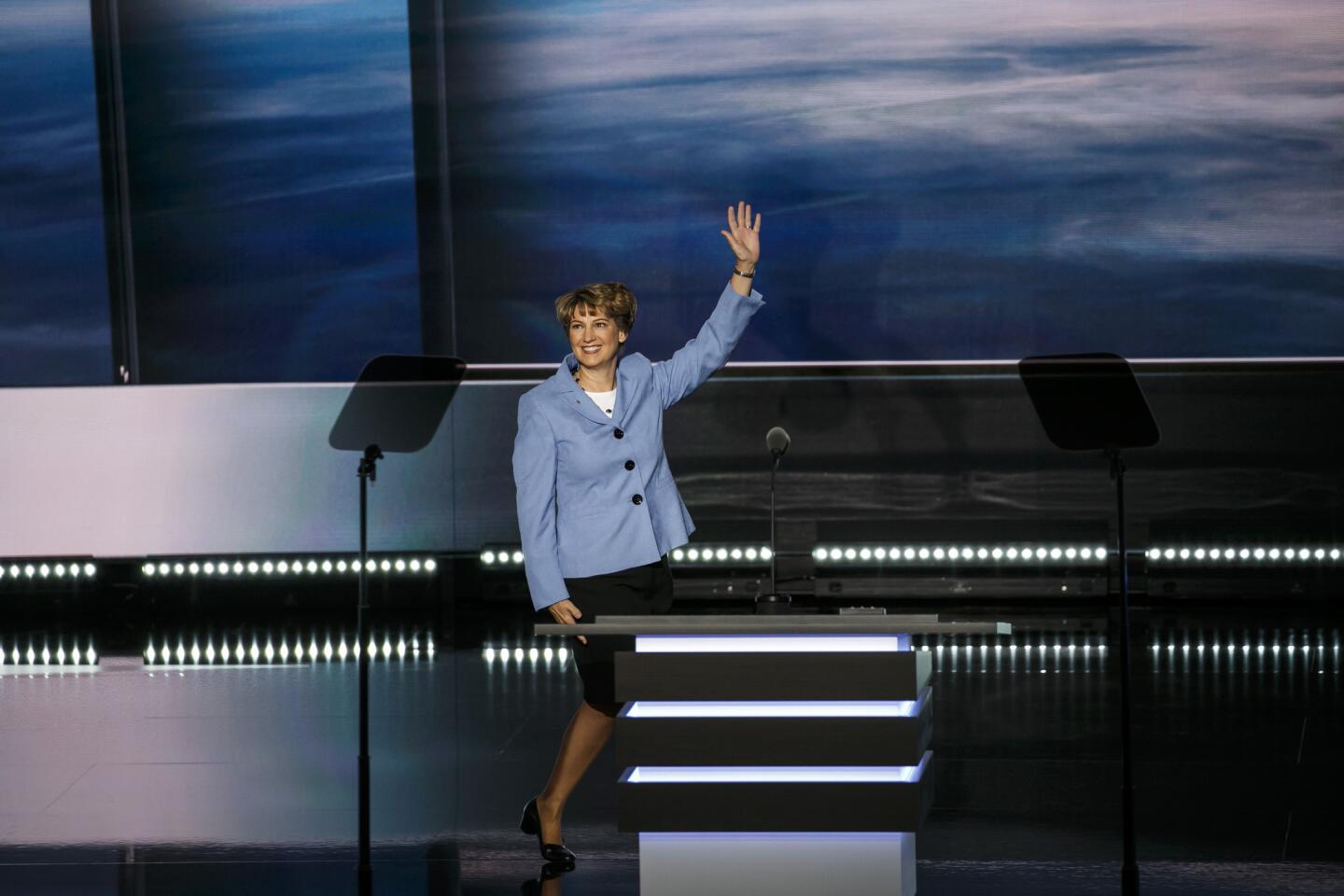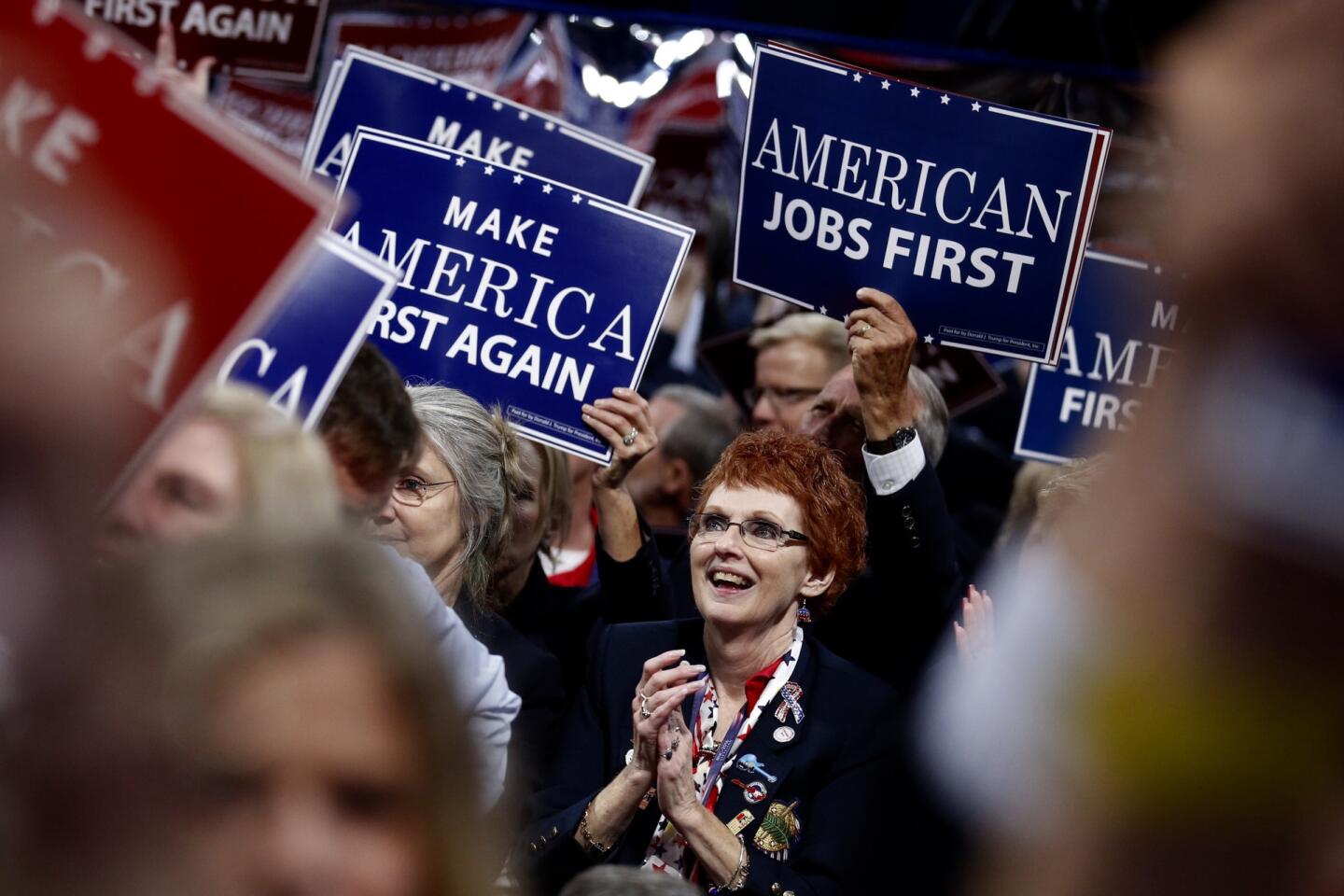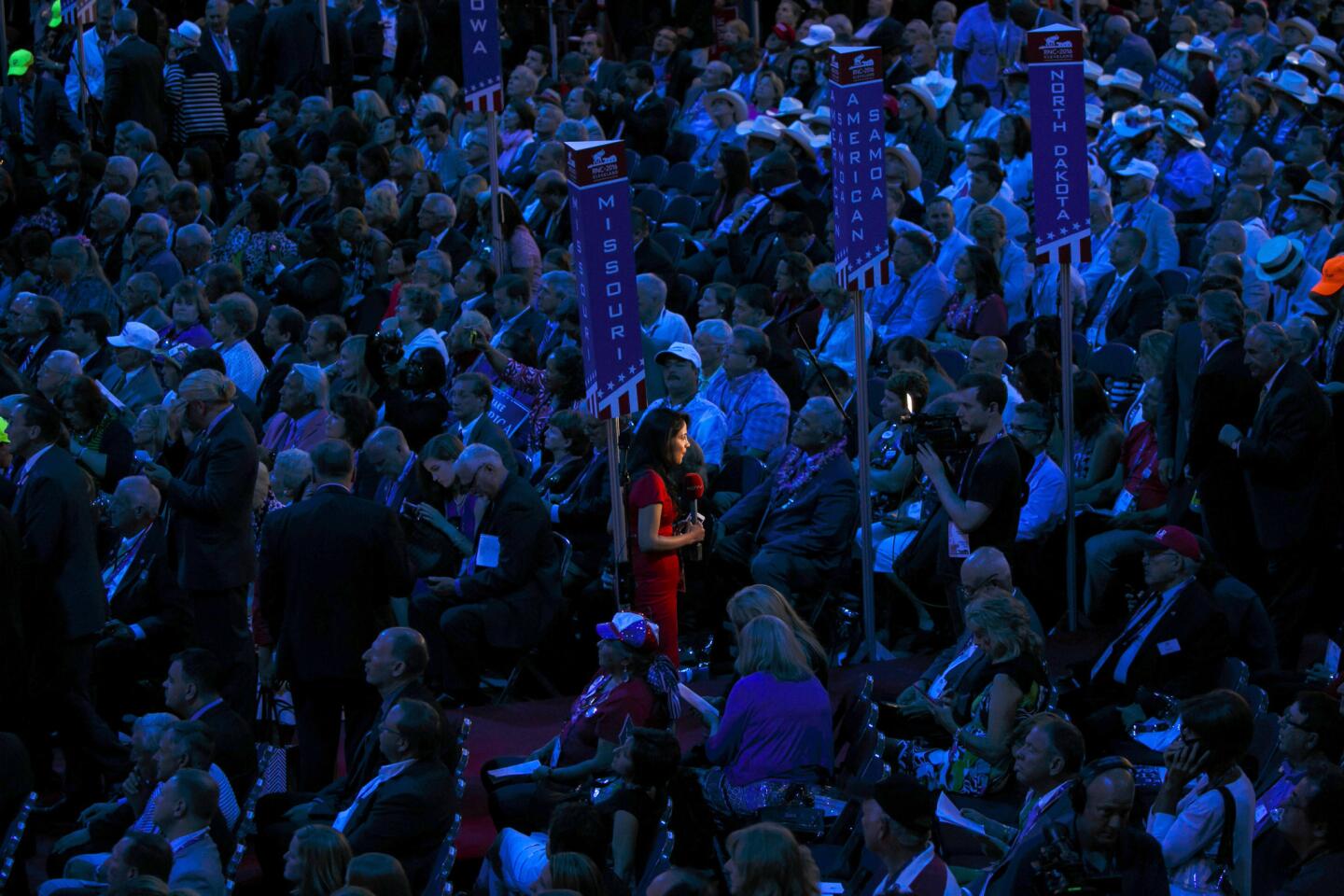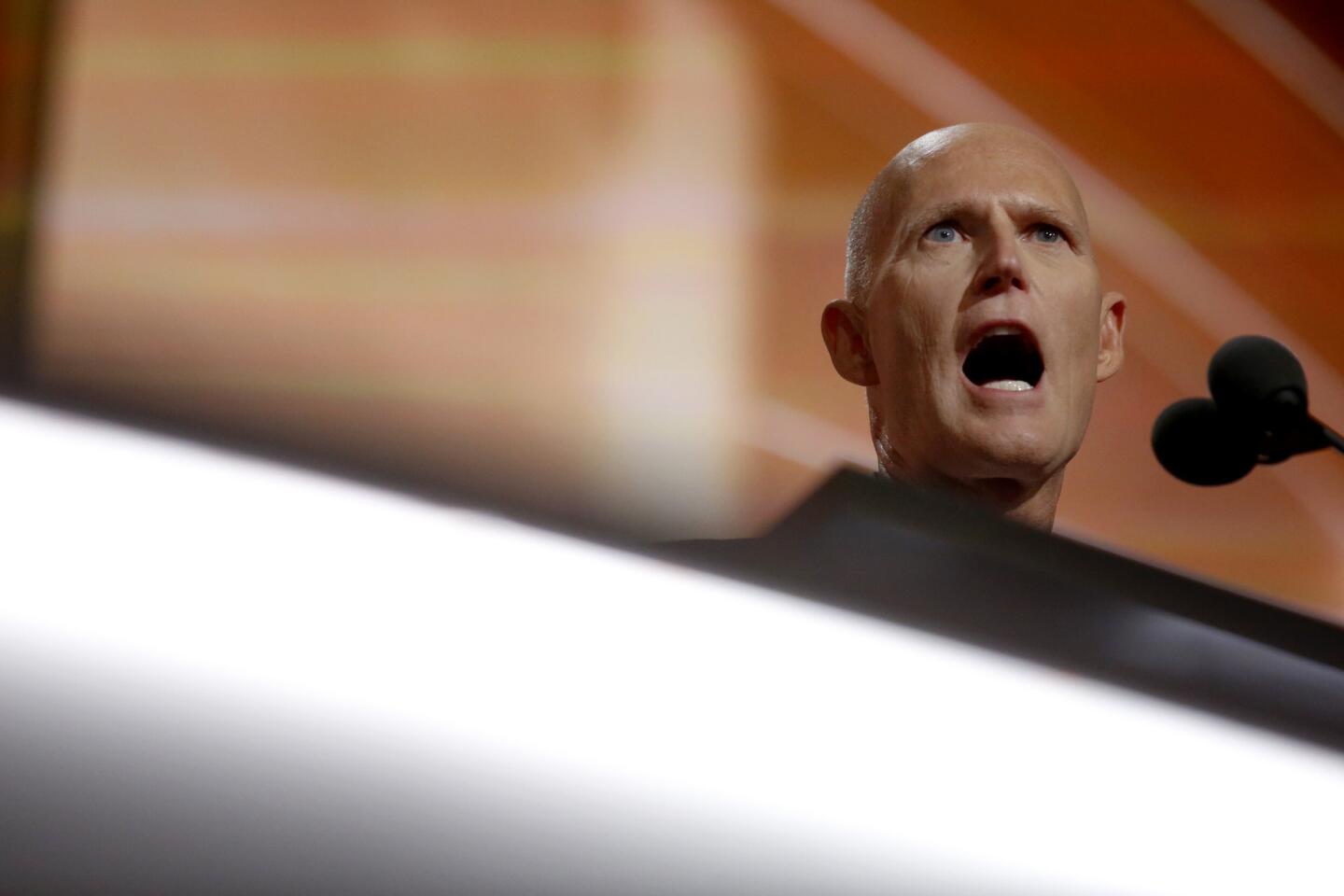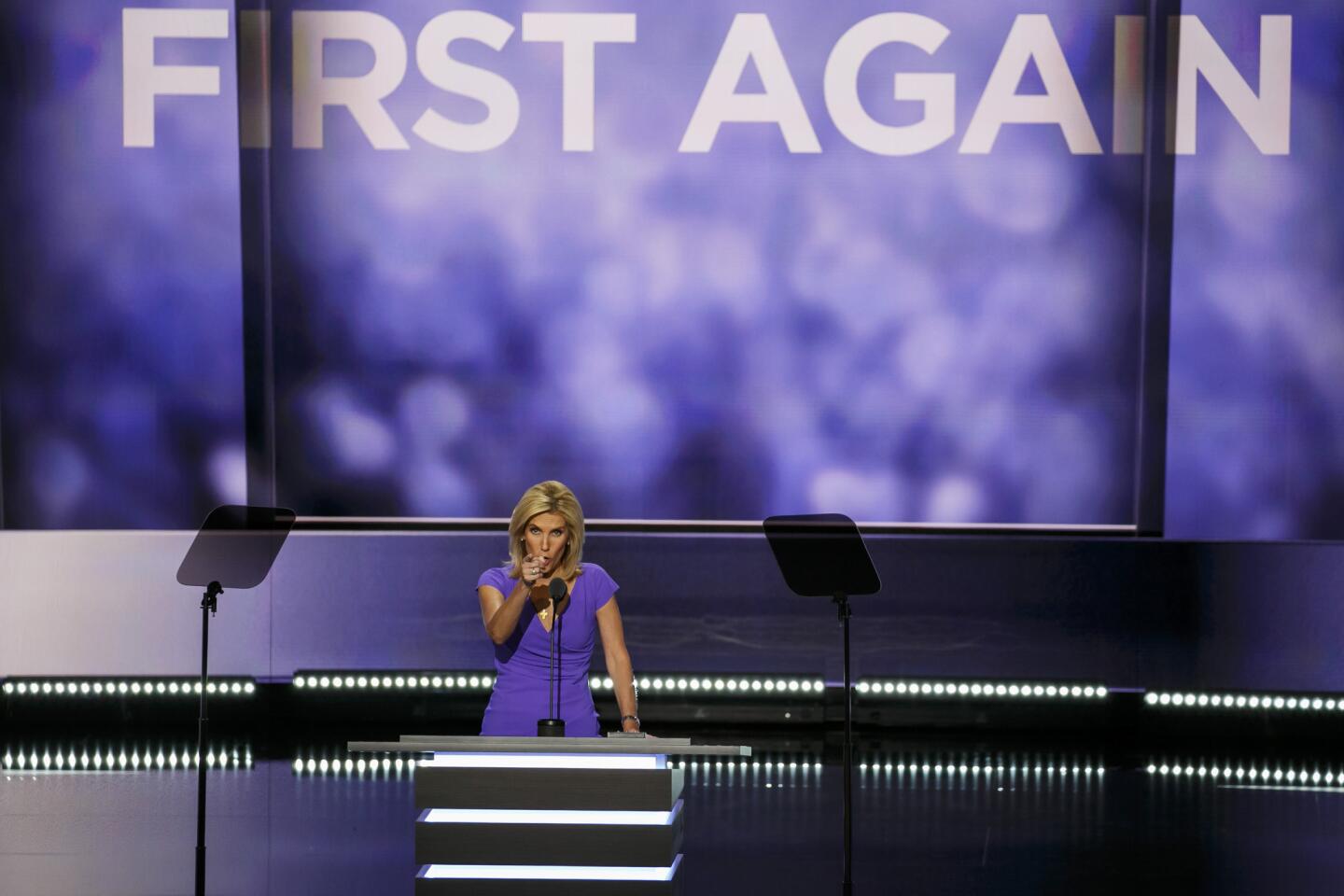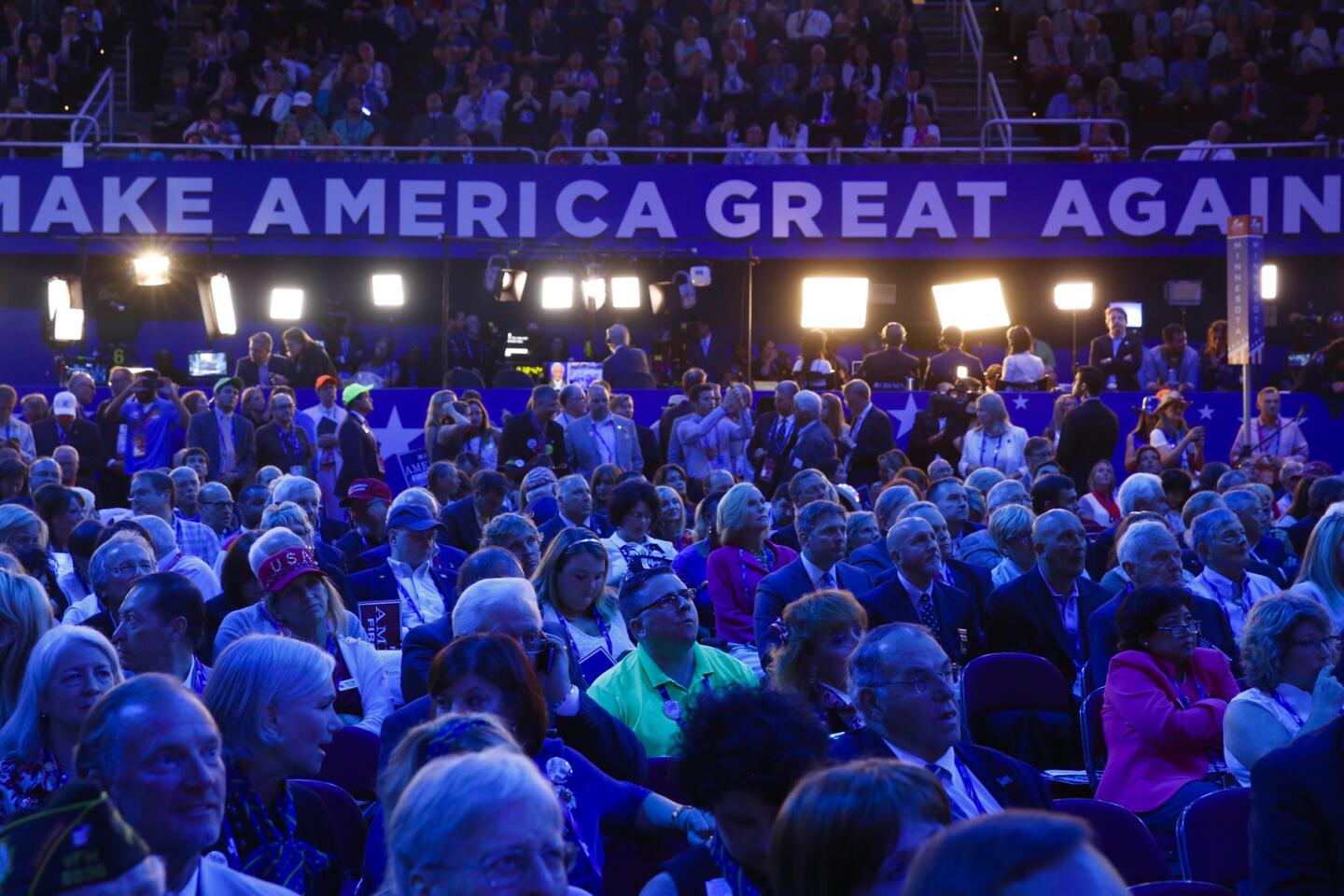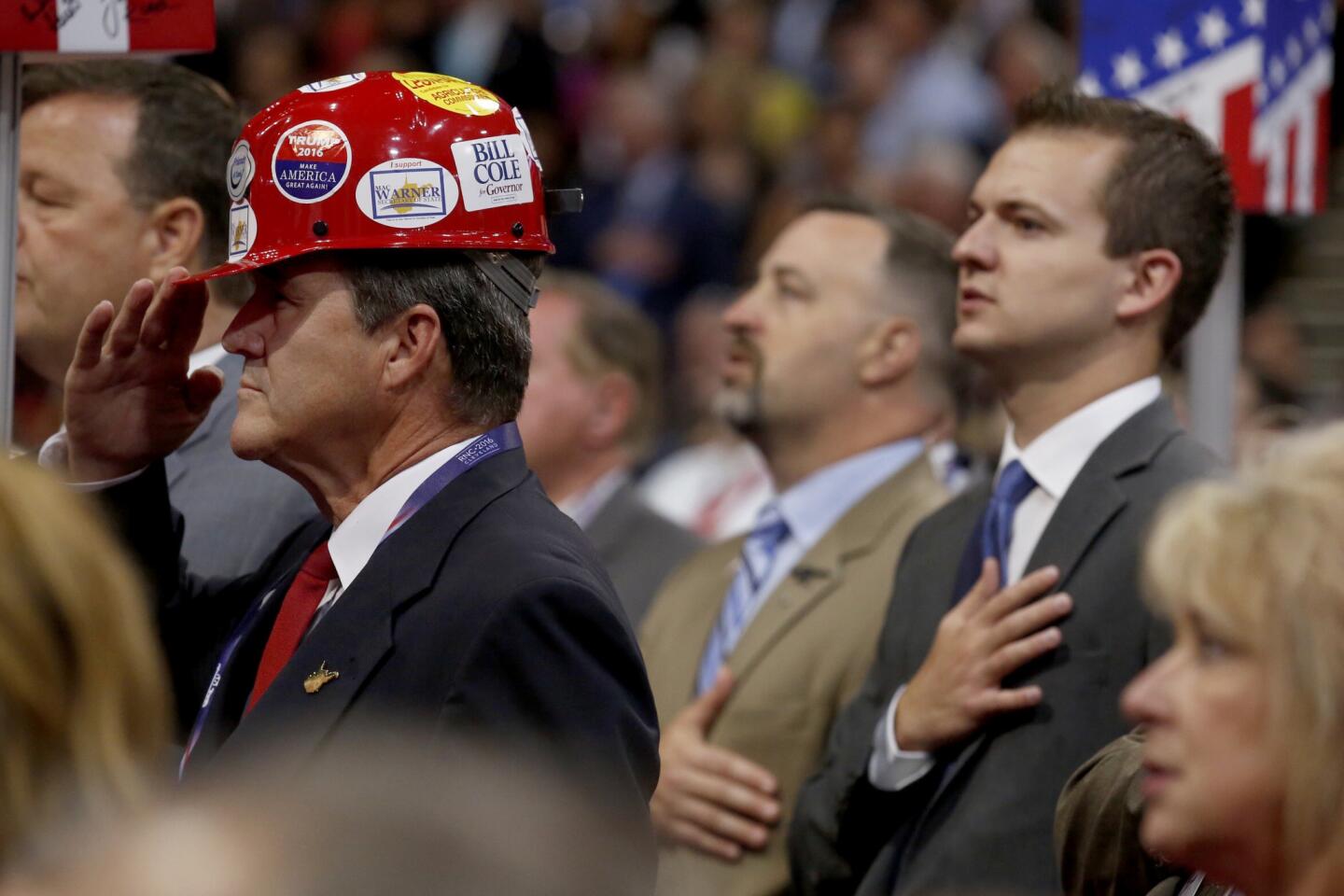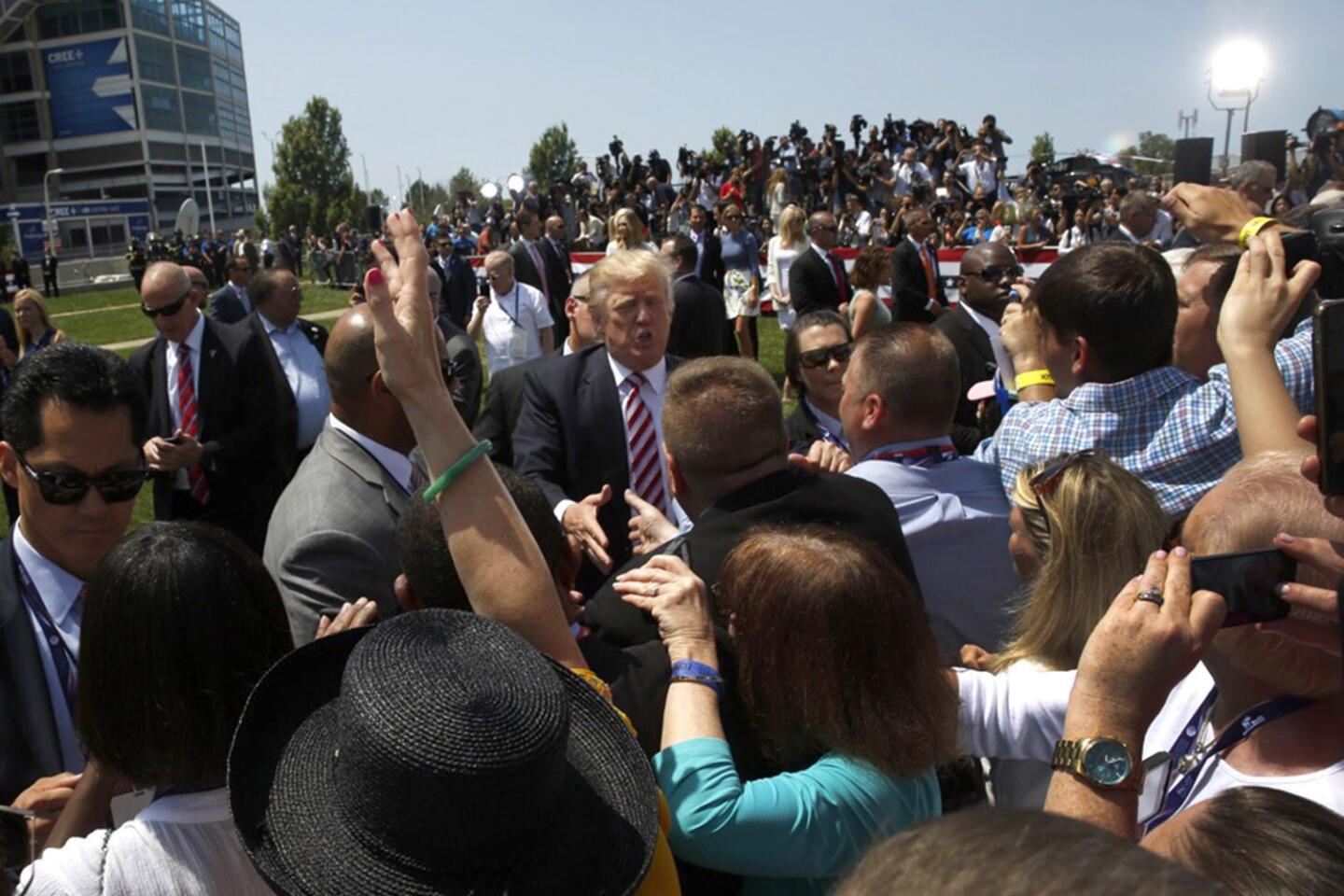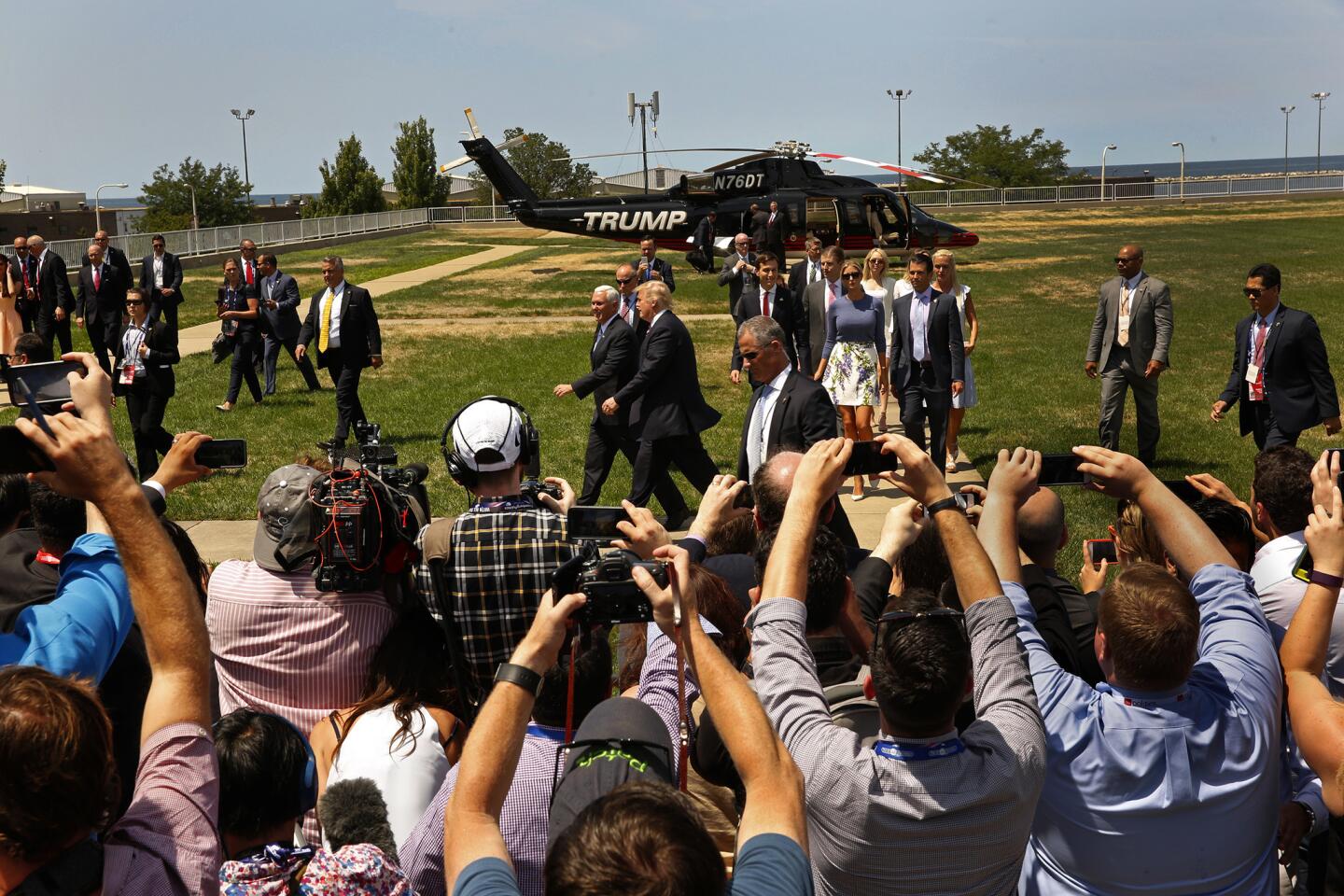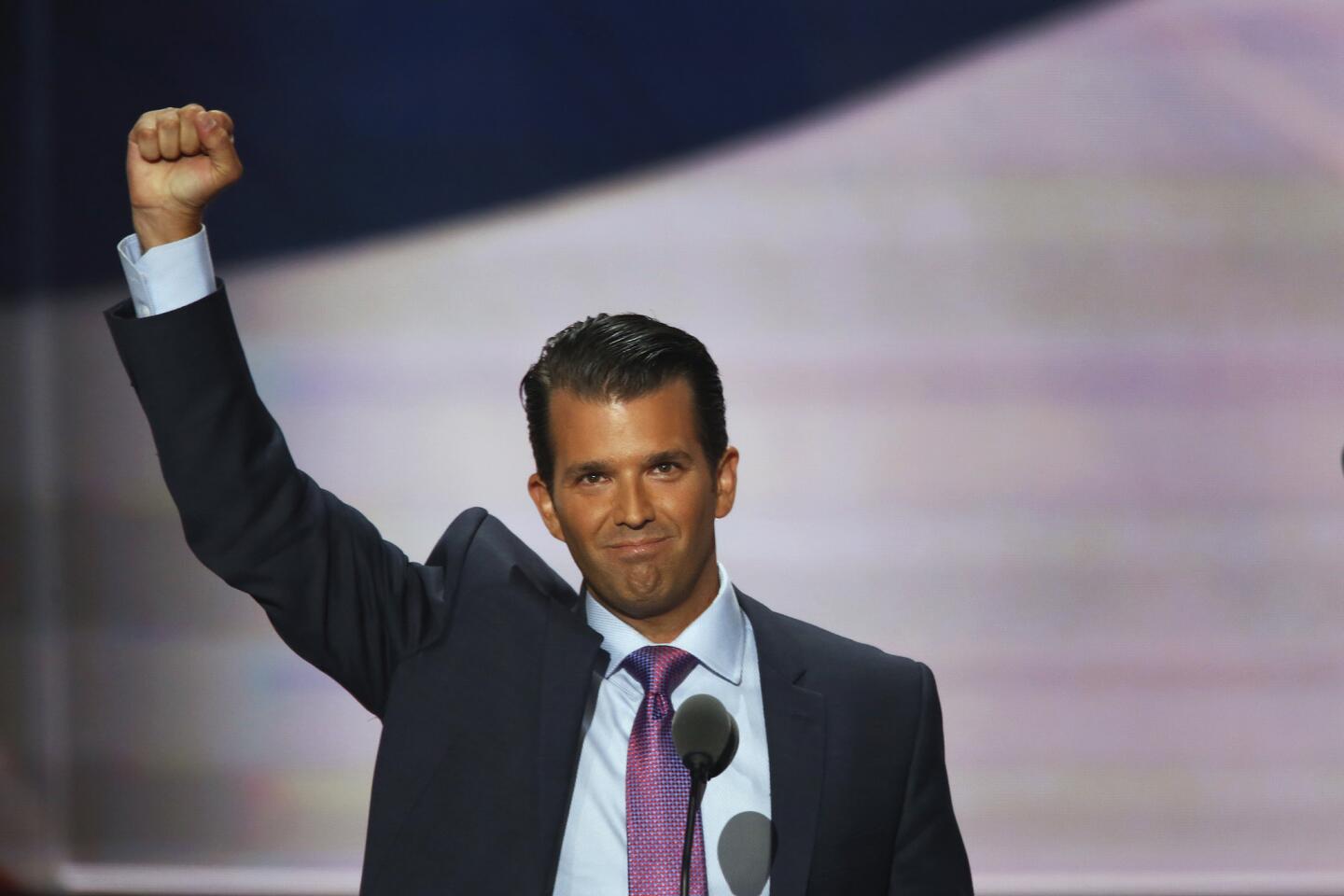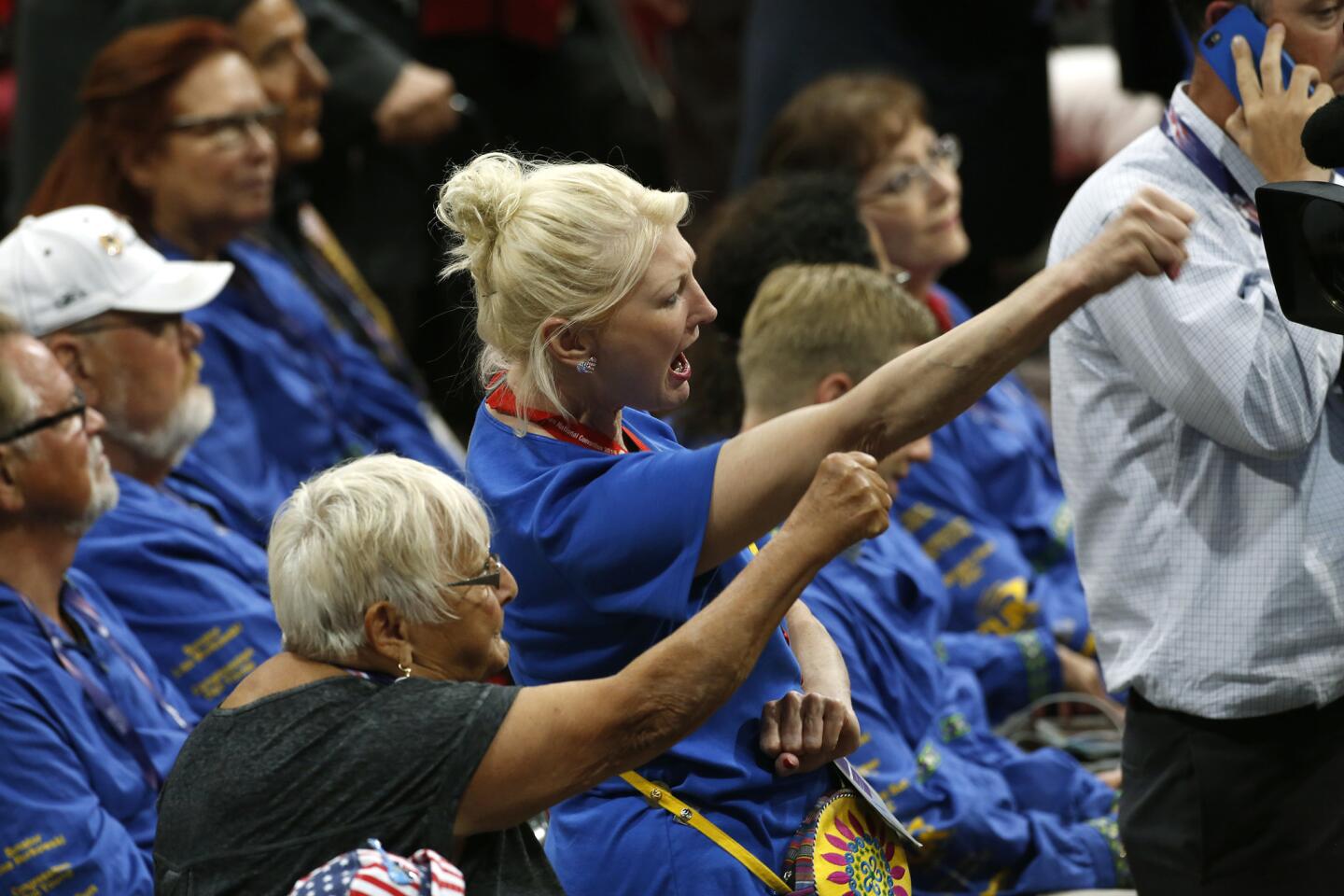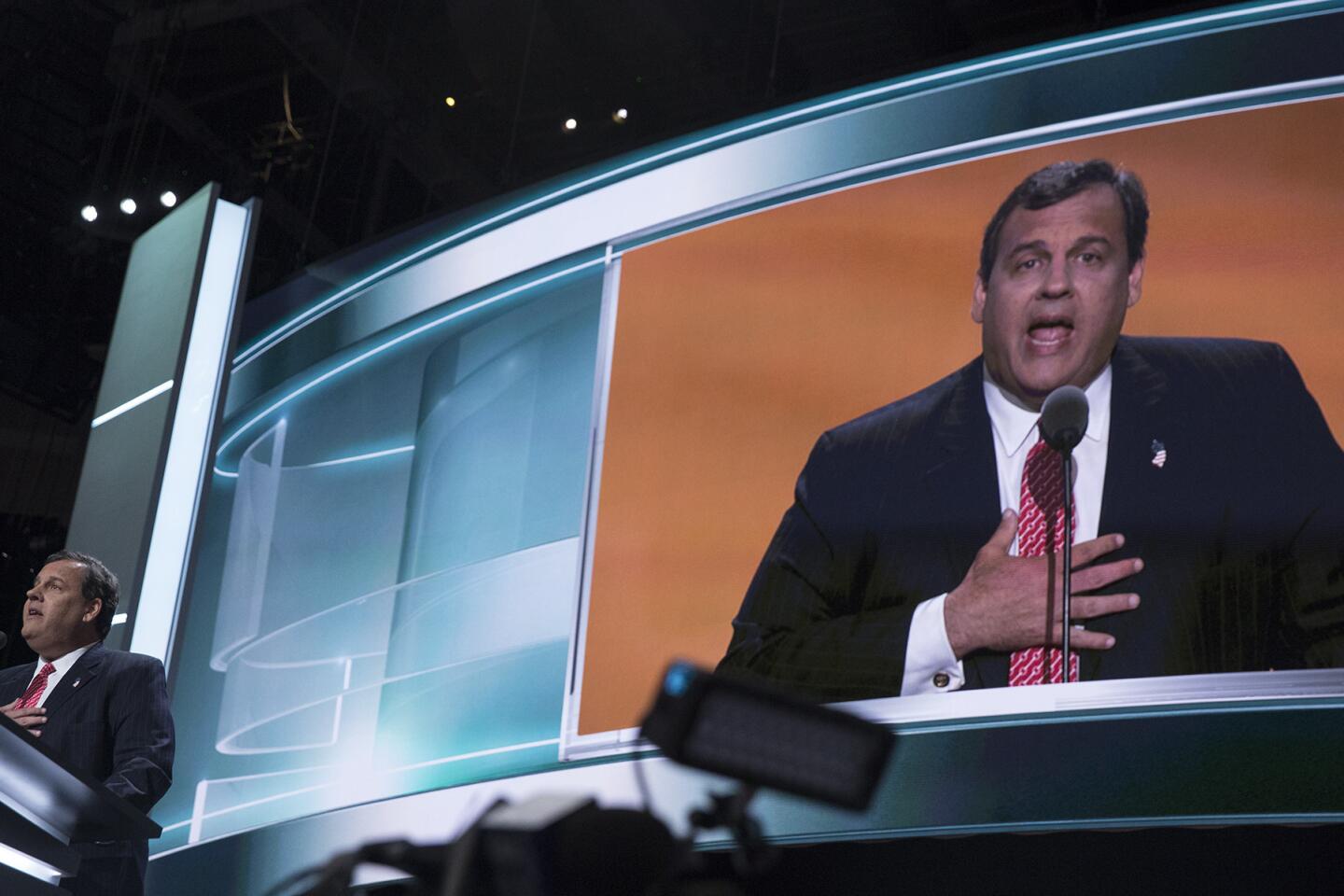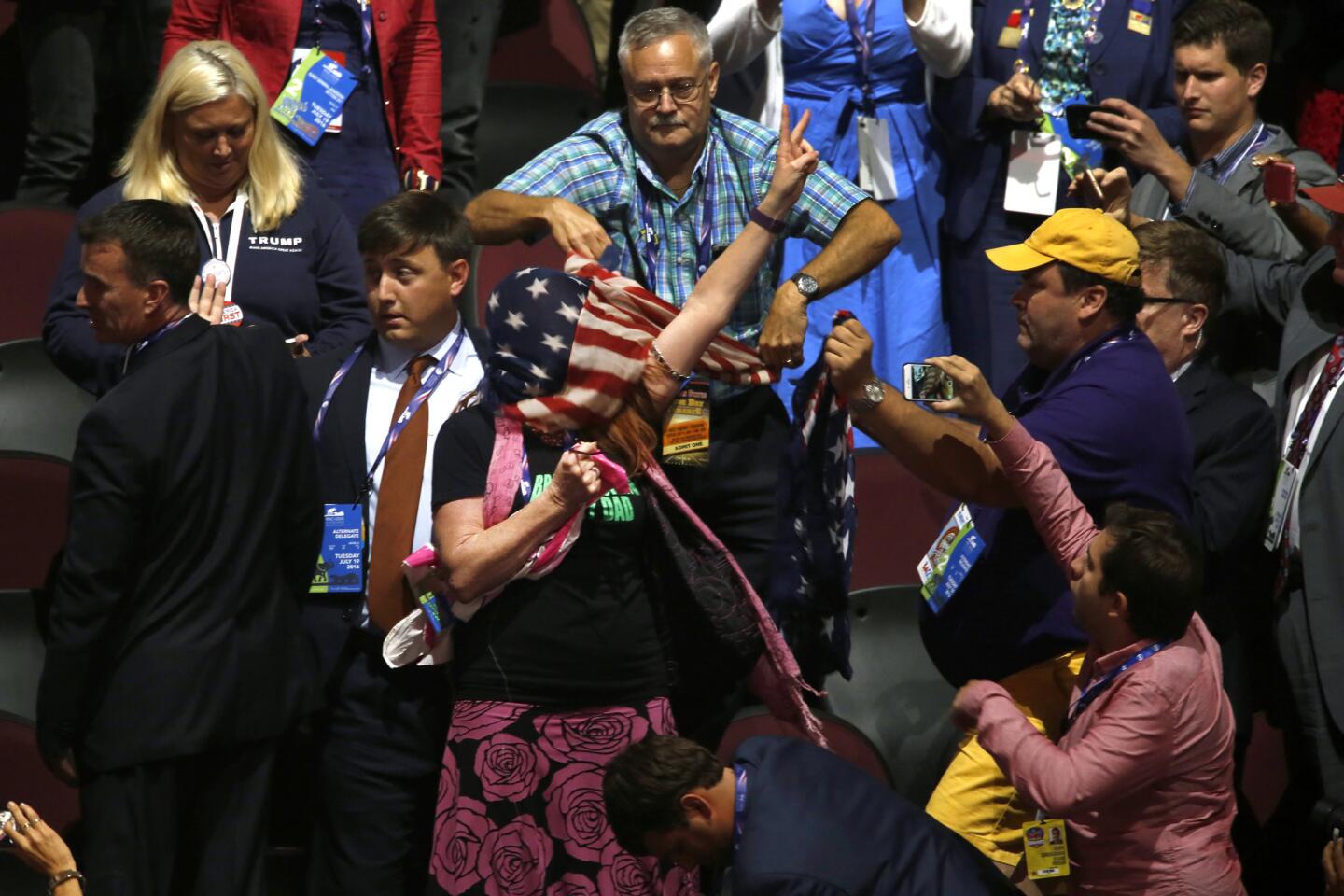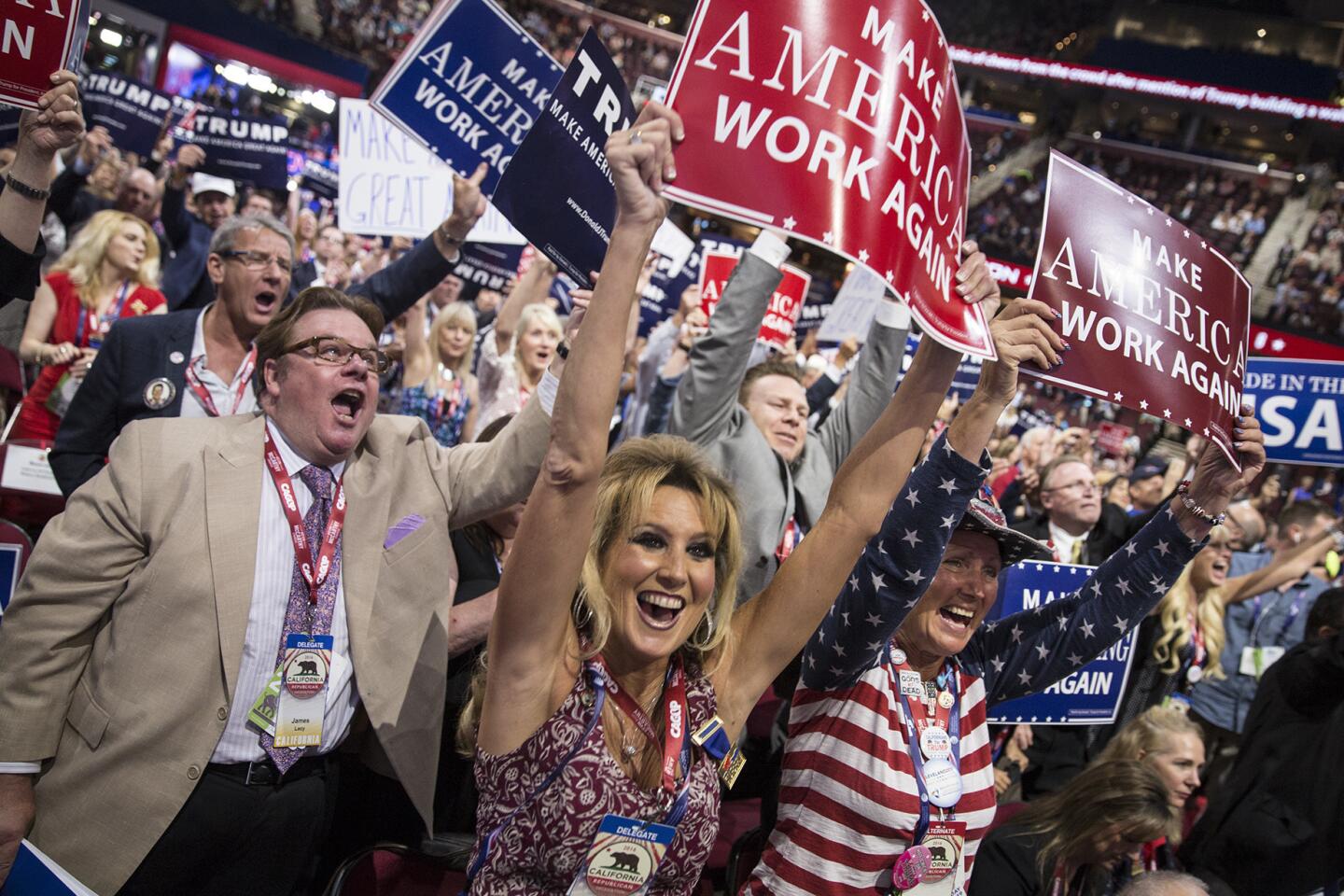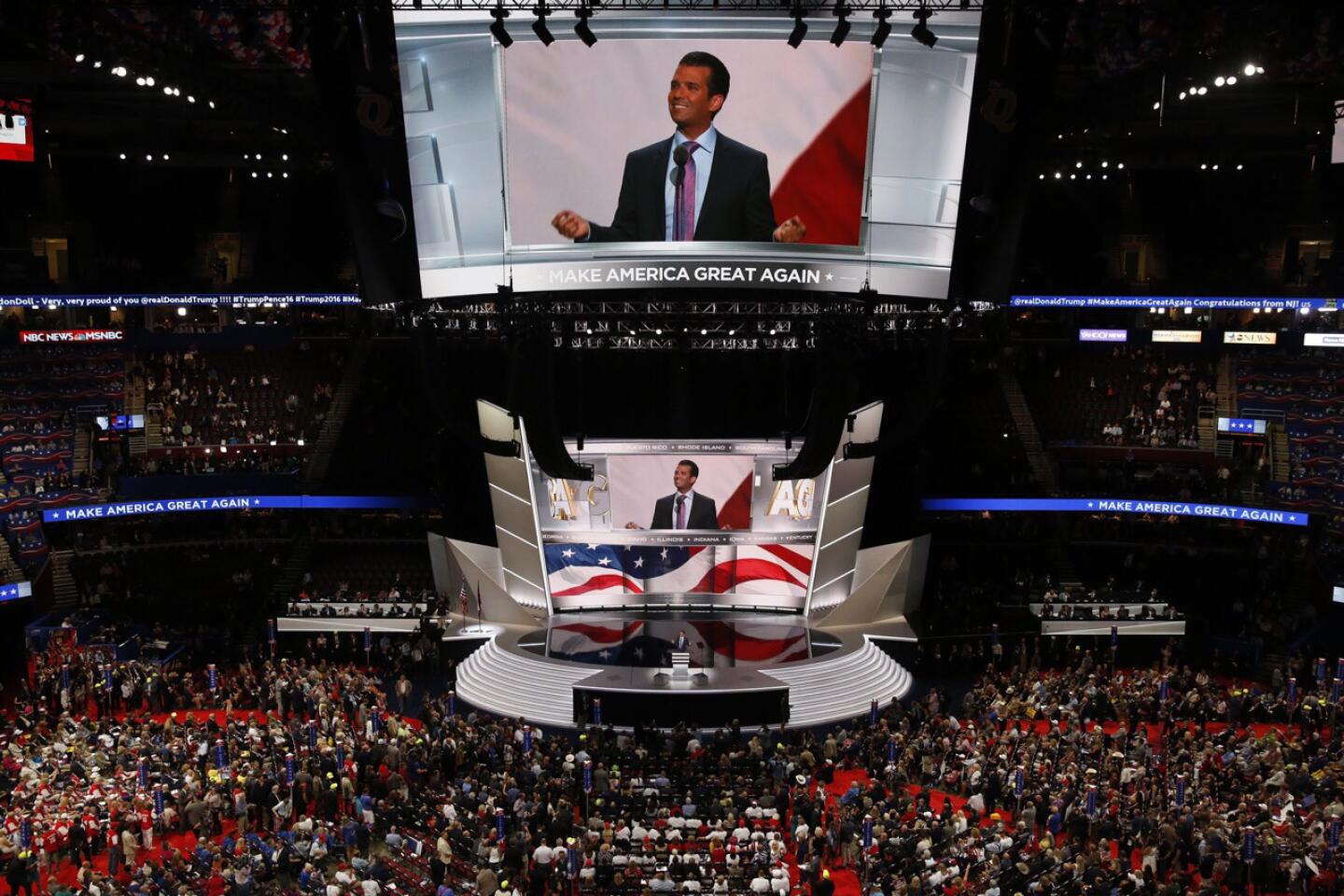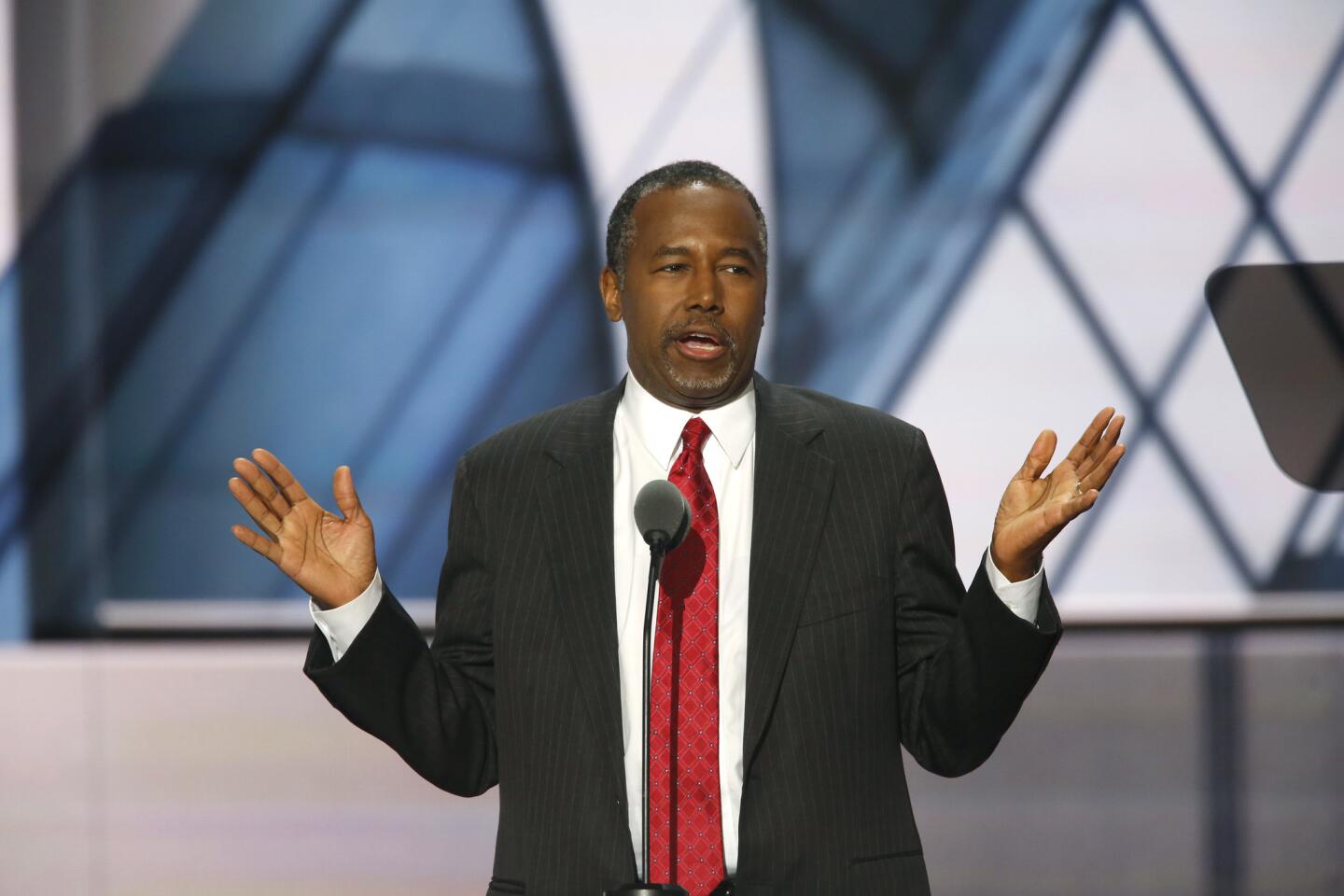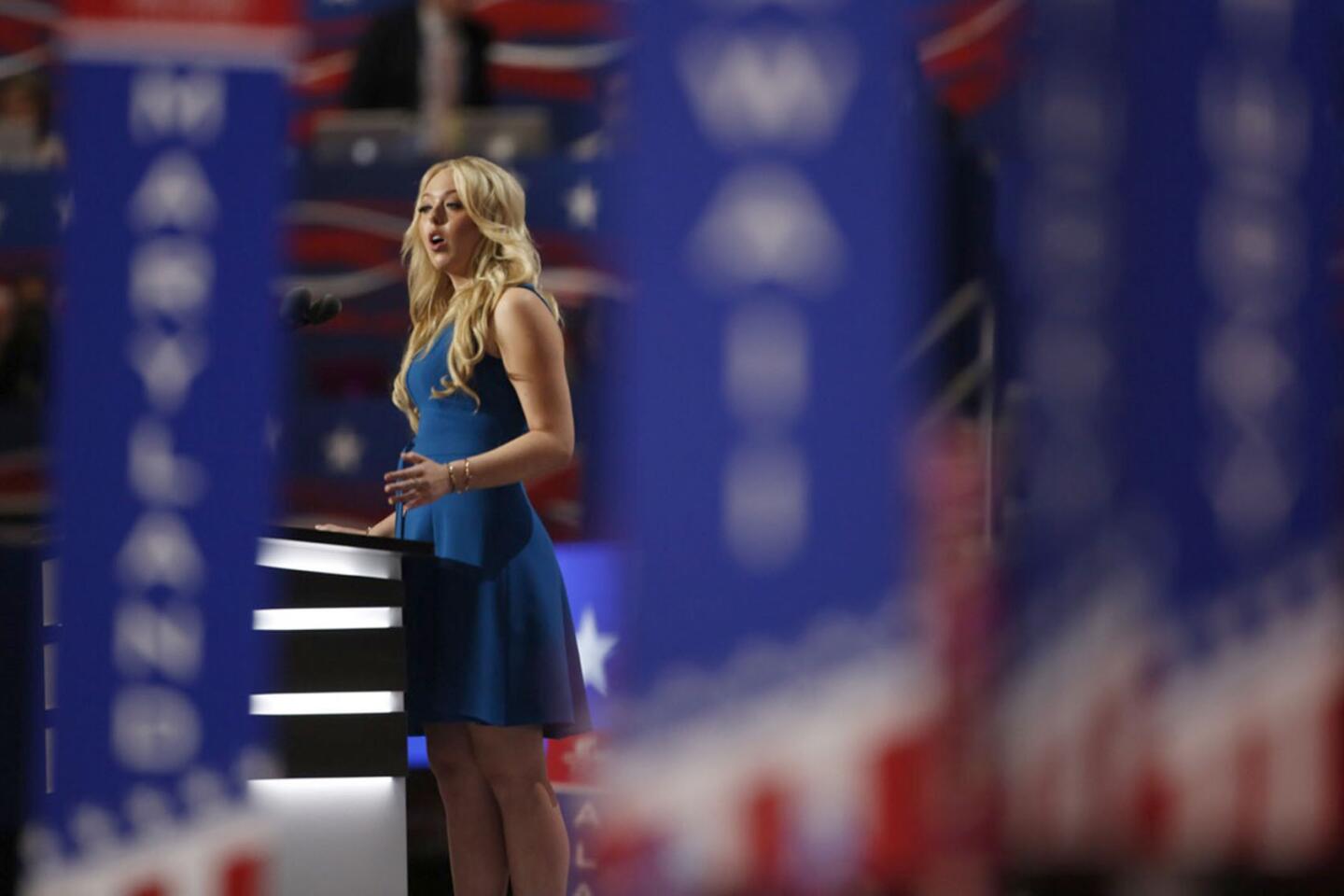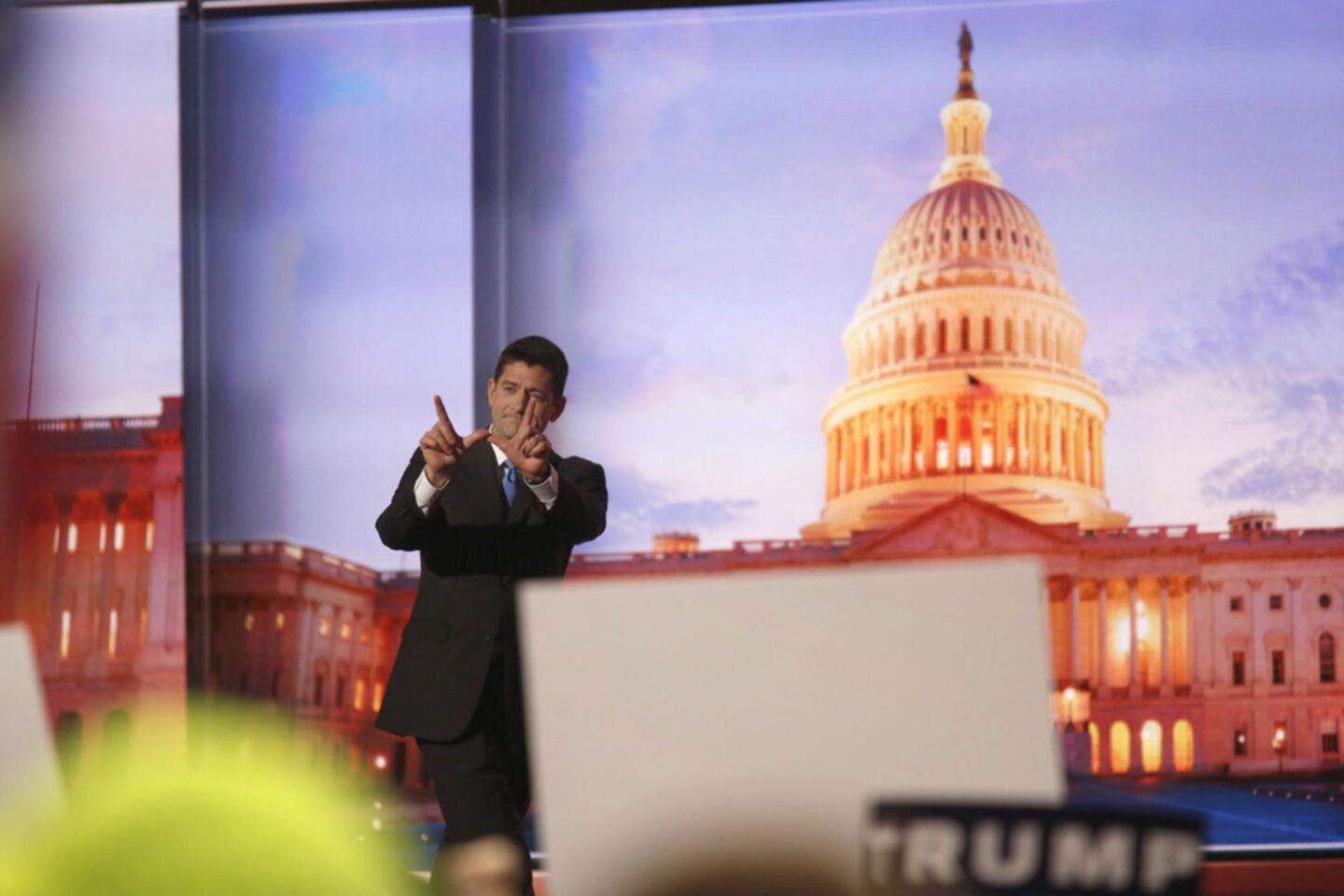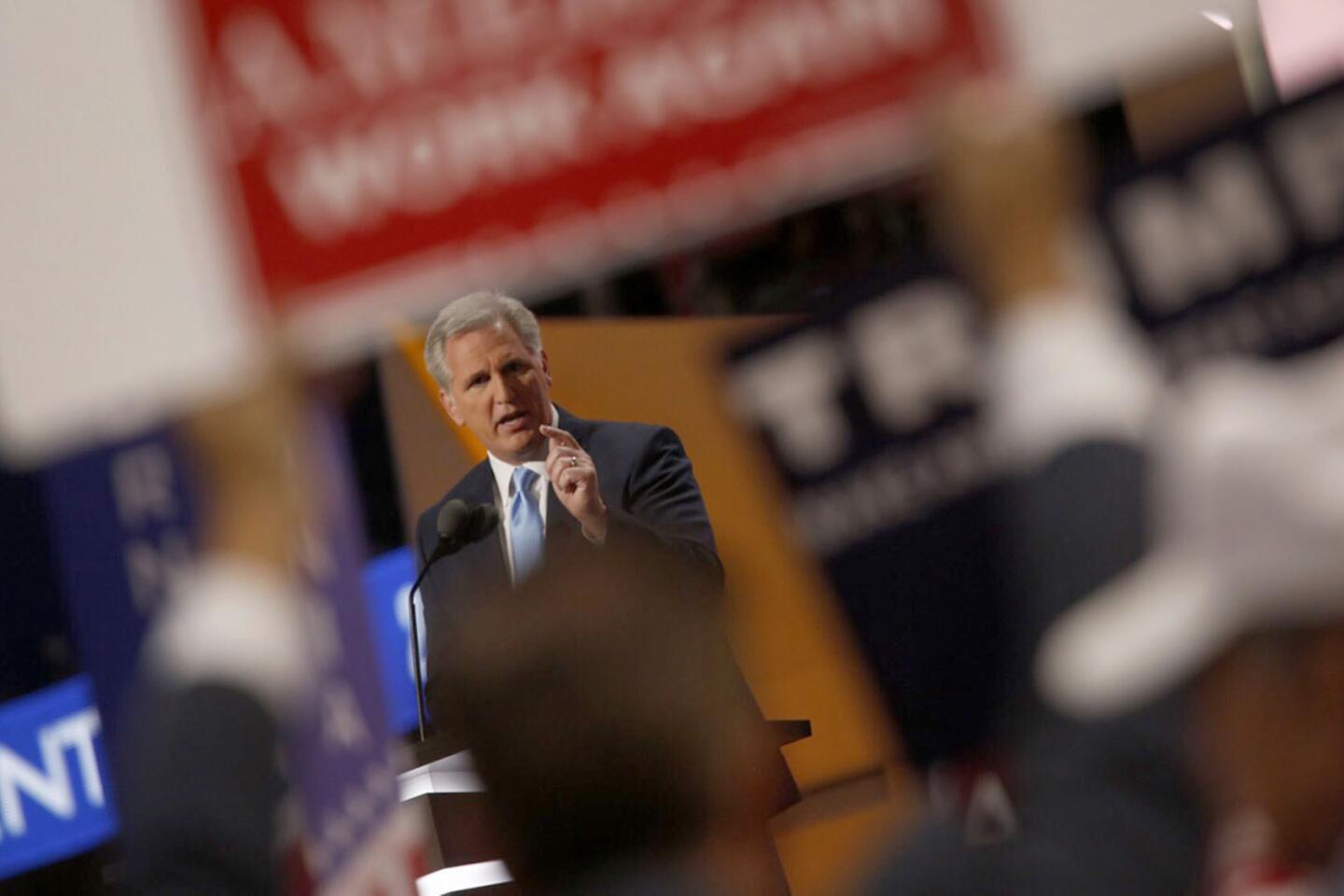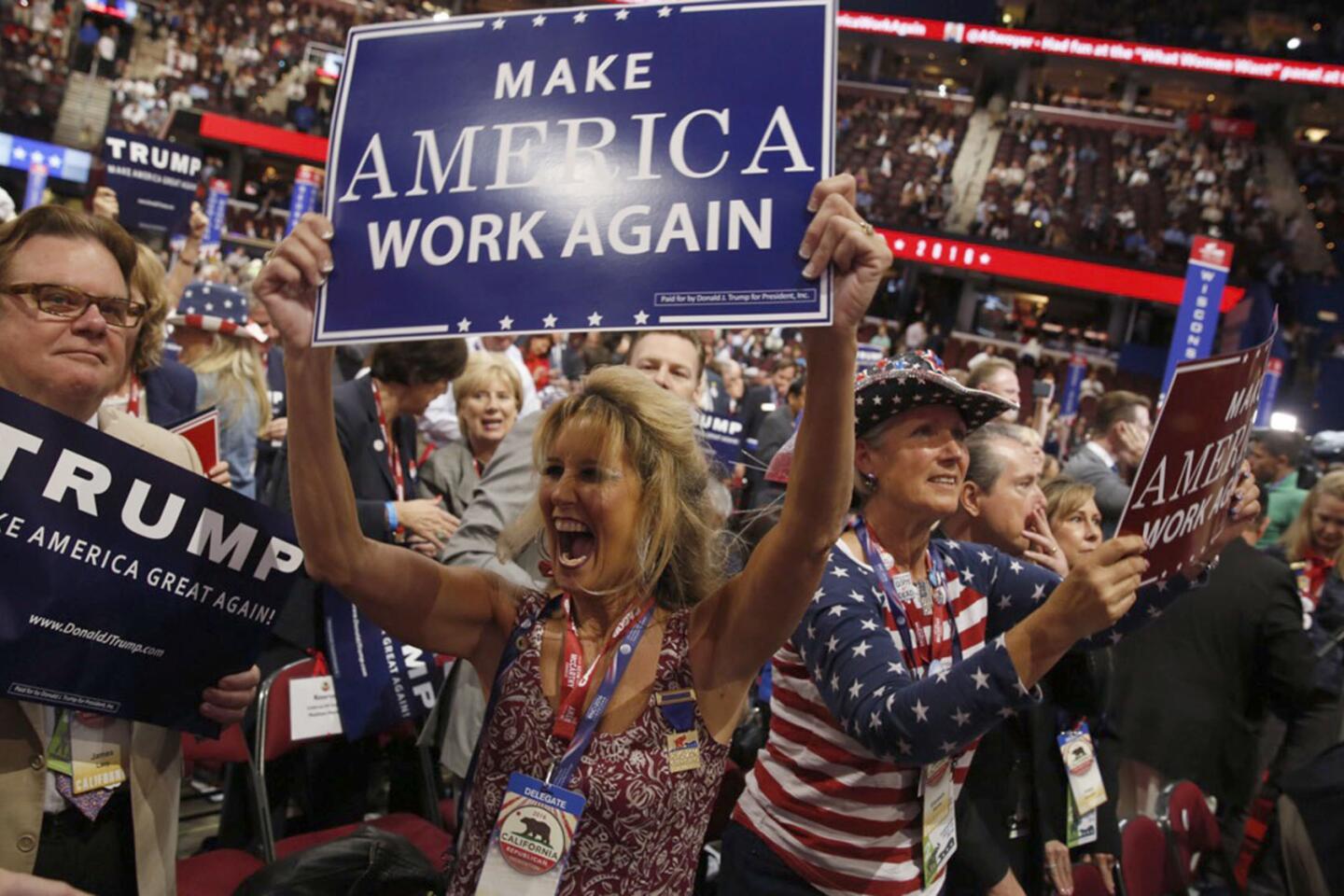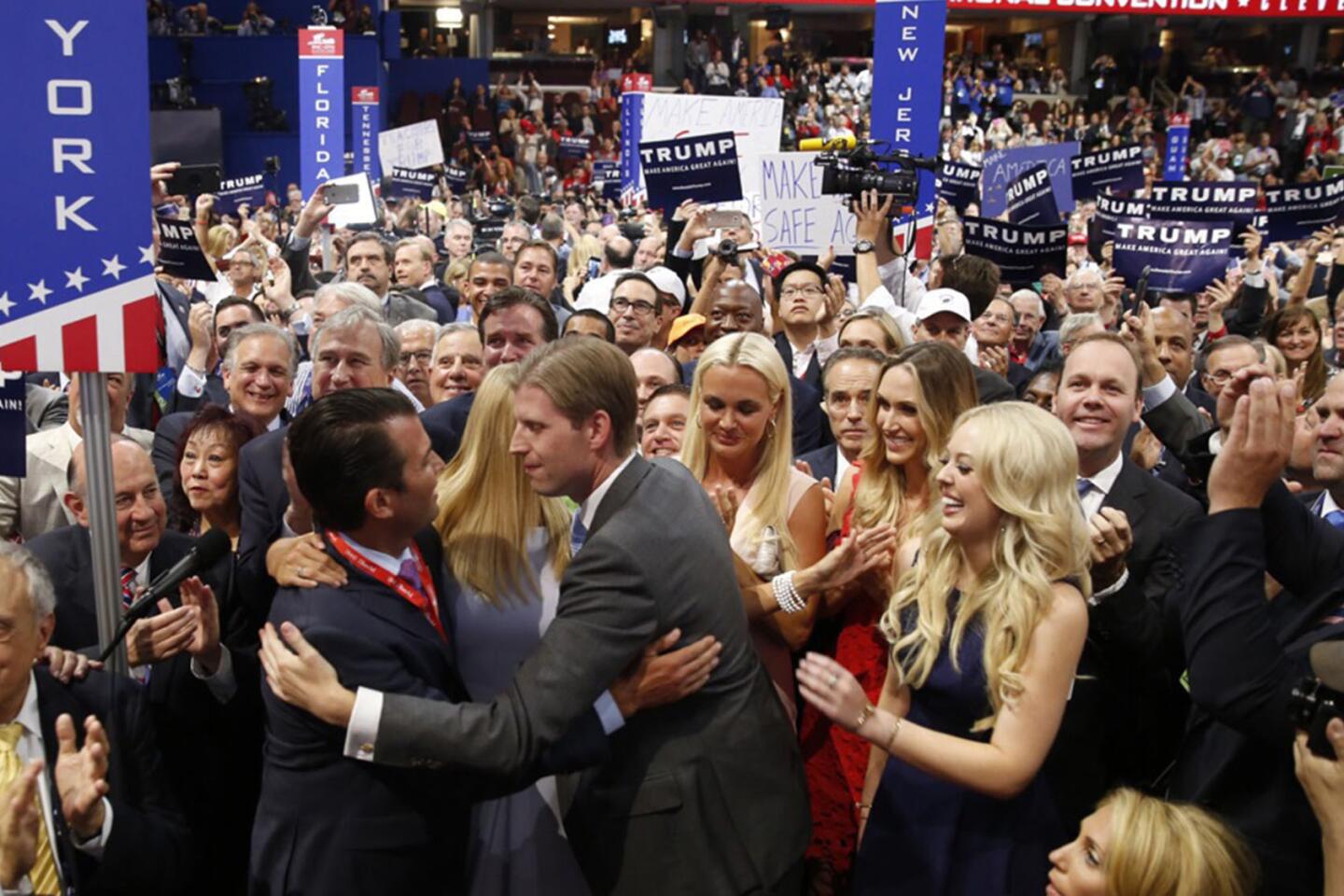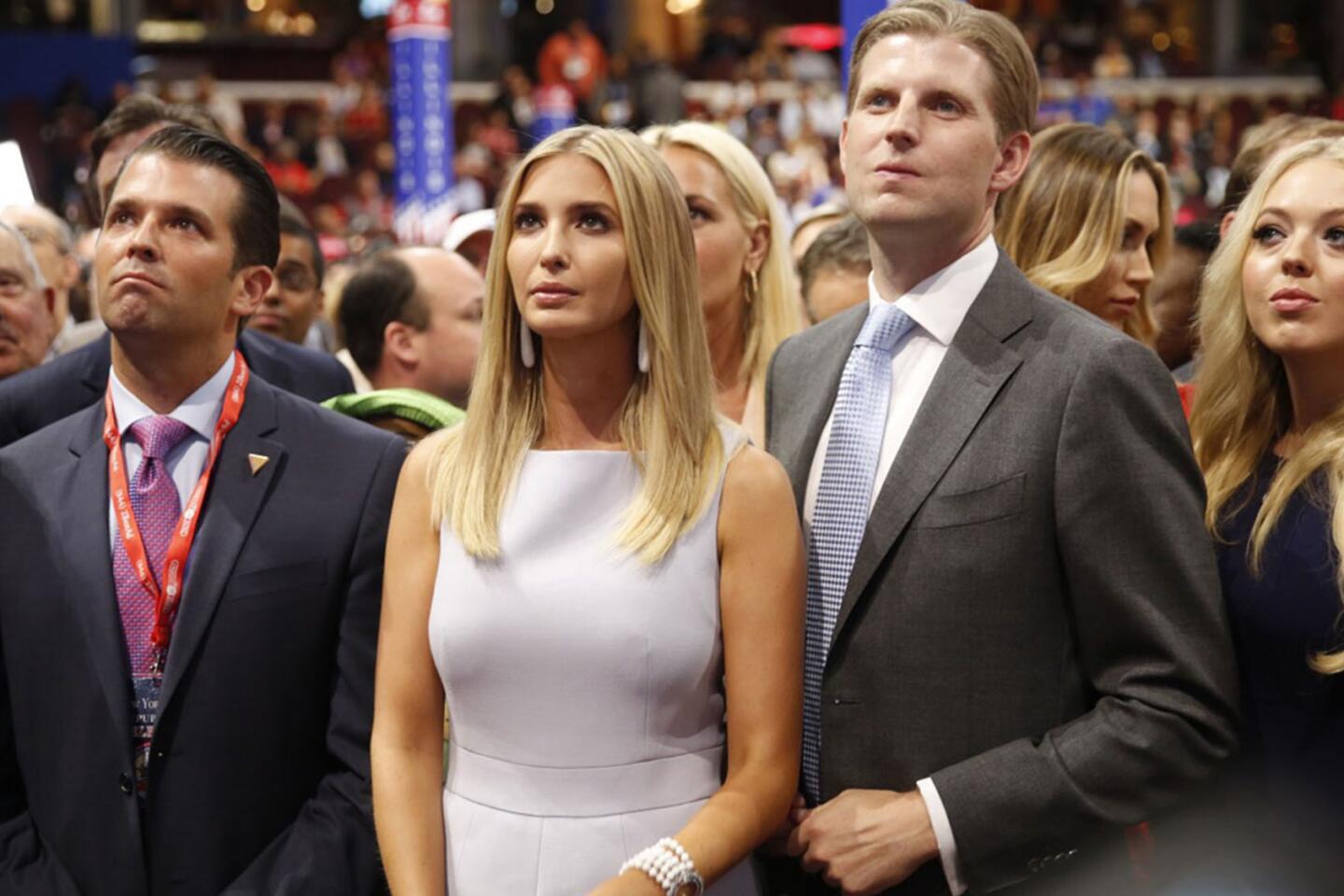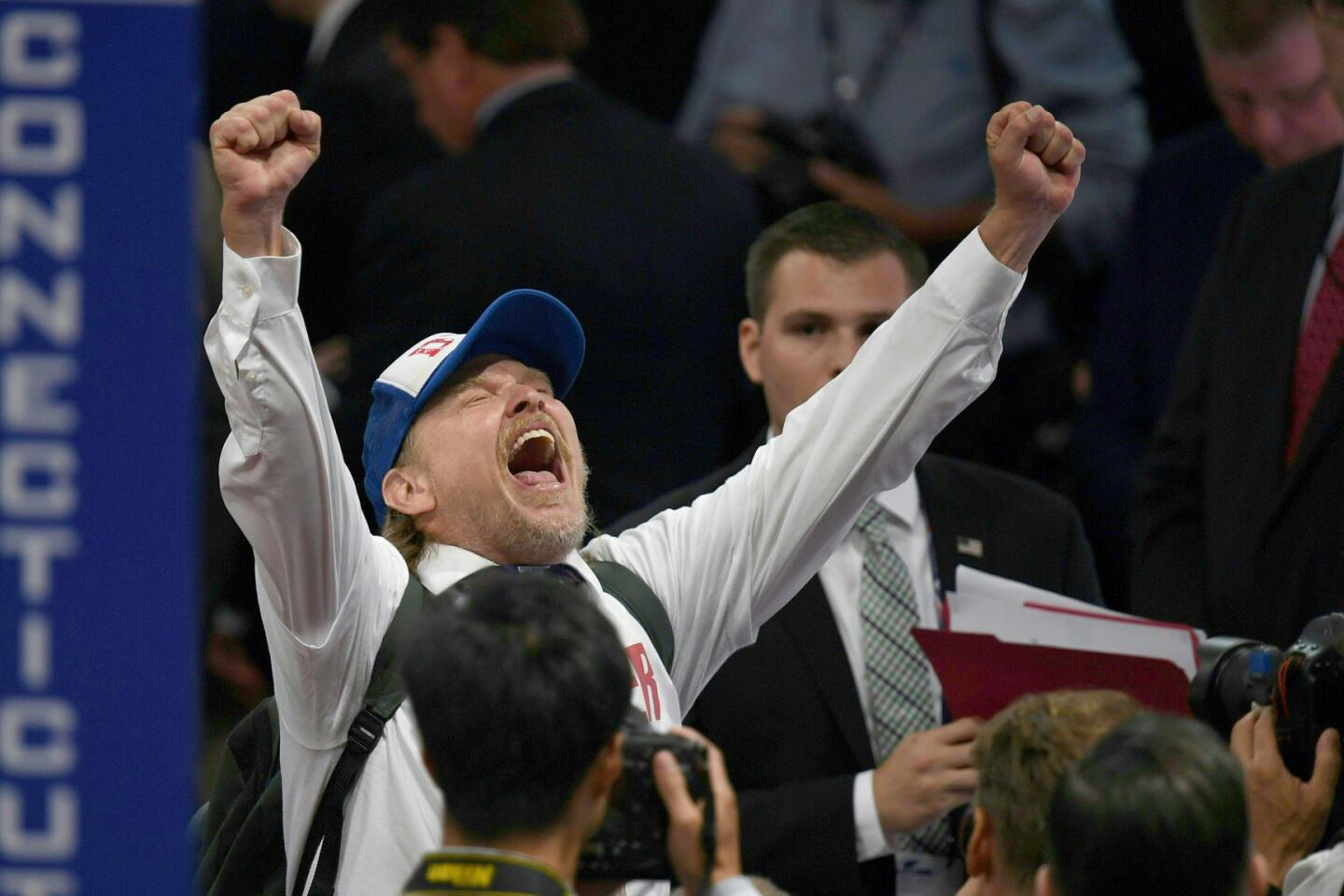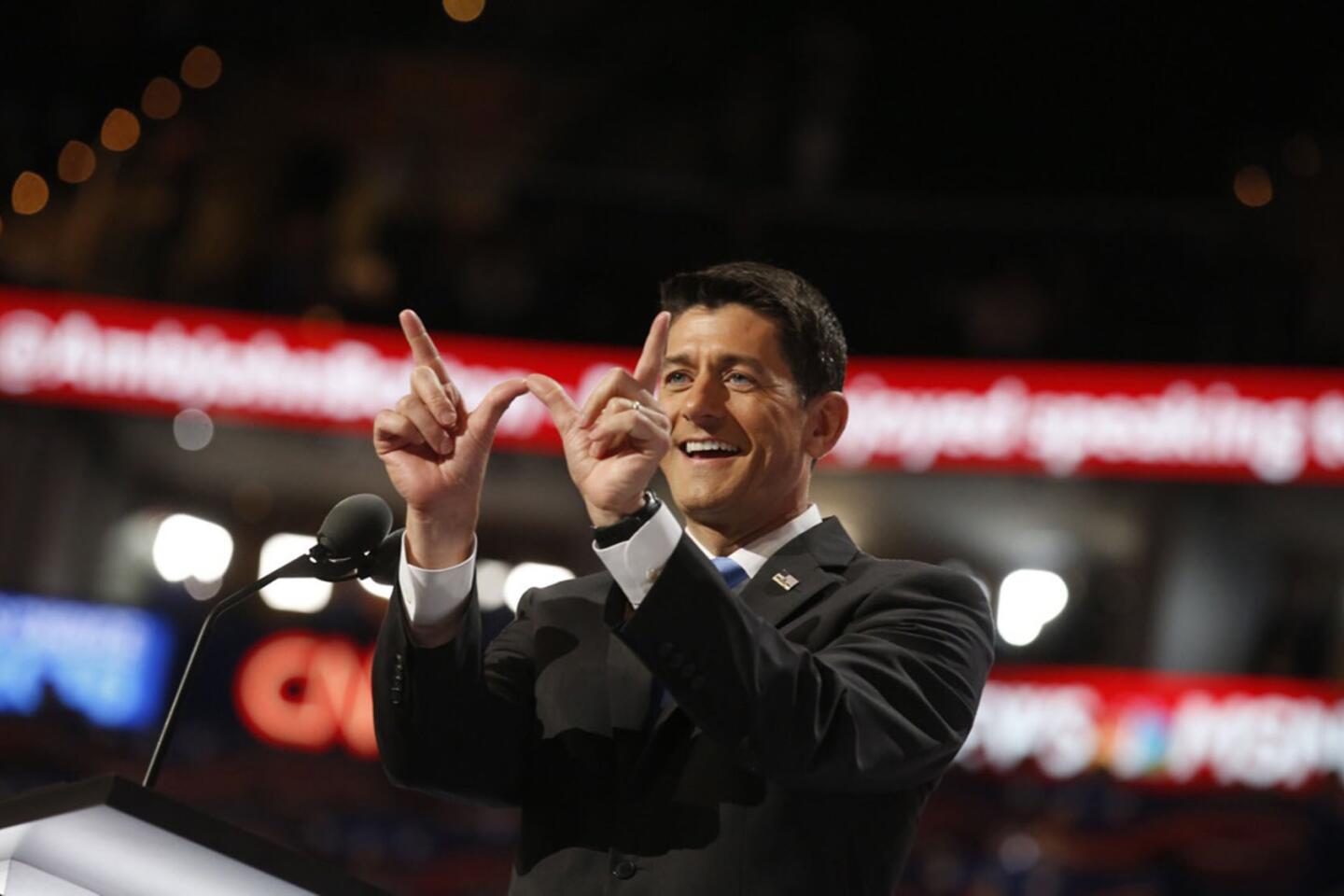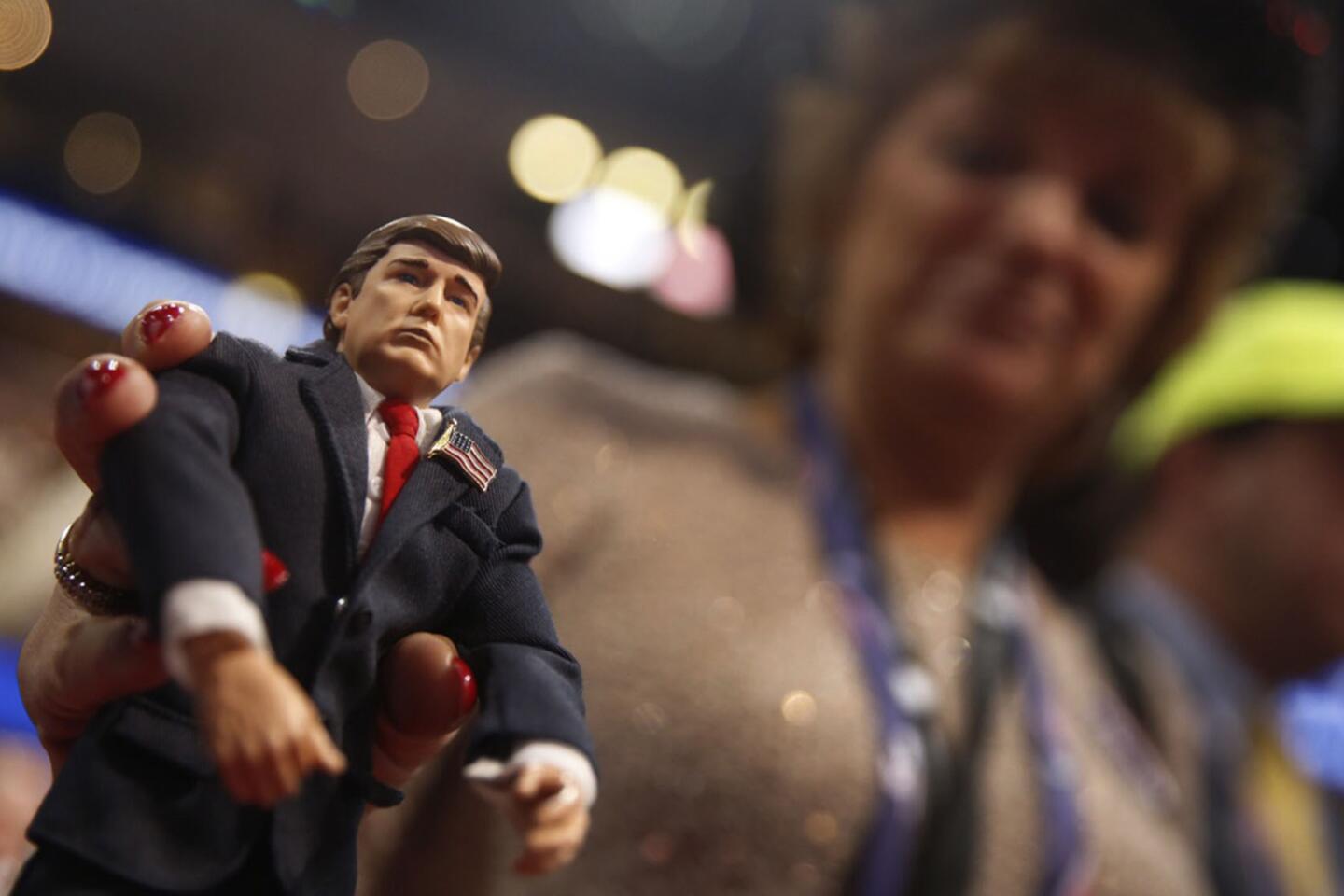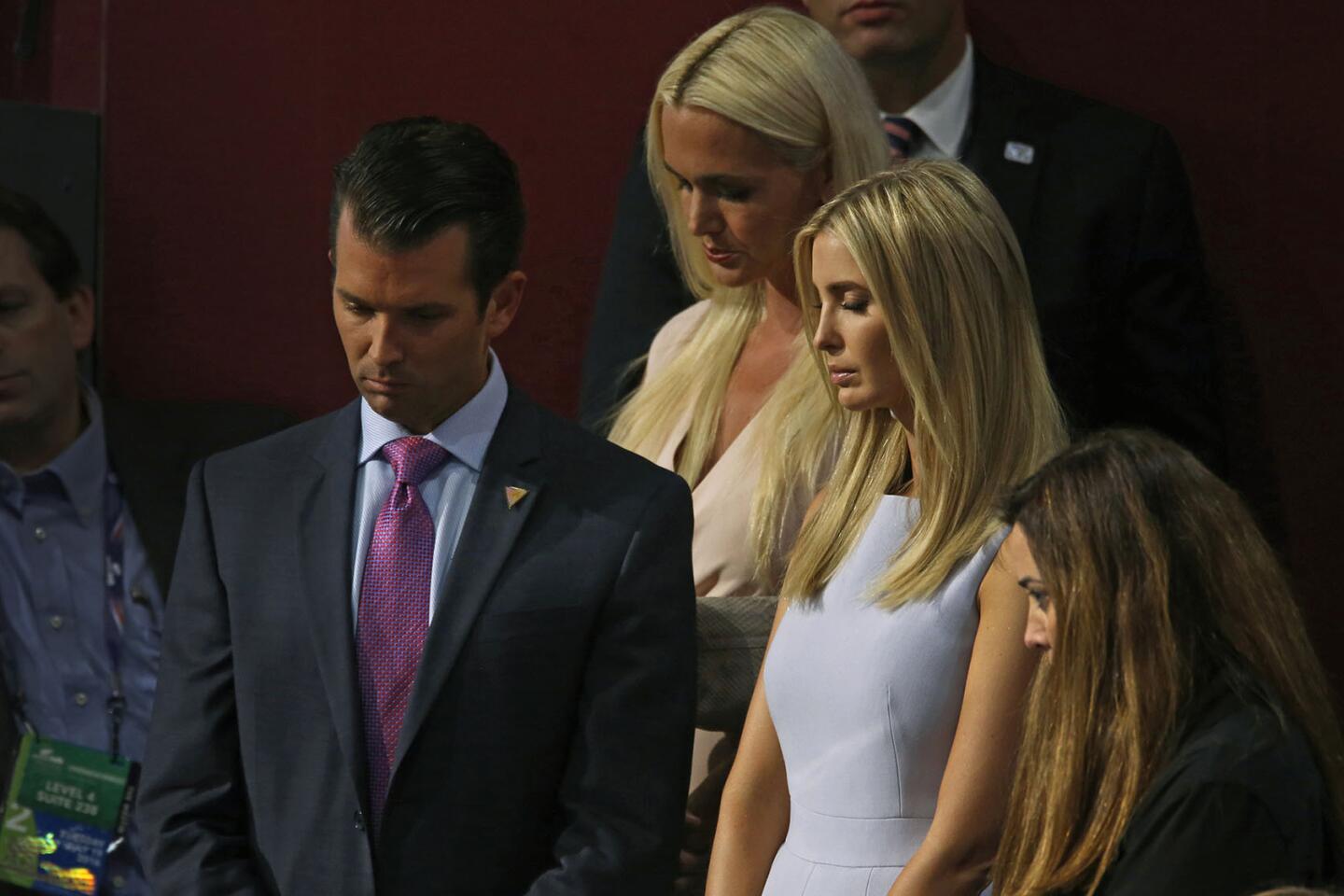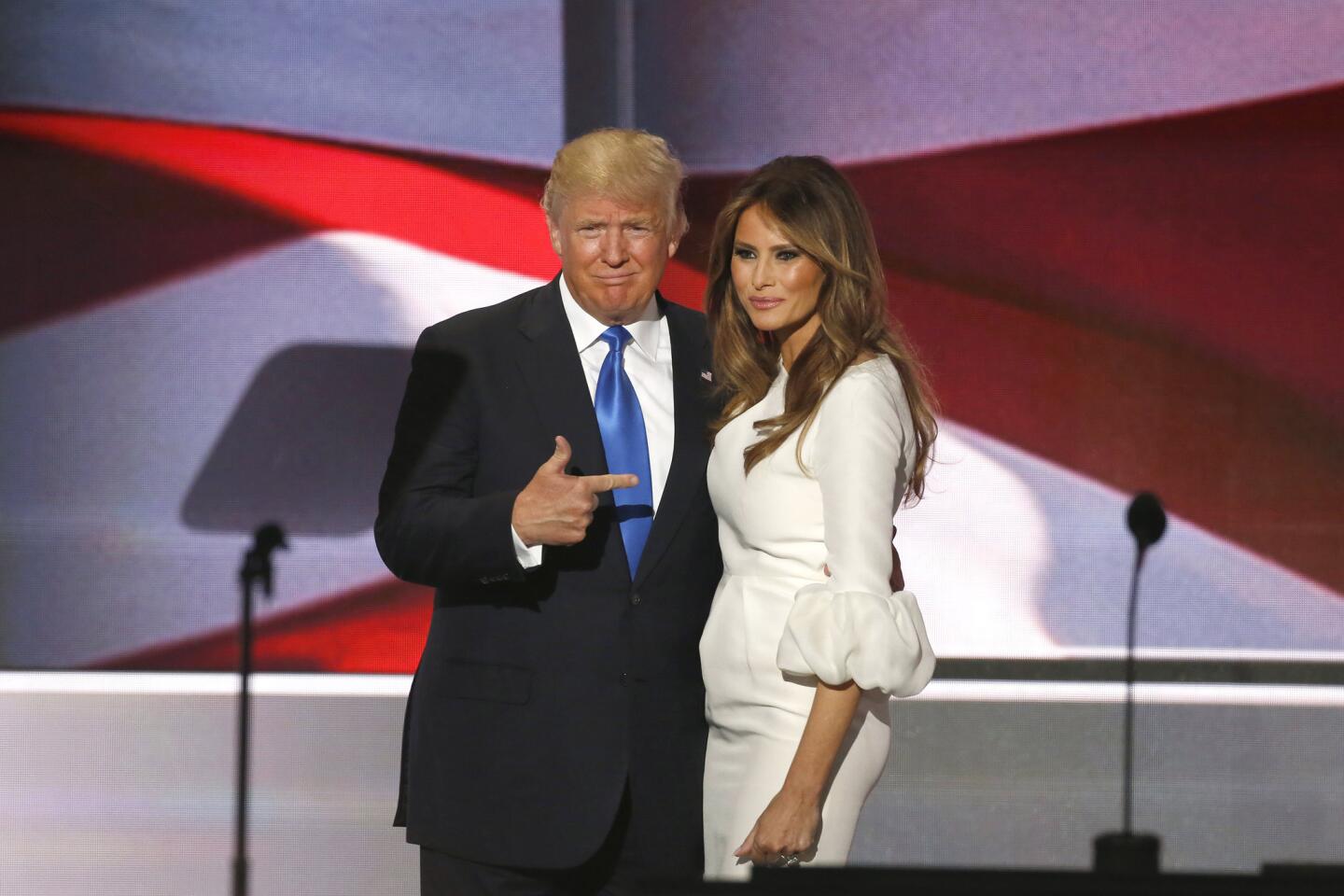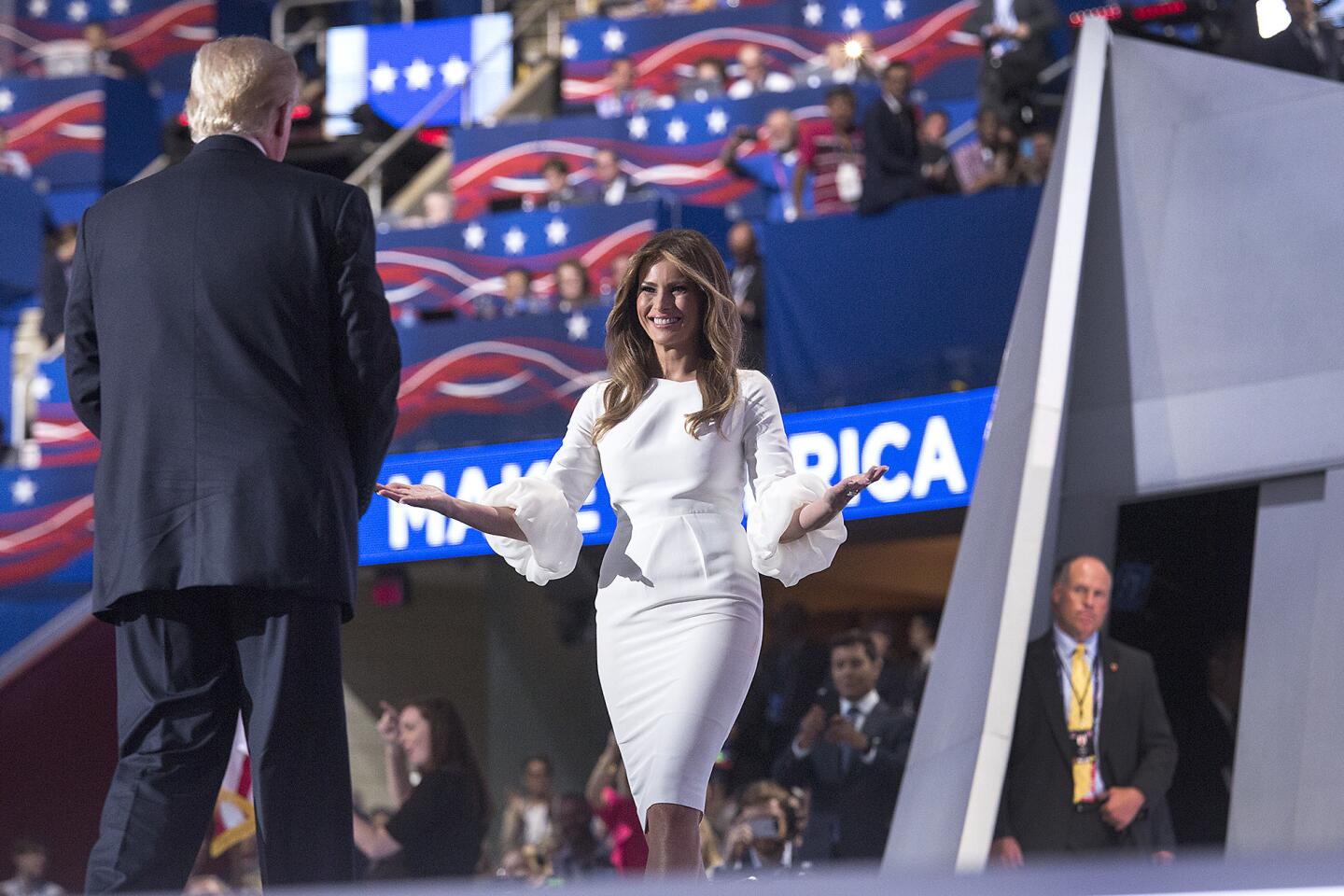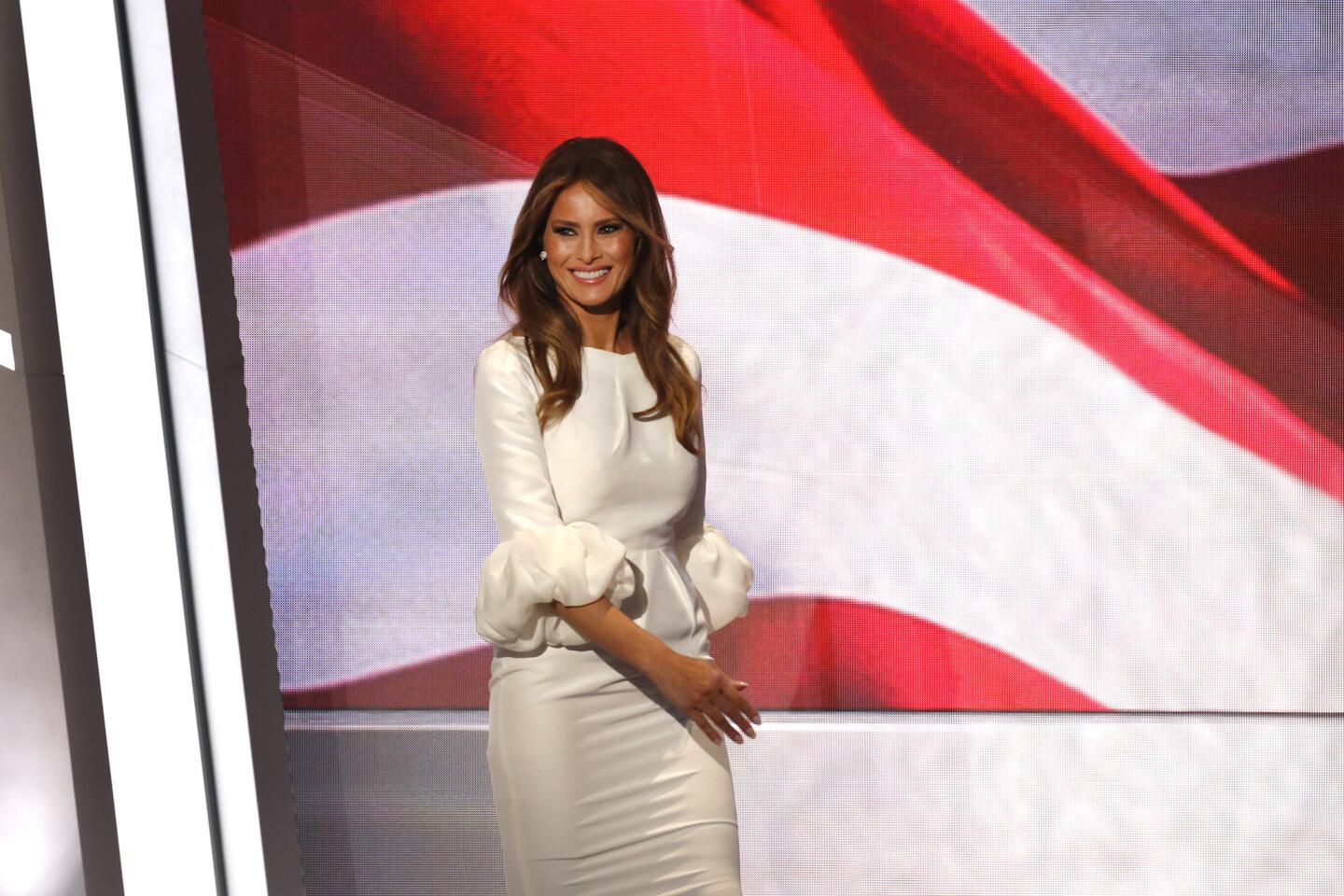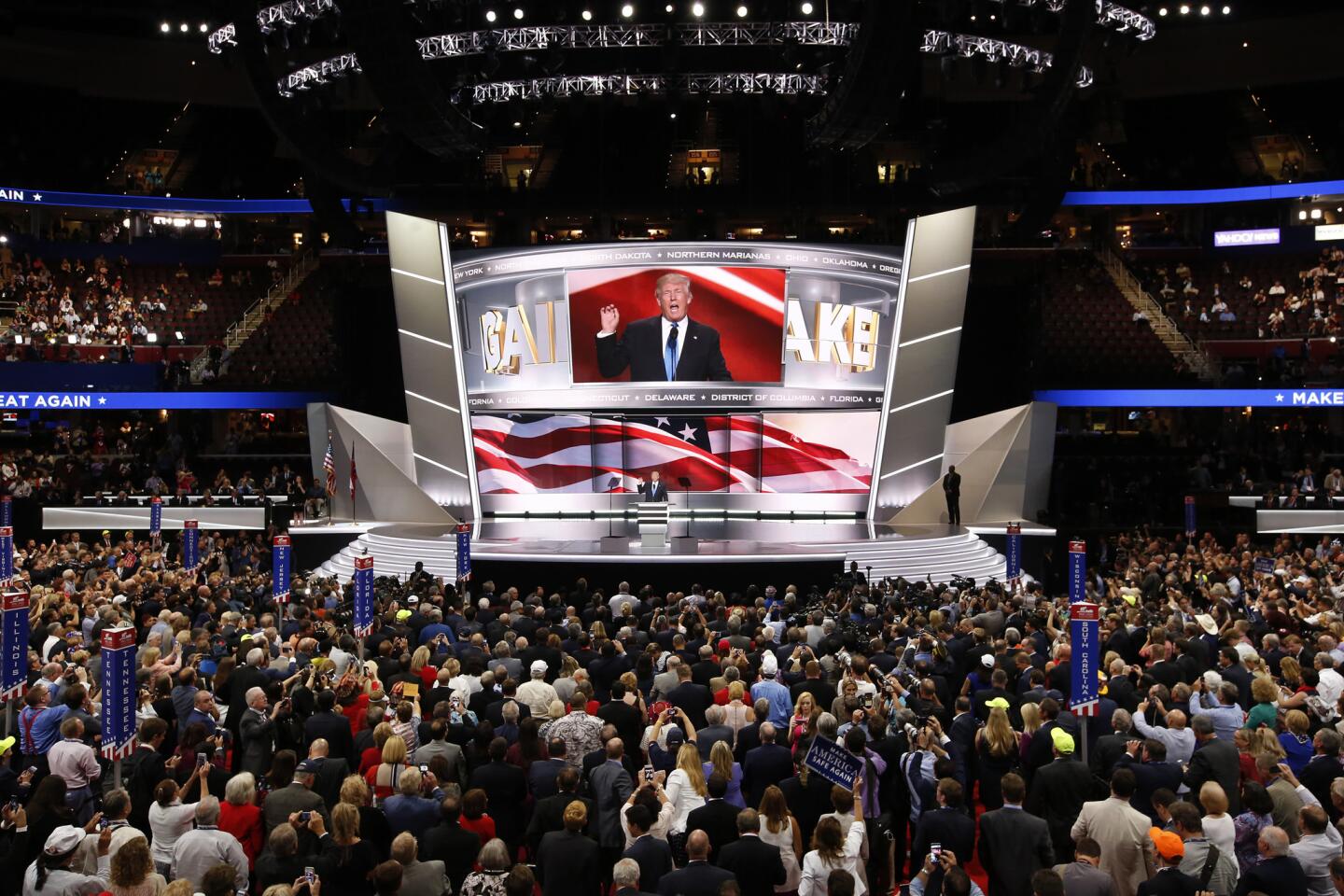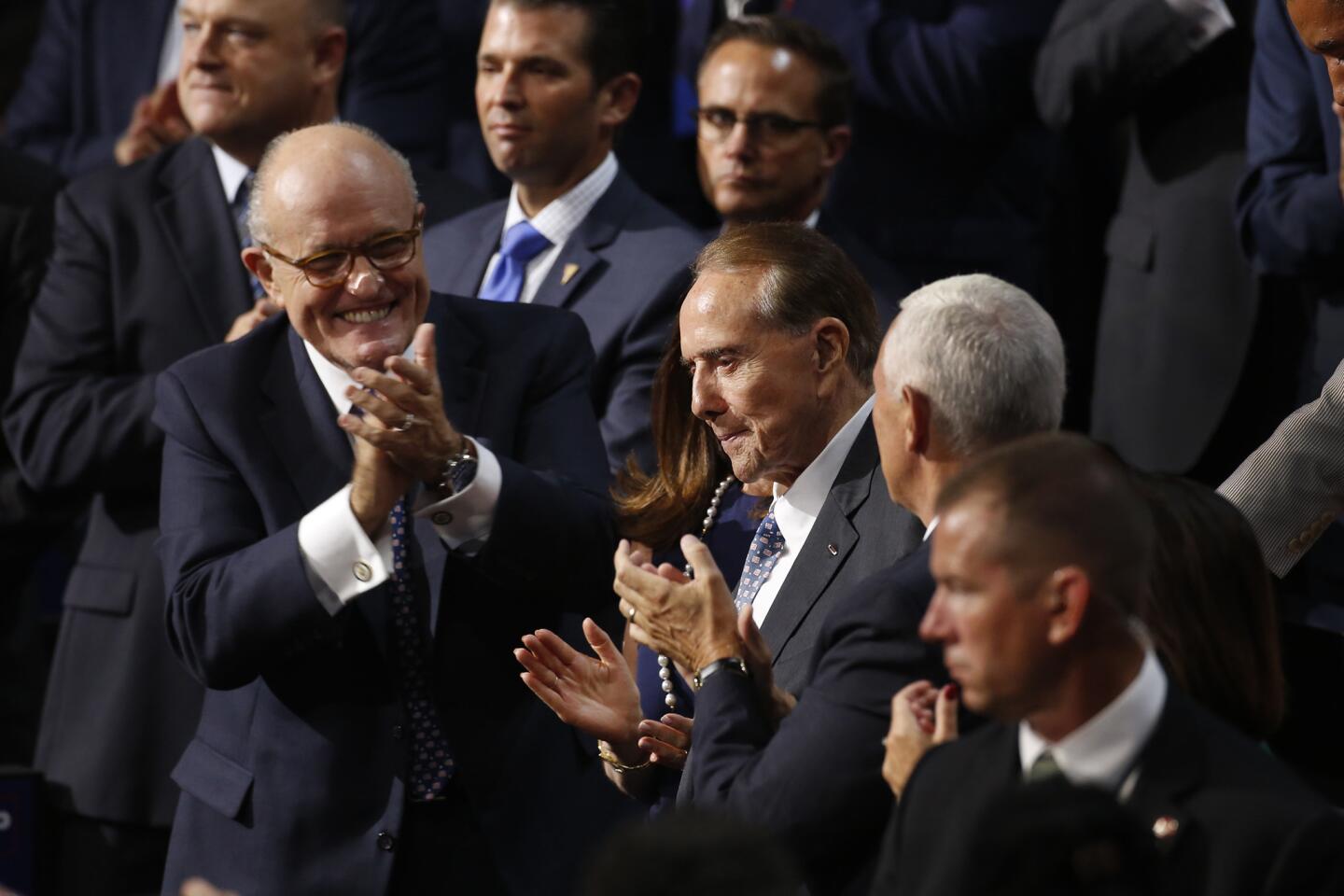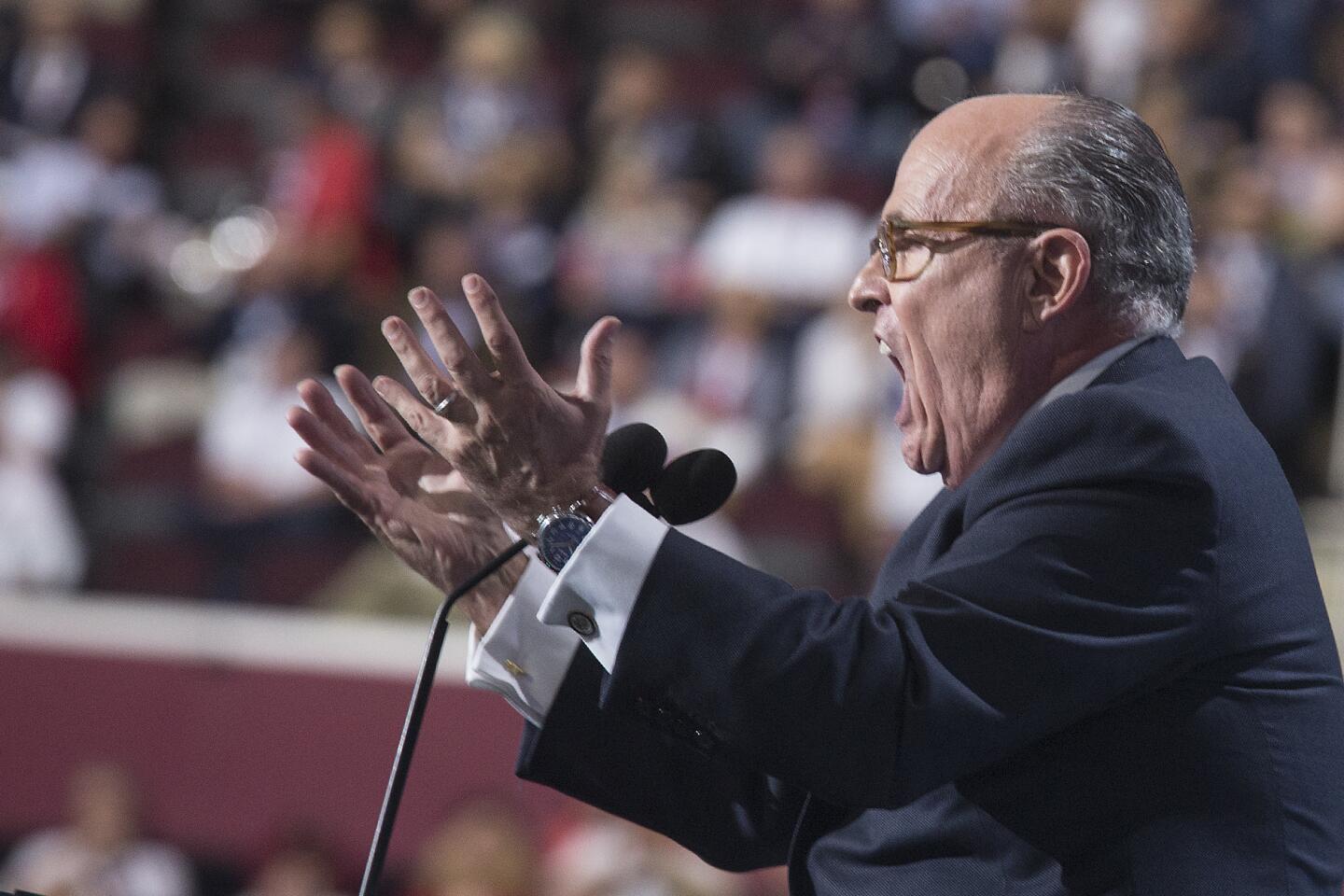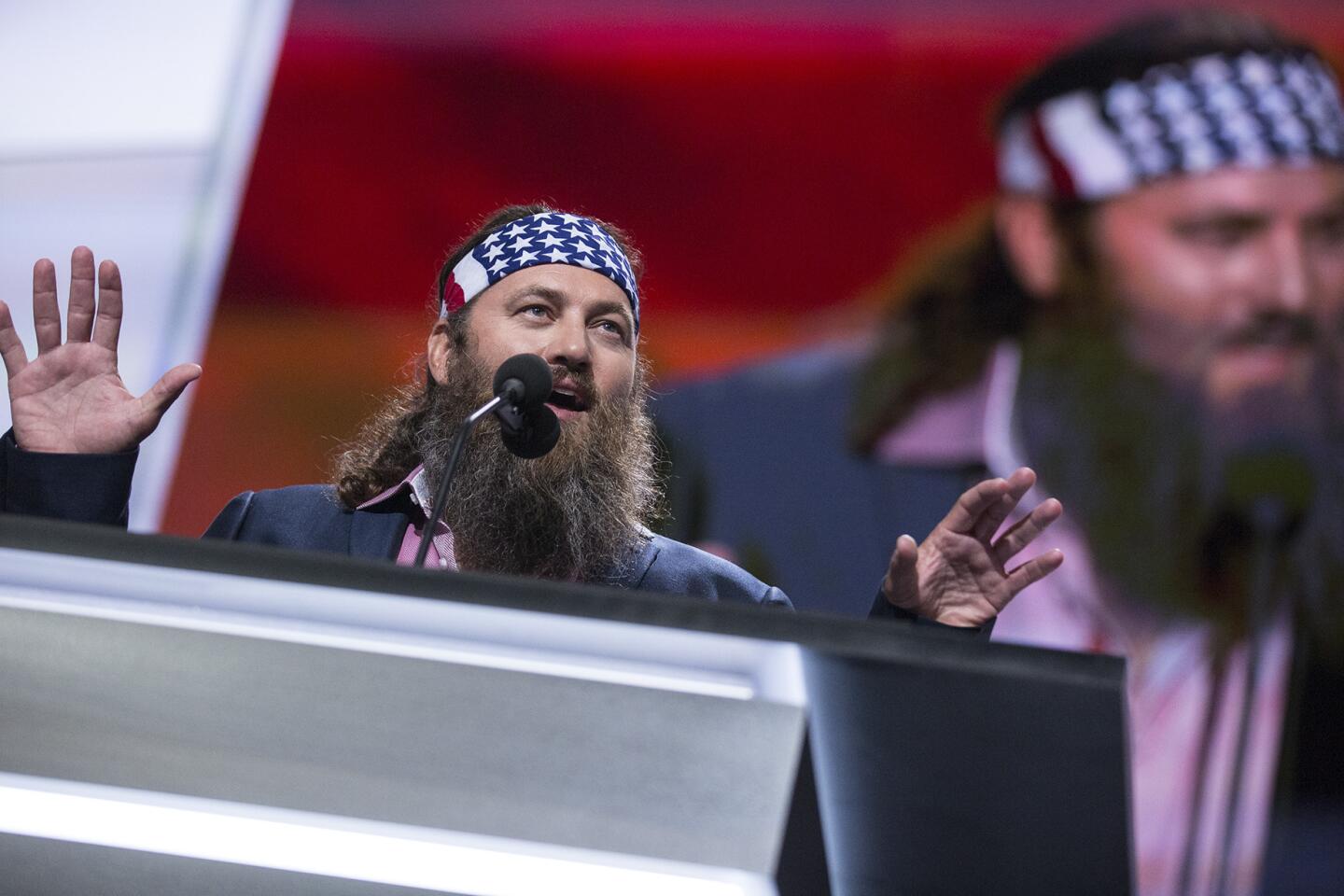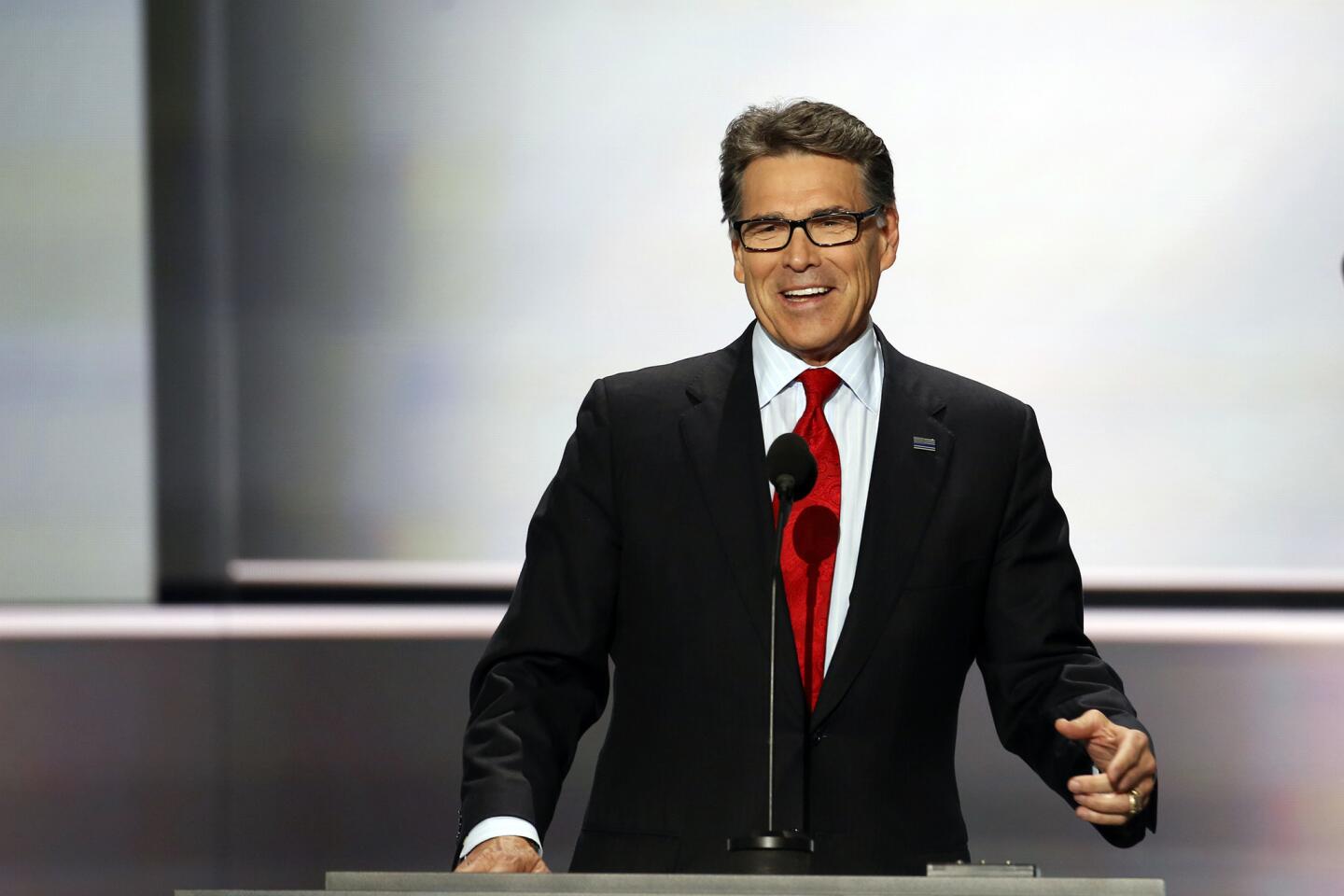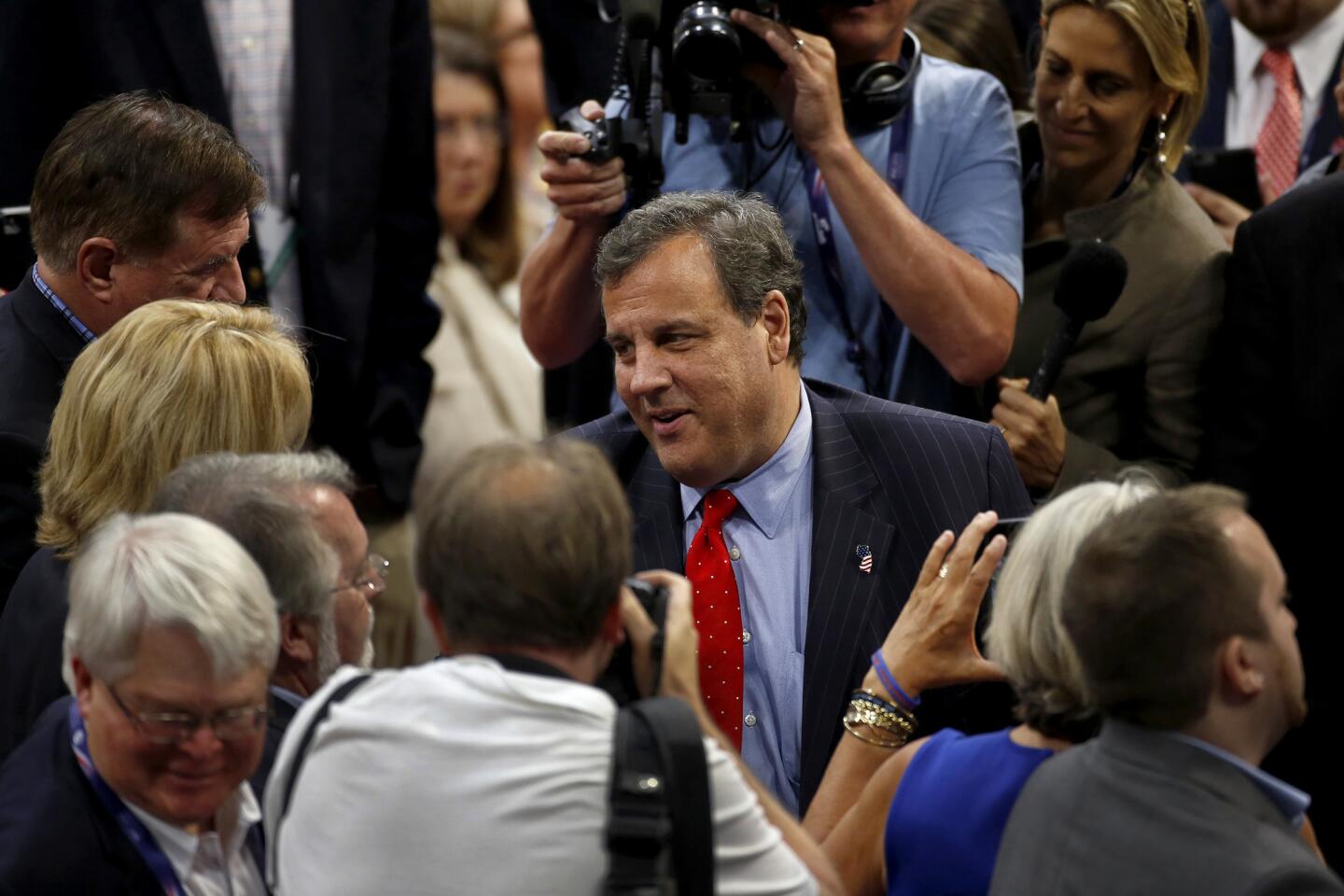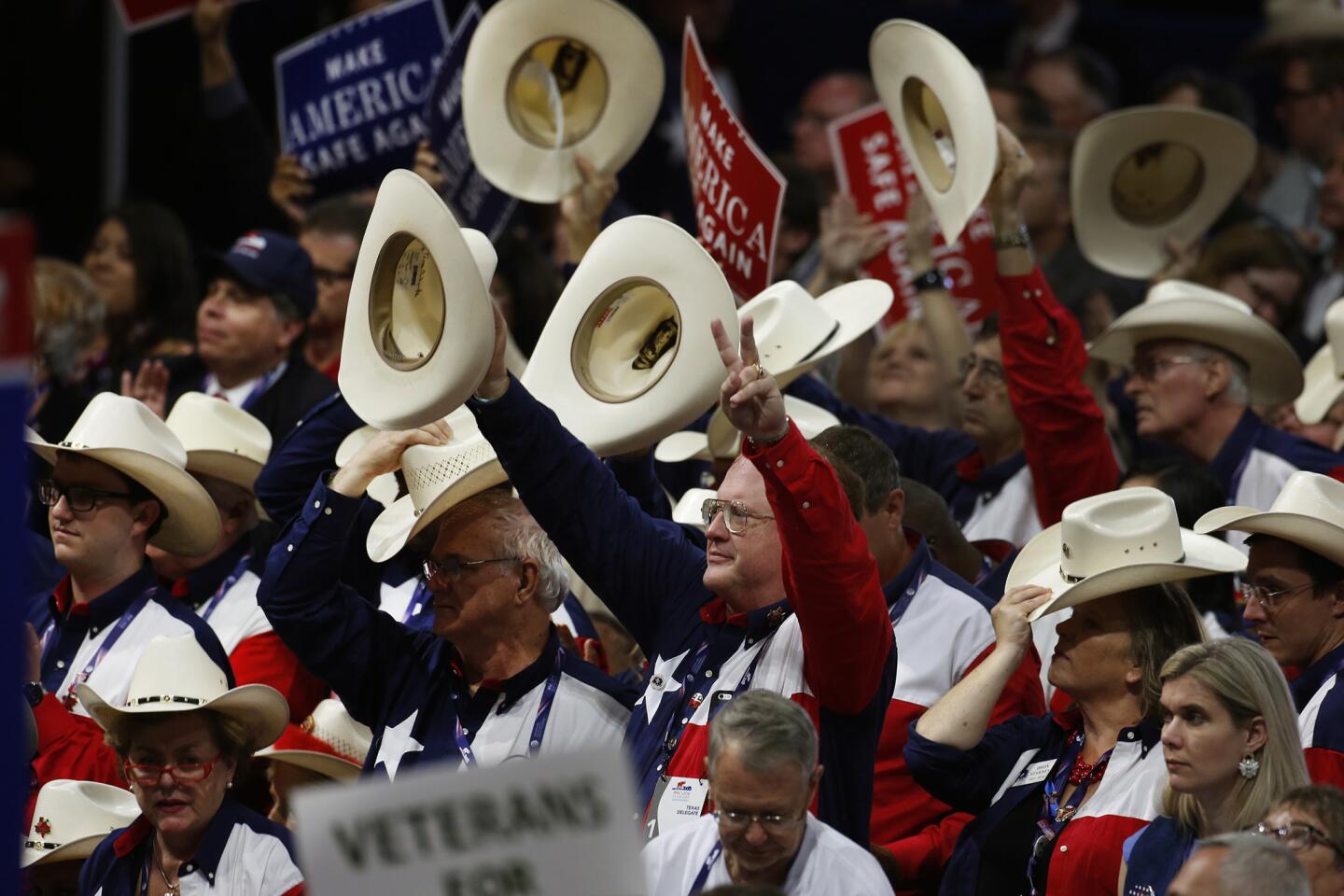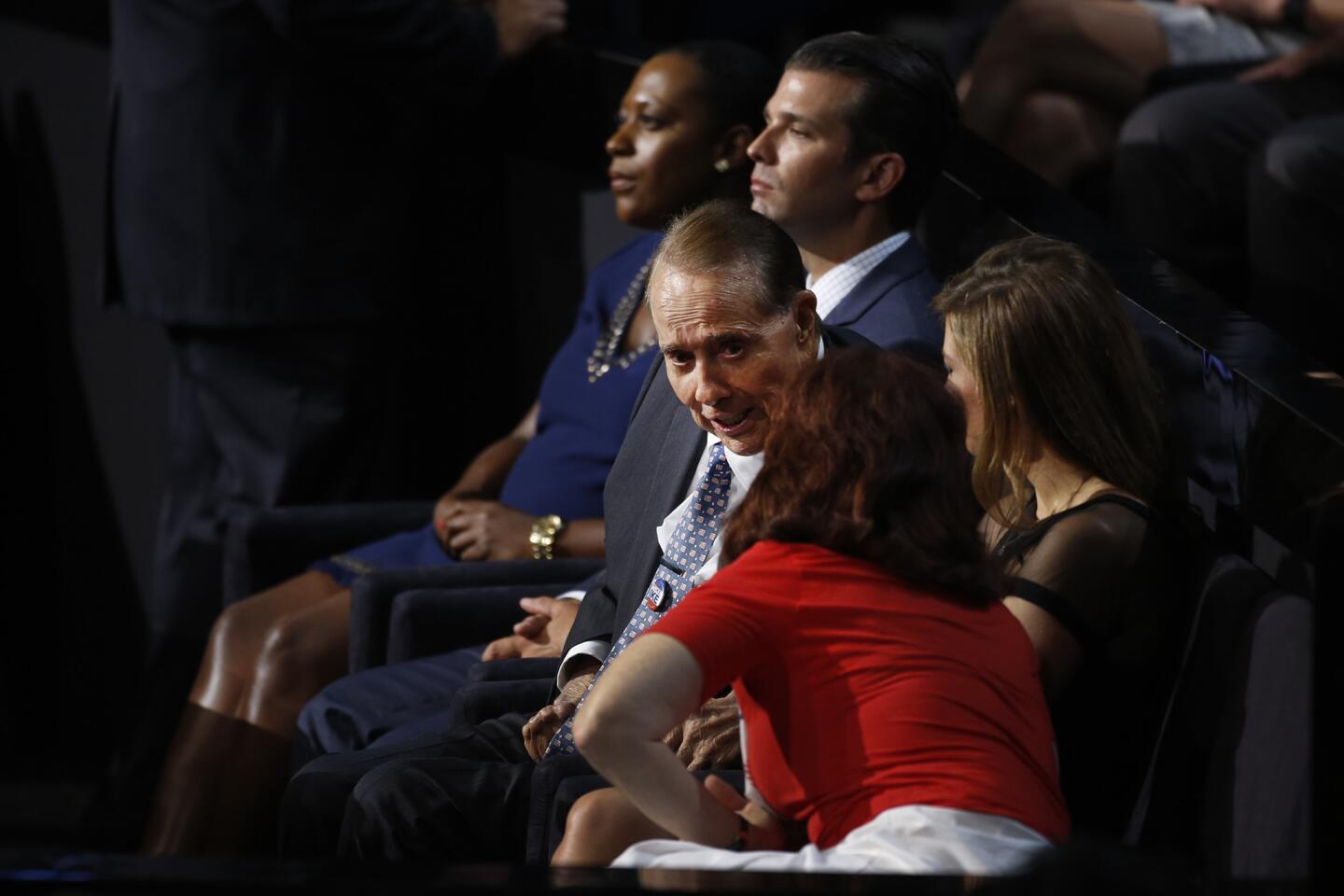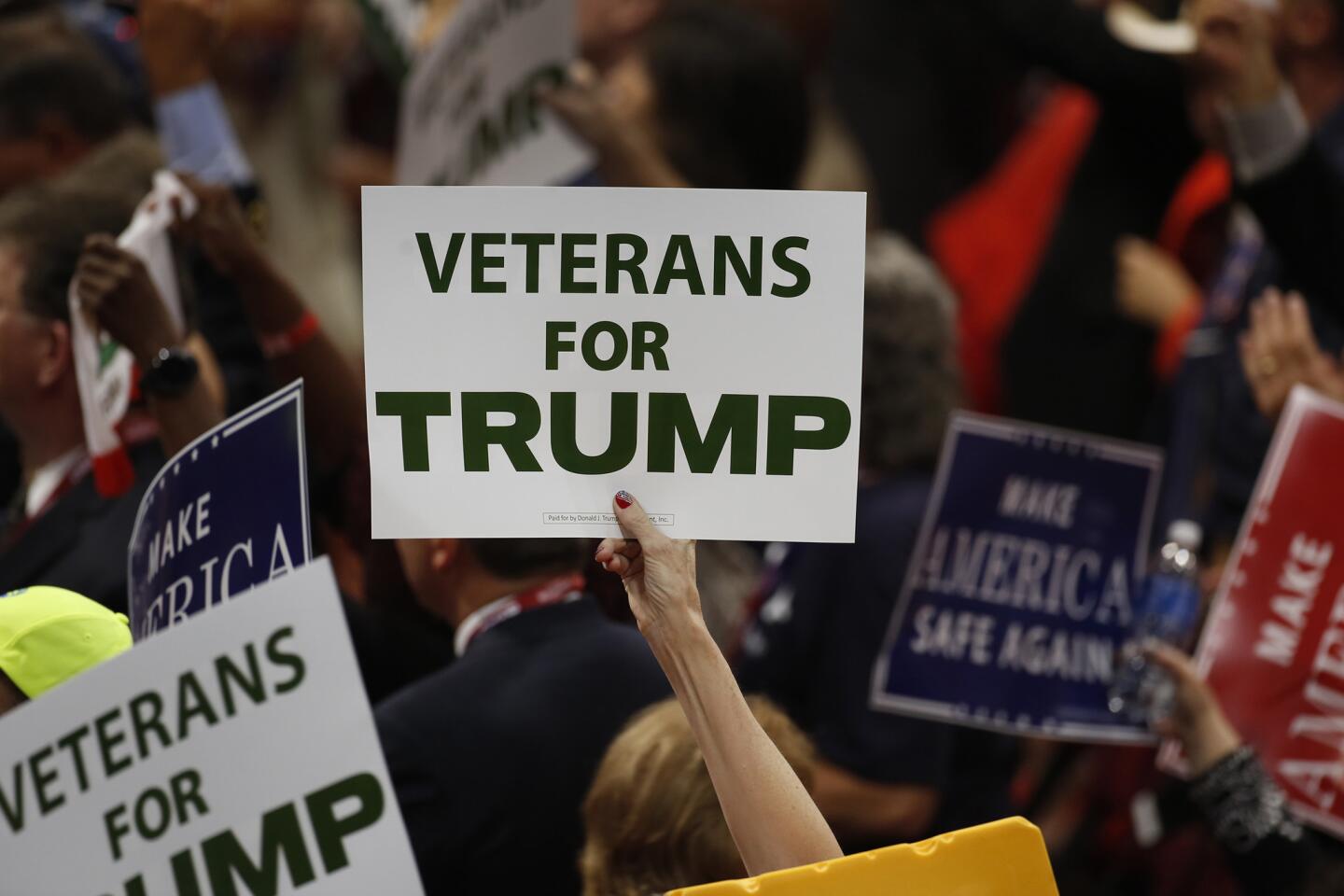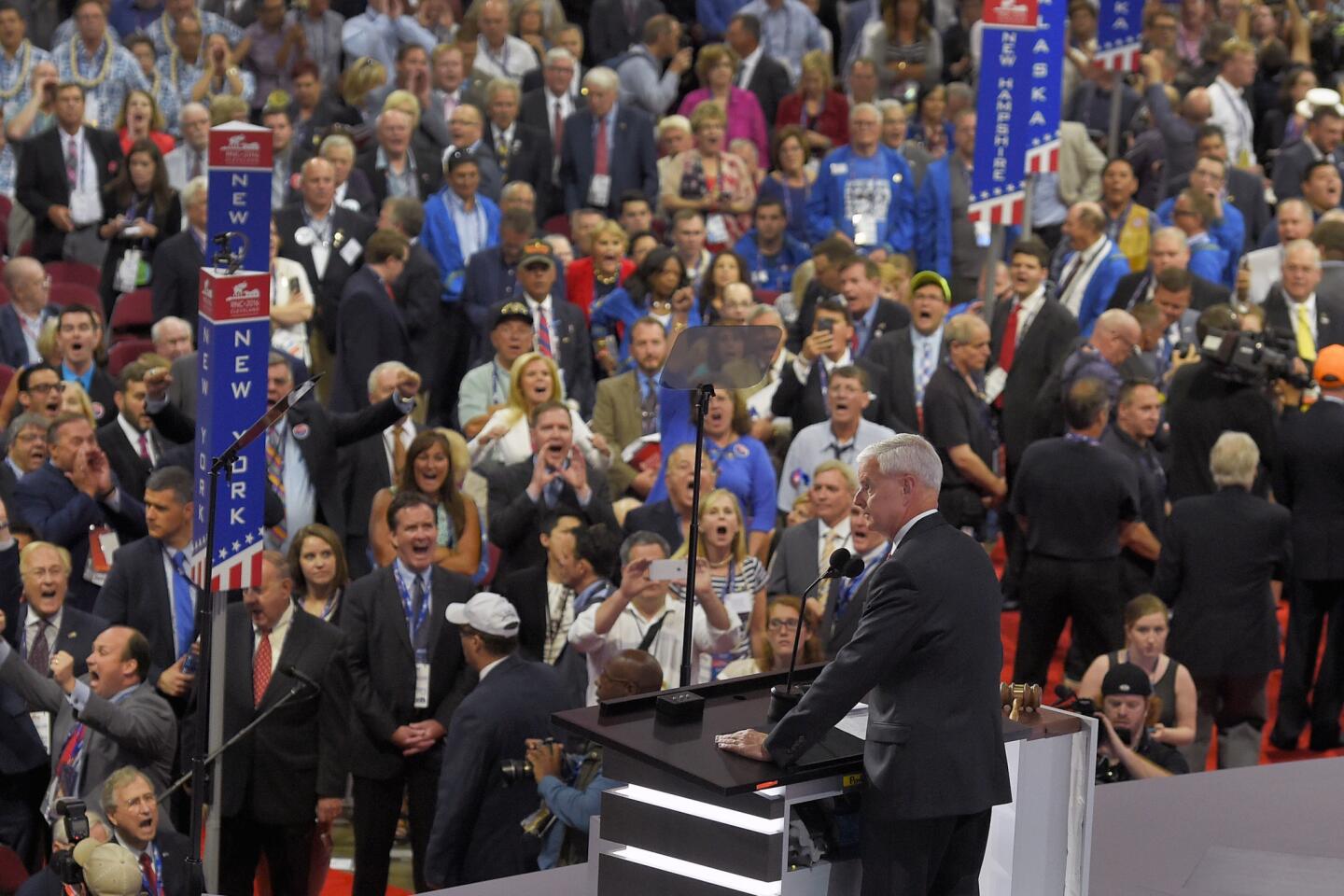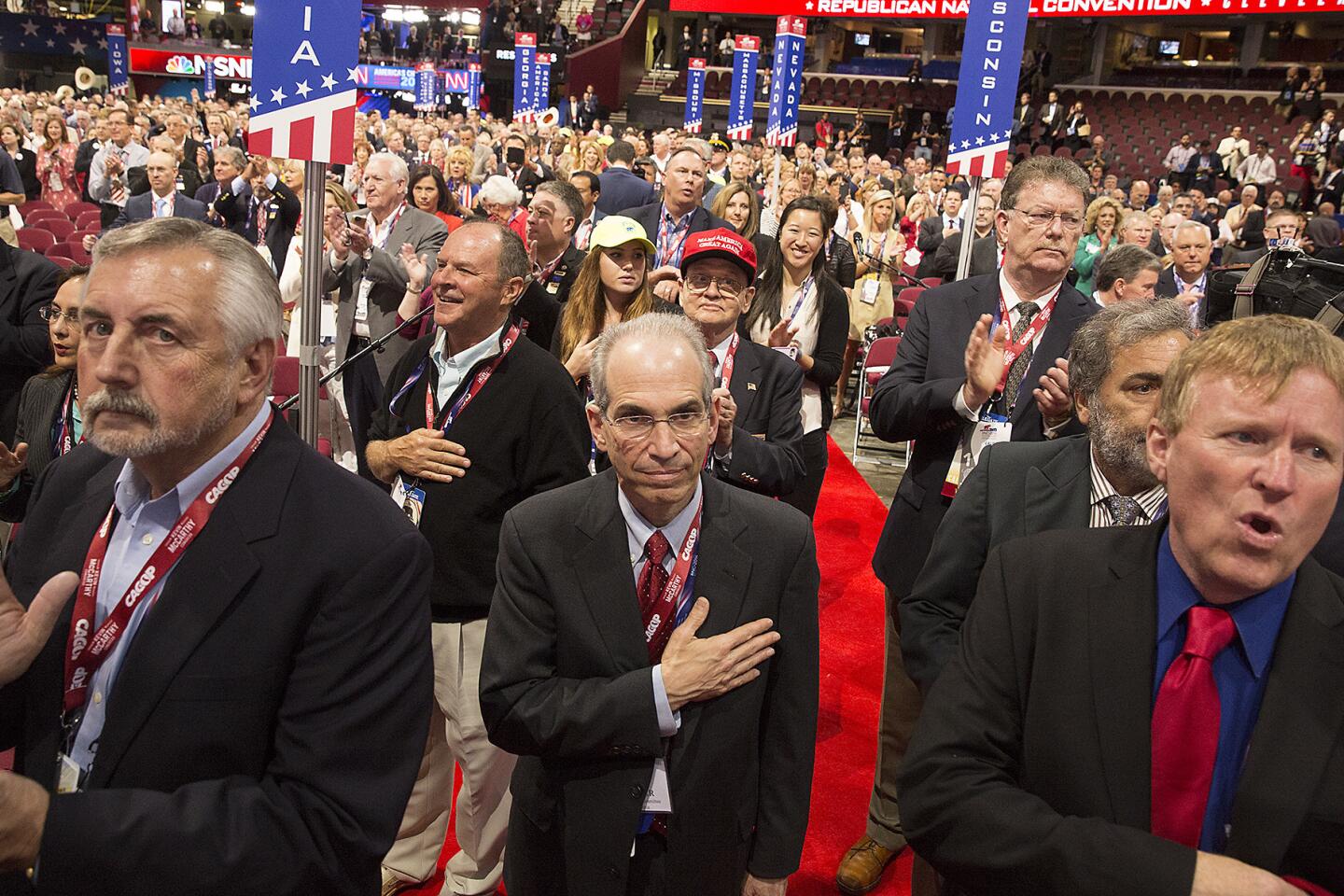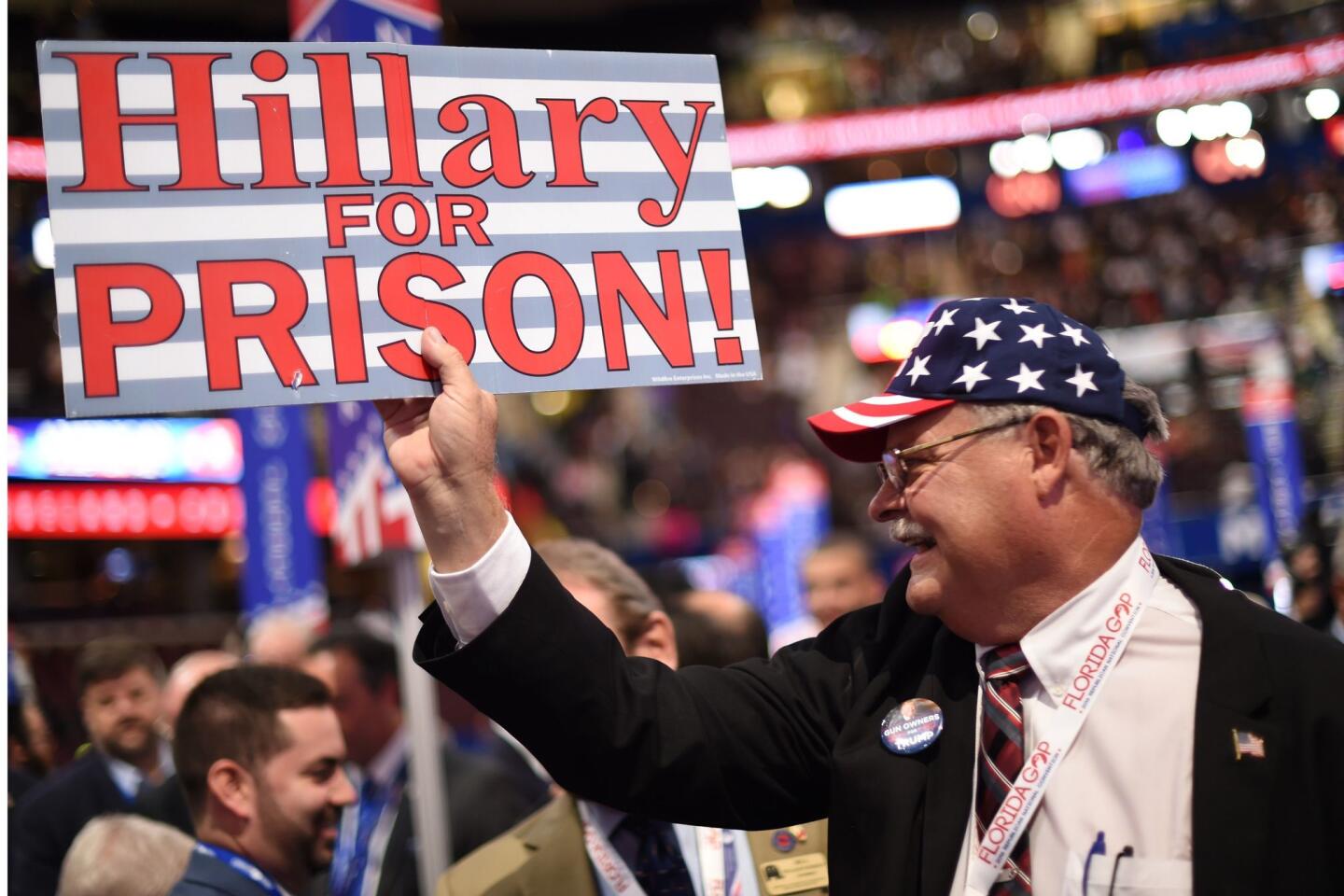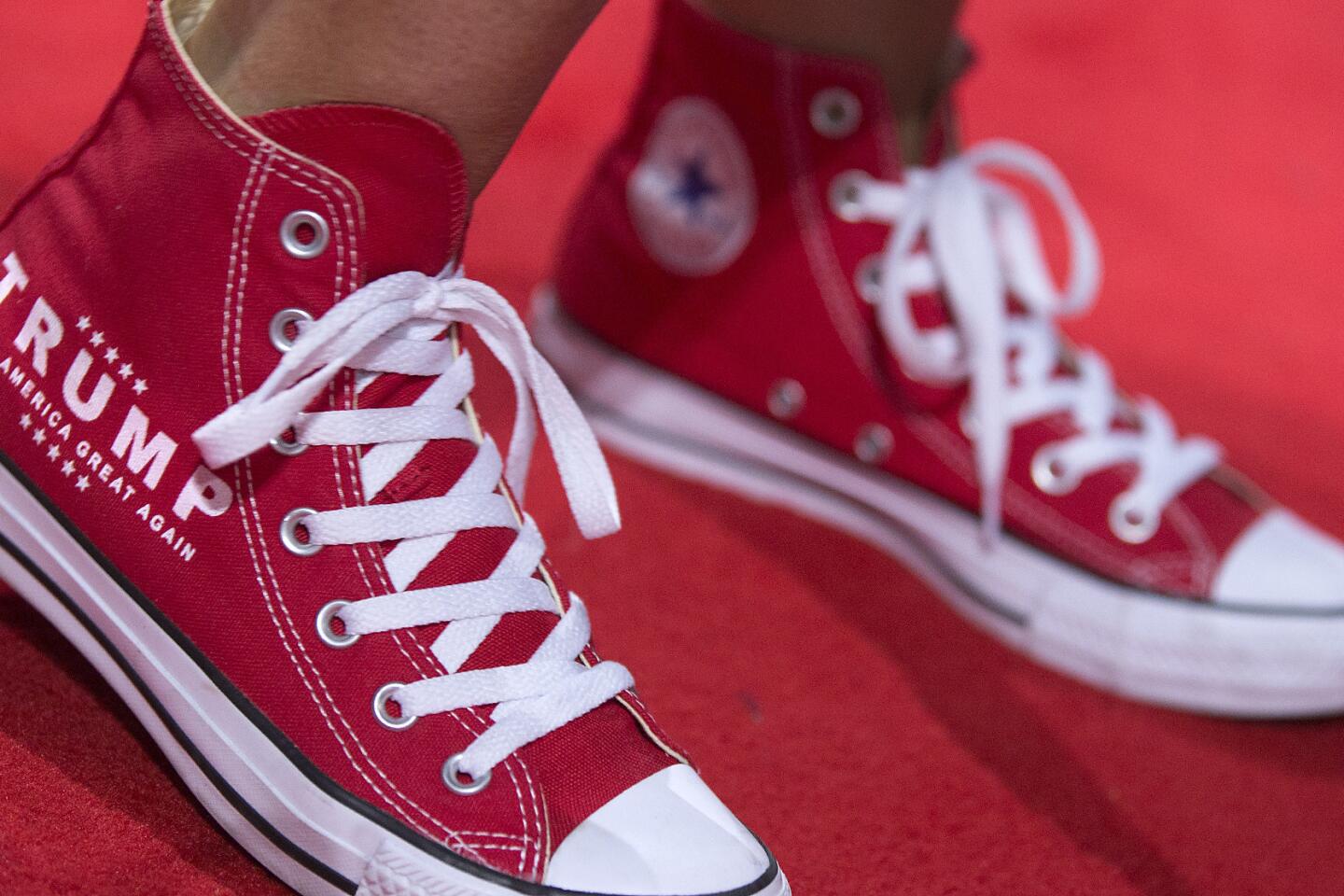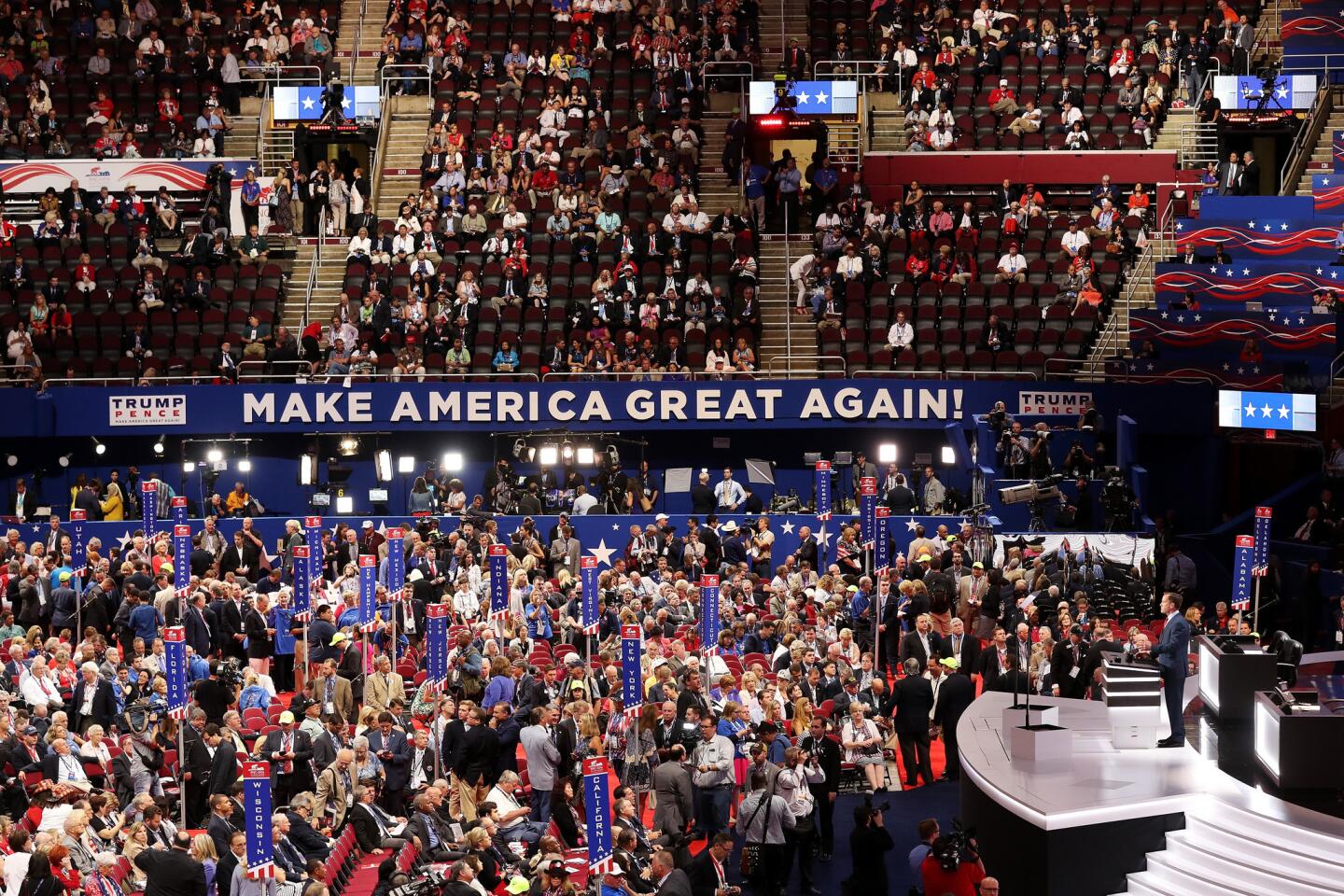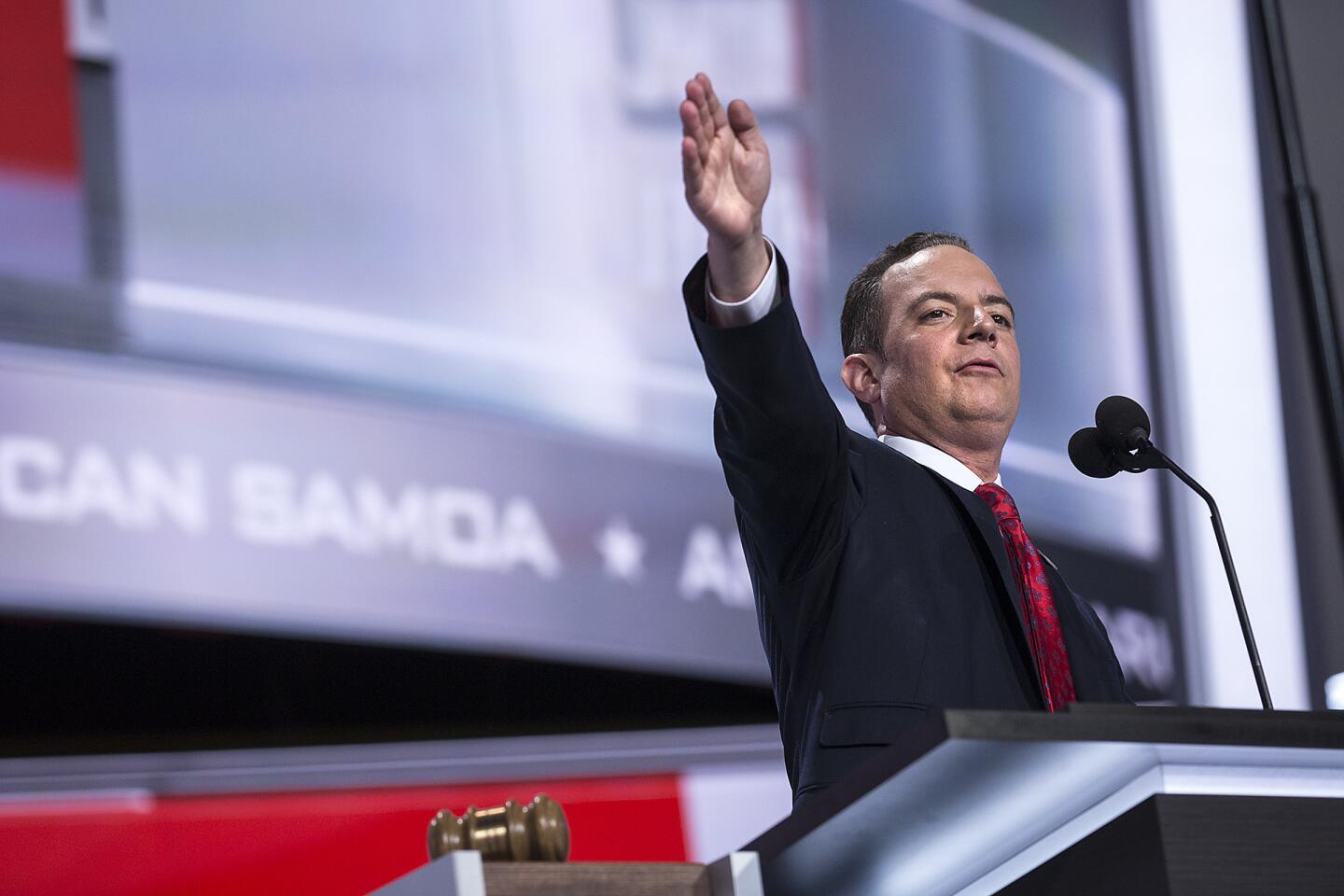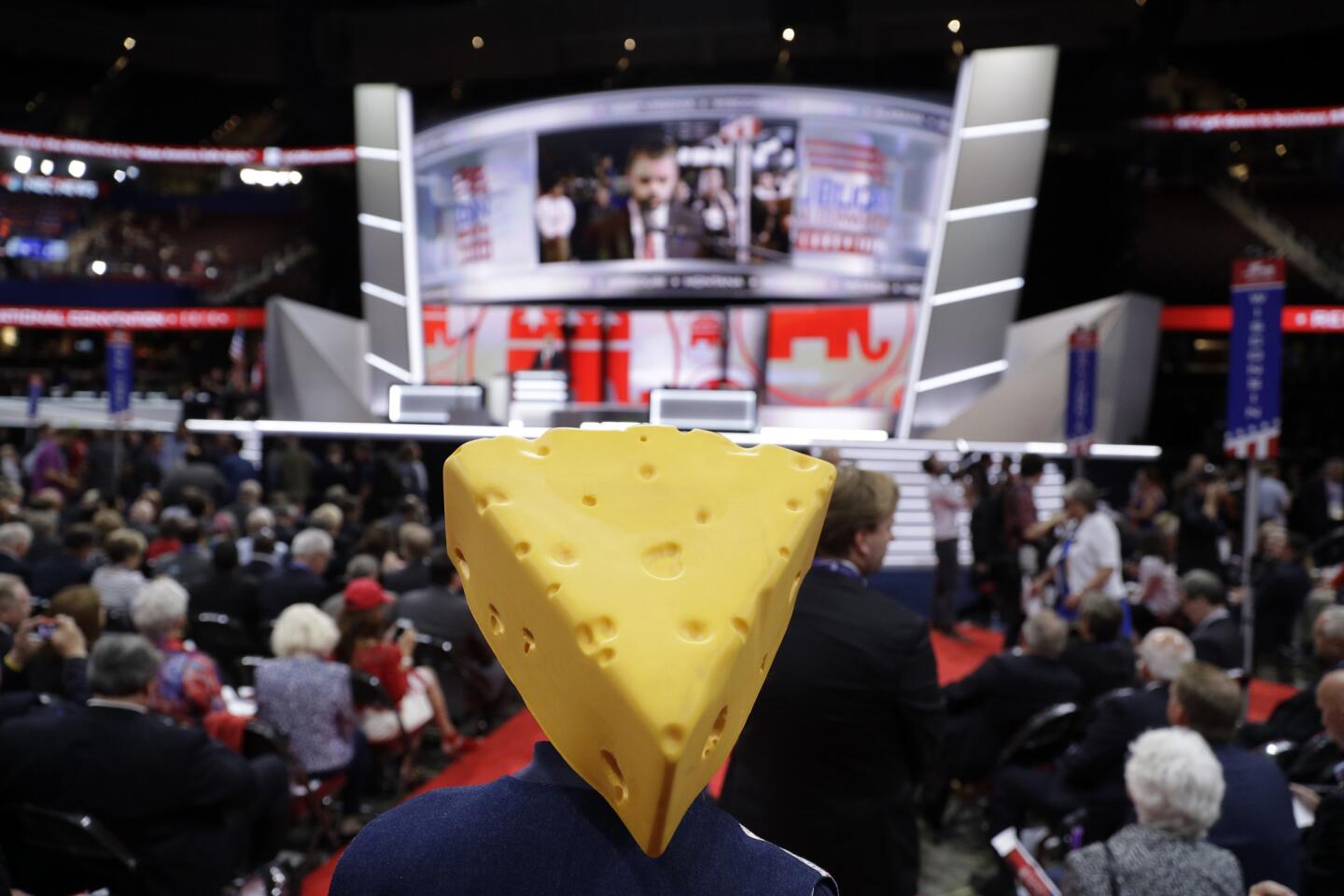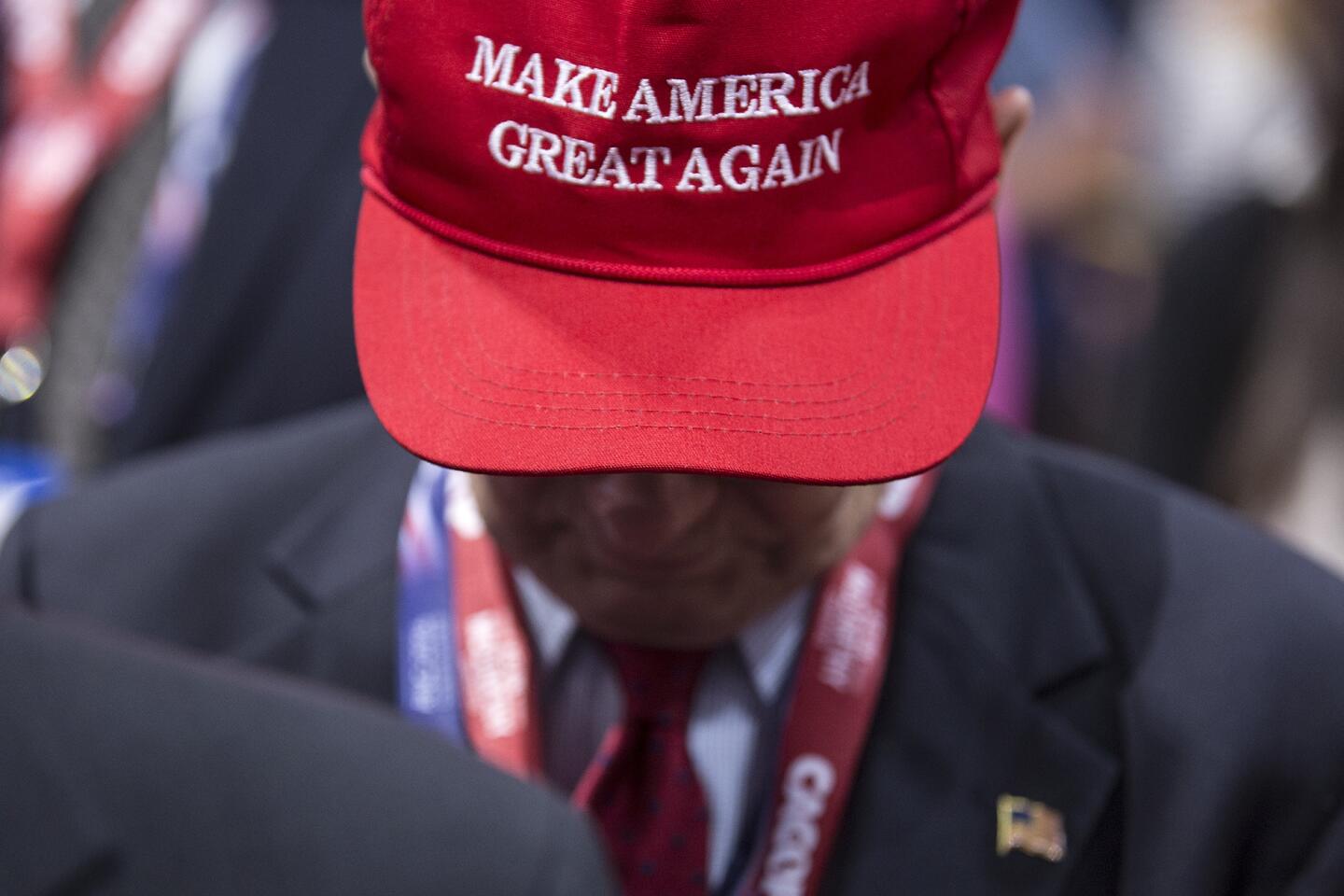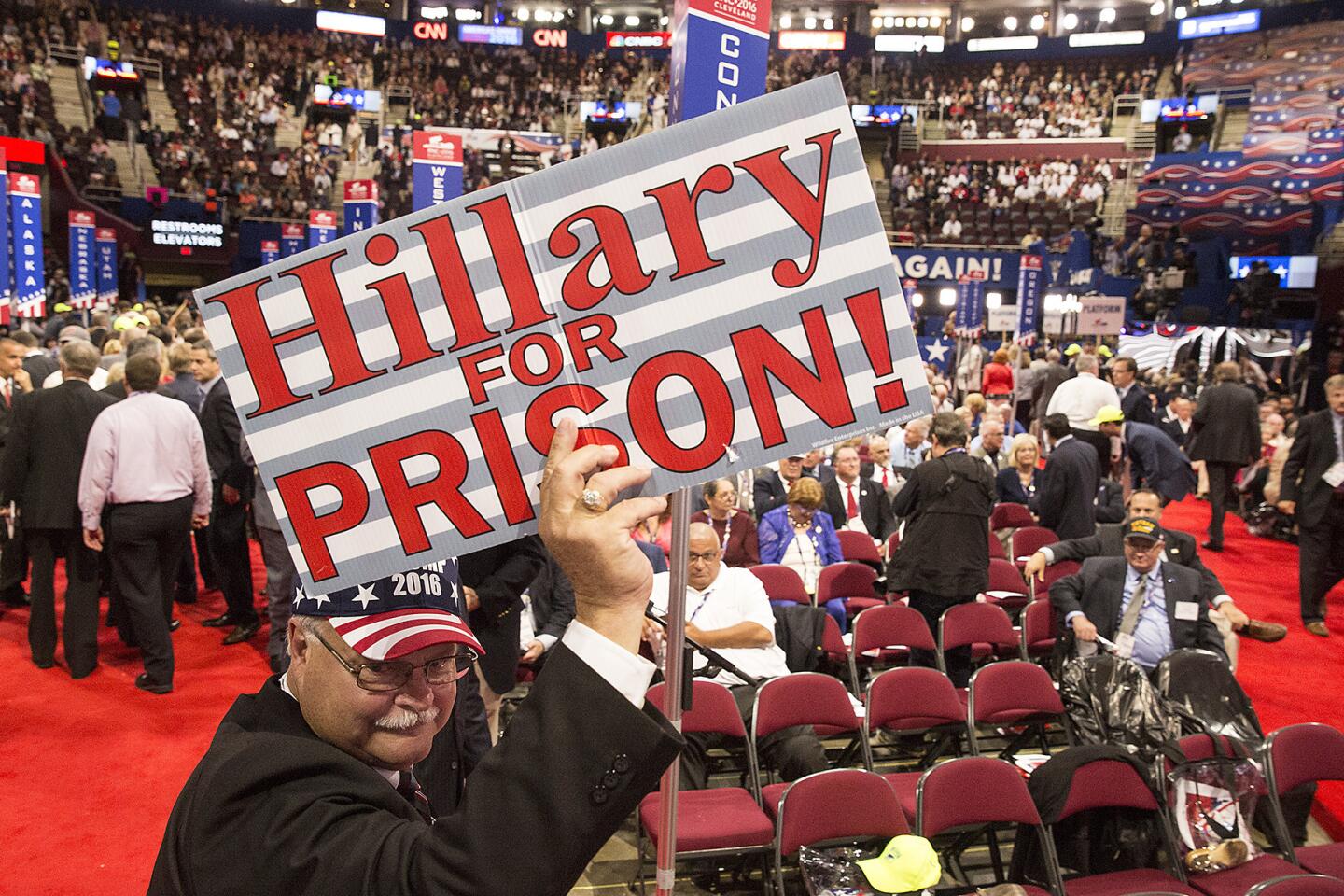Donald Trump brags about bringing in voters. He doesn’t mention the ones he might be chasing away
- Share via
Reporting from Cleveland — Among Donald Trump’s proudest boasts is his claim to have brought millions of new voters into the Republican Party.
Part of his strength, his son Donald Trump Jr. said in Cleveland, is his ability to speak to people who “aren’t necessarily the traditional Republican voters.”
“Actual workers” — like the people who put up sheetrock in Trump’s buildings — “those are the guys who are going to vote for us because we’re speaking with them, we’re not speaking at them, we’re not lecturing them,” the younger Trump said.
But many party leaders fear Trump has embarked on a zero-sum game: For every new voter he pulls in, they worry, he may chase away an existing Republican.
“The question is whether we can keep the party growing,” House Speaker Paul D. Ryan told reporters this week at a session hosted by the Wall Street Journal. “Are we adding, or just adding and subtracting?”
The answer to that question likely will go a long way toward determining the winner of November’s presidential election. That’s because Republicans have struggled in recent presidential contests to overcome the brutal math of a shrinking voter base.
Democrats consistently win big among the nation’s growing minority populations — African American, Latino and Asian American. To compete, Republicans need ever larger margins among whites.
In Florida, for example — virtually a must-win for the GOP — Latino voters made up 17% of the electorate four years ago, when President Obama narrowly carried the state. They’re likely to be 19% this year, said David Wasserman of the Cook Political Report. That may sound like a small amount, but in a state where the winning margin is often a fraction of a point, it could make a huge difference.
That’s part of the reason that strategists in both parties believe that winning Florida will be “very difficult” for Trump, said GOP pollster Kristen Soltis Anderson.
One way out of the GOP’s demographic cul-de-sac would be to strengthen the party’s appeal to some minority groups, particularly Latinos. GOP officials advocated that path in their so-called autopsy report after Mitt Romney’s loss in the 2012 election.
But when Republican leaders in Congress tried to pursue it in 2013 by backing a compromise with Democrats over immigration, a critical issue for many Latinos, GOP voters revolted, forcing their leaders to back down.

Watch: Day Three of the Republican National Convention in less than 3 minutes. More convention coverage at latimes.com/trailguide.
Trump has adopted a very different approach. His strategists argue that a large pool of blue-collar white voters skipped the elections in 2008 and 2012 because the party had ignored them, pushing an agenda tilted toward the more affluent.
The party can prevail by motivating those voters to come to the polls, they say.
“The Republican Party was veering very close to becoming the party of the elites” over the past couple of election cycles, said Kellyanne Conway, a senior advisor to Trump’s campaign.
“Donald Trump has made it the party of the worker” with his advocacy of tougher trade policies, opposition to illegal immigration and embrace of blue-collar values, Conway said. That will put some states into play that Democrats have consistently won in recent elections, she said, citing places like Pennsylvania, Michigan and, perhaps, Wisconsin.
But flipping states is possible only if Trump can bring in new voters without alienating existing ones. So far, he appears to be pushing some voters away at nearly the same pace he attracts others, pollsters in both parties say.
The critical divide in the GOP — the one Trump must find a way to bridge — runs along lines of education and social class.
Among white voters without a college degree, Trump does better in many polls than Mitt Romney did four years ago.
But Trump does much worse among those with college degrees. The GOP has carried the group in every election going back at least to the 1950s, but Trump is losing it, according to most surveys.
In the USC Dornsife/Los Angeles Times Daybreak tracking poll of the election, for example, Trump was leading Hillary Clinton 55% to 26% among white voters without college degrees as of Wednesday. But among whites with college degrees, Clinton led 44% to 39%. Overall, the poll had the two candidates tied.
Democrats concede that Trump will take some blue-collar white voters away from them in places like southwestern Pennsylvania, northeastern Ohio and similar regions across the nation’s industrial belt.
But they believe they will make up the gap by attracting college-educated voters in places like the suburbs of Philadelphia, Cincinnati and Atlanta — evening up the score in the industrial states while making some Sun Belt states, including Georgia, winnable for them.
Many Republican strategists fear the Democrats are right.
Republicans risk a “big tradeoff,” said Soltis Anderson.
The risk for Trump is that the issues, style and approach that appeal so strongly to blue-collar voters are often precisely those that alienate college-educated ones.
One “huge piece” of the problem is the feeling that Trump is racially divisive, Soltis Anderson said. College-educated voters, especially, cite that concern, she said.
Another source of division involves voters’ outlook on a rapidly changing world. “For all of these big, exciting changes in society” over the past couple of decades — the greater racial and ethnic diversity, the rapid changes in technology and the labor force — “there are winners and losers,” she said.
People who have a college degree most often feel like they’re on the winning side; Trump has pitched his appeal to those who feel left out or threatened.
Yet another part of the problem is one of “style,” said Chris Wilson, a Republican strategist and pollster for Sen. Ted Cruz of Texas.
“The schoolyard taunts” and macho rhetoric of Trump’s campaign “turn off college-educated voters,” he said. So, too, does the black-and-white certainty with which Trump views the world.
Election 2016 | Live coverage on Trail Guide | Sign up for the newsletter
Part of that disconnect surfaced in a brief exchange Wednesday between Donald Trump Jr. and a voter — a self-described “recovering Republican” — who said he was trying to decide which candidate to vote for.
The voter, Reed Benet, a venture capitalist and former Marine Corps officer from Birmingham, Mich., asked the younger Trump to talk about how his father responded when someone told him he had made a mistake and what lessons he took from mistakes.
The younger Trump avoided a direct answer, saying that his father always sought advice before making decisions but that “I haven’t often seen him be wrong.”
That was precisely the wrong answer for Benet, who said afterward that he was more convinced than ever that the elder Trump does not acknowledge the world’s complexity.
For now, although he agrees with Trump on several major issues, Benet said he planned to vote for Hillary Clinton.
“Being a liar is not a disqualifying event for president of the United States,” he said. “I feel terrible saying that.”
For more on Politics and Policy, follow me @DavidLauter
ALSO
The revolution may be delayed: A reporter’s diary from outside the GOP convention
More to Read
Get the L.A. Times Politics newsletter
Deeply reported insights into legislation, politics and policy from Sacramento, Washington and beyond. In your inbox twice per week.
You may occasionally receive promotional content from the Los Angeles Times.
